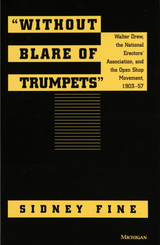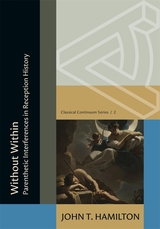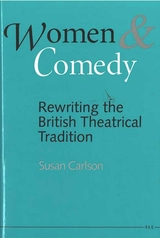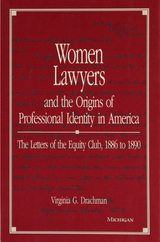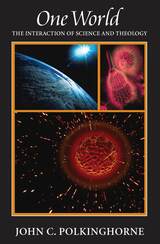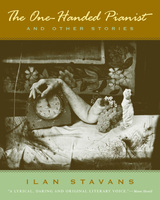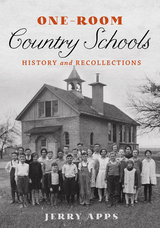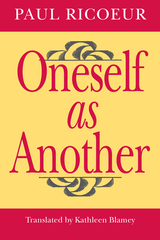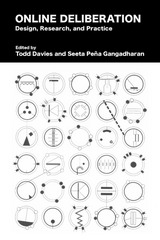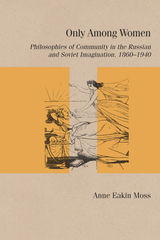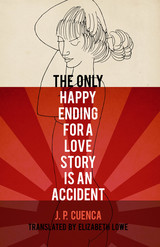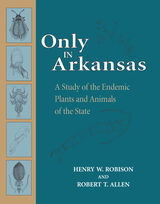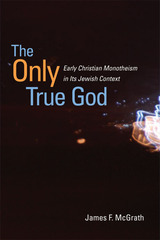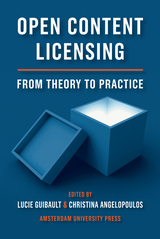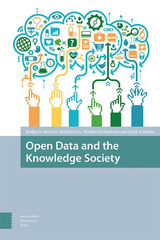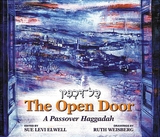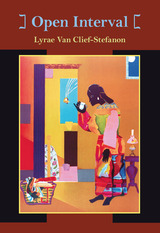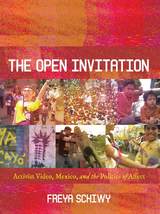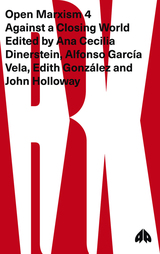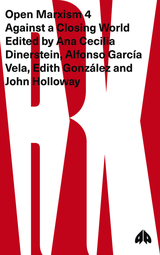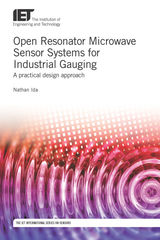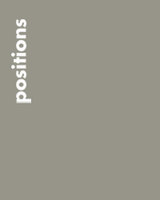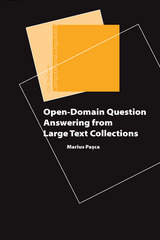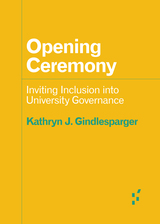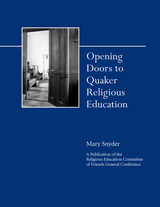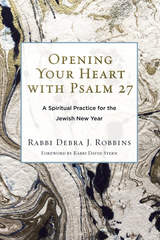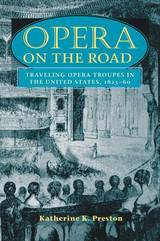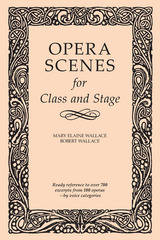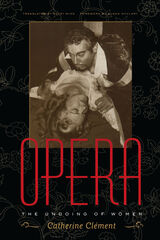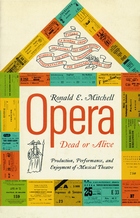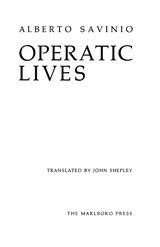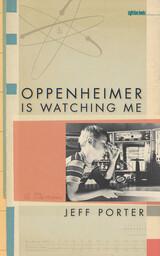One World: The Interaction of Science and Theology
John C. Polkinghorne
Templeton Press, 2007 Both science and religion explore aspects of reality, providing "a basis for their mutual interaction as they present their different perspectives onto the one world of existent reality," Polkinghorne argues. In One World, he develops his thesis through an examination of the nature of science, the nature of the physical world, the character of theology, and the modes of thought in science and theology. He identifies "points of interaction" and points of potential conflict between science and religion. Along the way, he discusses creation, determinism, prayer, miracles, and future life, and he explains his rejection of scientific reductionism and his defense of natural theology.
 One Writer’s Beginnings
Eudora Welty
Harvard University Press, 1984 Now available as an audio CD, in Eudora Welty's own voice, or as a book.
Eudora Welty was born in 1909 in Jackson, Mississippi. In a "continuous thread of revelation" she sketches her autobiography and tells us how her family and her surroundings contributed to the shaping not only of her personality but of her writing. Homely and commonplace sights, sounds, and objects resonate with the emotions of recollection: the striking clocks, the Victrola, her orphaned father's coverless little book saved since boyhood, the tall mountains of the West Virginia back country that become a metaphor for her mother's sturdy independence, Eudora's earliest box camera that suspended a moment forever and taught her that every feeling awaits a gesture. She has recreated this vanished world with the same subtlety and insight that mark her fiction.
Even if Eudora Welty were not a major writer, her description of growing up in the South--of the interplay between black and white, between town and countryside, between dedicated schoolteachers and the public they taught--would he notable. That she is a splendid writer of fiction gives her own experience a family likeness to others in the generation of young Southerners that produced a literary renaissance. Until publication of this book, she had discouraged biographical investigations. It undoubtedly was not easy for this shy and reticent lady to undertake her own literary biography, to relive her own memories (painful as well as pleasant), to go through letters and photographs of her parents and grandparents. But we are in her debt, for the distillation of experience she offers us is a rare pleasure for her admirers, a treat to everyone who loves good writing and anyone who is interested in the seeds of creativity.
 One-Eyed Science: Occupational Health and Women Workers
Karen Messing
Temple University Press, 1998 After decades of research by the author and her colleagues into what women do in positions such as bank teller, secretary, waitress, nurse, factory worker, and poultry processor, Karen Messing is astonished to find that for many policy-makers, researchers, and activists, the topic of women's occupational health doesn't exist.
Messing investigates different types of occupational health issues for women, notably the controversial topics of male/female differences in jobs, health, and basic biology. The pain and suffering of women workers is illustrated in vivid case studies of research into health risks for women in the workplace, including musculoskeletal disease, the hazards of office work, emotional stress, and reproductive hazards.
No longer can employers, administrators, and health professionals ignore the very real problems women encounter in their jobs. Throughout the book, Messing captures the everyday reality of workplace tasks and stress -- from lifting boxes to juggling mental tasks under pressure to the emotional labor of caring for upset or abusive people -- by combining on-site observing with listening to the workers' descriptions of their work lives.
Responding to the tough question, why are scientists so unresponsive to the needs of women workers, Messing describes long-standing difficulties in gaining attention for the occupational health of women, ranging from the structure of the grant process and the conferences crucial to the professional life of researchers to the basic assumptions of scientific practice. Messing laments the separation of even most feminist health researchers from workplace concerns and asserts that it is time to develop a science that can prevent women workers' pain and suffering.
The One-Handed Pianist and Other Stories
Ilan Stavans
Northwestern University Press, 2007 The One-Handed Pianist was published to acclaim in the early 1990’s, with the two-part Spanish edition winning the Latino Literature Prize in 1989 and the Gamma Literature Prize in 1992. Its tales look at what it means to be Jewish in the Hispanic world—a world in which spirituality is often exercised outside the realm of orthodoxy. Stavans constructs fables that raise questions about ethnicity and community; even Stavans’ person raises questions about ethnicity and community: what does it mean that a Jew of Eastern European lineage can call himself Latino and speak for that group?
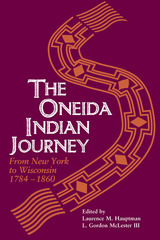 Oneida Indian Journey: From New York to Wisconsin, 1784–1860
Edited by Laurence M. Hauptman and L. Gordon McLester III
University of Wisconsin Press, 1999 For the first time, the traumatic removal of the Oneida Indians from New York to Wisconsin is examined in a groundbreaking collection of essays, The Oneida Indian Journey from New York to Wisconsin, 1784–1860. To shed light on this vital period of Oneida history, editors Laurence Hauptman and L. Gordon McLester, III, present a unique collaboration between an American Indian nation and the academic community. Two professional historians, a geographer, anthropologist, archivist and attorney join in with eighteen voices from the Oneida community—local historians, folklorists, genealogists, linguists, and tribal elders—discuss tribal dispossession and community; Oneida community perspectives of Oneida history; and the means of studying Oneida history. Contributors include: Debra Anderson, Eileen Antone, Jim Antone, Abrahms Archiquette, Oscar Archiquette, Jack Campisi, Richard Chrisjohn, Amelia Cornelius, Judy Cornelius, Katie Cornelius, Melissa Cornelius, Jonas Elm, James Folts, Reginald Horsman, Elizabeth Huff, Francis Jennings, Arlinda Locklear, Jo Margaret Mano, Loretta Metoxen, Liz Obomsawin, Jessie Peters, Sarah Summers, and Rachel Swamp
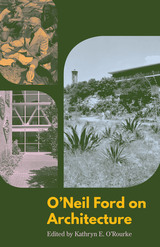 O'Neil Ford on Architecture
Edited by Kathryn E. O'Rourke
University of Texas Press, 2019 Winner, Publication Award, Southeastern Chapter of the Society of Architectural Historians (SESAH), 2019 Acclaimed for his designs of the Trinity University campus, the Little Chapel in the Woods, the Texas Instruments Semiconductor Components Division Building, and numerous private houses, O’Neil Ford (1905–1982) was an important twentieth-century architect and a pioneer of modernism in Texas. Collaborating with artists, landscape architects, and engineers, Ford created diverse and enduringly rich works that embodied and informed international developments in modern architecture. His buildings, lectures, and teaching influenced a generation of Texas architects. O’Neil Ford on Architecture brings together Ford’s major professional writings and speeches for the first time. Revealing the intellectual and theoretical underpinnings of his distinctive modernism, they illuminate his fascination with architectural history, his pioneering uses of new technologies and construction systems, his deep concerns for the landscape and environment, and his passionate commitments to education and civil rights. An interlocutor with titans of the twentieth century, including Louis Kahn and J. Robert Oppenheimer, Ford understood architecture as inseparable from the social, political, and scientific developments of his day. An introductory essay by Kathryn E. O’Rourke provides a critical assessment of Ford’s essays and lectures and repositions him in the history of US architectural modernism. As some of his most important buildings turn sixty, O’Neil Ford on Architecture demonstrates that this Texas modernist deserves to be ranked among the leading midcentury American architects.
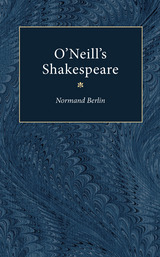 O'Neill's Shakespeare
Normand Berlin
University of Michigan Press, 1993 In O'Neill's Shakespeare , Normand Berlin explores the relationship of William Shakespeare and Eugene O'Neill through detailed, often surprising, intertextual readings of the two great playwrights' work. "Of course, it would have been impossible for O'Neill not to have been influenced by Shakespeare," acknowledges Berlin. But this is an influence of an unusual and extraordinary sort, "a family romance" that transcends their obvious differences—a romance that "takes in all O'Neill's life and art." In the first book-length study of this crucial literary and dramatic relationship, Berlin probes far beyond the usual listing of allusions and references. This is the exploration of an "essential, basic, even natural" connection, in which Shakespeare is shown to have fundamentally shaped O'Neill's creative imagination. Following O'Neill's career chronologically, Berlin divides his study into two parts. The "first career" (culminating in Mourning Becomes Electra) is explored through recurring themes that evoke Shakespeare: the sea, black and white, and the family. O'Neill's "second career" (from Ah! Wilderness until the last plays) is examined through Shakespearean genre classifications: comedy, history, tragedy, and tragicomedy. Though always grounded in close textual readings, Berlin's analysis spirals outward to encompass O'Neill's artistic and psychological development and touches on the questions of tradition, transcendence, and human nature inevitably raised when such literary connections across history are drawn. O'Neill's Shakespeare is more than a reminder that Shakespeare continues to haunt Western culture; it is a careful and fascinating analysis of a particular legacy in American drama. The book has insights to offer to specialists in Shakespeare and O'Neill, and to any reader interested in the transmission of ideas through Western culture. Berlin's study of the unconscious and conscious uses of Shakespeare by O'Neill provide a valuable new understanding of O'Neill's artistry. It is also an eloquent, thoughtful account that blends the transcendence of Shakespeare's influence with the particular ways in which every era must refashion Shakespeare so that "the past becomes the present."
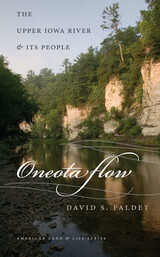 Oneota Flow: The Upper Iowa River and Its People
David S. Faldet
University of Iowa Press, 2009 The river, like a keen memory, carries a record of the past.” David Faldet has spent forty years in the basin of the Upper Iowa River, which winds from the flat farm fields of southern Minnesota through the wooded valleys of northeast Iowa to the Mississippi. In this peaceful and inspiring book, Faldet tells the story of the Upper Iowa as it flows through land and people, holding true to Aldo Leopold’s conception of land as a community in which water, people, and soil play interactive parts. Whether profiling the chief of the last hunter-gatherers on the river, an early settler witnessing her first prairie fire and a modern wildlife biologist using fire to manage prairies, the manager of the Granger Farmer’s Co-op Creamery, or a landowner whose bottomlands are continually eaten away by floods, Faldet steadily develops the central idea that people are walking tributaries of the river basin in which they make their homes. Faldet moves through the history of life along the now-polluted Upper Iowa, always focusing on the ways people depend on the river, the environment, and the resources of the region. He blends contemporary conversations, readings from the historical record, environmental research, and personal experience to show us that the health of the river is best guaranteed by maintaining the biological communities that nurture it. In return, taking care of the Upper Iowa is the best way to take care of our future.
One-Room Country Schools: History and Recollections
Jerry Apps
Wisconsin Historical Society Press, 2015 A popular collection of memories and recollections from people who learned at and taught in one-room schools in Wisconsin, including former pupil Jerry Apps, the book’s author.
Oneself as Another
Paul Ricoeur
University of Chicago Press, 1992 Paul Ricoeur has been hailed as one of the most important thinkers of the century. Oneself as Another, the clearest account of his "philosophical ethics," substantiates this position and lays the groundwork for a metaphysics of morals.
Focusing on the concept of personal identity, Ricoeur develops a hermeneutics of the self that charts its epistemological path and ontological status.
 The One-Shot Library Instruction Survival Guide
Heidi E. Buchanan
American Library Association, 2021 When done well, one-shot library instruction allows you to build solid relationships with faculty while also making positive first impressions with students. Good pedagogy, collaboration with faculty, assessment, and reflection are all imminently possible in the one-shot. So is incorporating the big ideas of the ACRL Framework. This new edition of a trusted resource will guide you in active, student-centered one-shots that connect to courses’ learning outcomes. Demonstrated using vignettes that share teaching experiences drawn from librarians and instructors in the field, you’ll get succinct, hands-on advice on such topics as - why threshold concepts are well suited to one-shot instruction;
- online instruction-specific engagement strategies and talking points;
- a one-shot version of curriculum mapping to help you prioritize;
- quick and easy activities to work into sessions;
- how to mix and match the three types of instruction best suited to one-shots;
- losing the list, ditching the script, and other strategies for student-centered teaching;
- common classroom management mishaps and what to do about them;
- talking points for the instruction interview;
- how and when to say no; and
- 5 ways to use assessment to improve your instructional style.
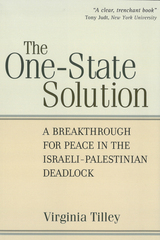 The One-State Solution: A Breakthrough for Peace in the Israeli-Palestinian Deadlock
Virginia Tilley
University of Michigan Press, 2010 “A clear, trenchant book on a topic of enormous importance... Overall this is a courageous plunge
into boiling waters. If it helps propel forward a debate that has hardly begun in this country it will
have performed a signal scholarly and political function.”
—Tony Judt, New York University
“. . . a pioneering text. . . . [A]s such it will take pride of place in a brewing debate.”
—Gary Sussman, Tel Aviv University
The One-State Solution demonstrates that Israeli settlements have already encroached on the occupied territory of the West Bank and Gaza Strip to the extent that any Palestinian state in those areas is unviable. It reveals the irreversible impact of Israel’s settlement grid by summarizing its physical, demographic, financial, and political dimensions. Virginia Tilley explains why we should assume that this grid will not be withdrawn—or its expansion reversed—by reviewing the
role of the key political actors: the Israeli government, the United States, the Arab states, and the European Union. Finally, the book addresses the daunting obstacles to a one-state solution—including major revision of the Zionist dream but also Palestinian and other regional resistance—and offers some ideas about how those obstacles might be addressed.
Virginia Tilley is Chief Research Specialist in the Democracy and Governance Division of the Human Research Council in Cape Town, South Africa.
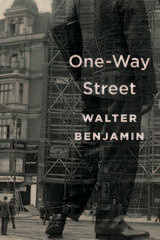 One-Way Street
Walter Benjamin
Harvard University Press, 2016 One-Way Street is a thoroughfare unlike anything else in literature—by turns exhilarating and bewildering, requiring mental agility and a special kind of urban literacy. Presented here in a new edition with expanded notes, this genre-defying meditation on the semiotics of late-1920s Weimar culture offers a fresh opportunity to encounter Walter Benjamin at his most virtuosic and experimental, writing in a vein that anticipates later masterpieces such as “On the Concept of History” and The Arcades Project.
Composed of sixty short prose pieces that vary wildly in style and theme, One-Way Street evokes a dense cityscape of shops, cafes, and apartments, alive with the hubbub of social interactions and papered over with public inscriptions of all kinds: advertisements, signs, posters, slogans. Benjamin avoids all semblance of linear narrative, enticing readers with a seemingly random sequence of aphorisms, reminiscences, jokes, off-the-cuff observations, dreamlike fantasias, serious philosophical inquiries, apparently unserious philosophical parodies, and trenchant political commentaries. Providing remarkable insight into the occluded meanings of everyday things, Benjamin time and again proves himself the unrivalled interpreter of what he called “the soul of the commodity.”
Despite the diversity of its individual sections, Benjamin’s text is far from formless. Drawing on the avant-garde aesthetics of Dada, Constructivism, and Surrealism, its unusual construction implies a practice of reading that cannot be reduced to simple formulas. Still refractory, still radical, One-Way Street is a work in perpetual progress.
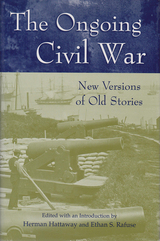 The Ongoing Civil War: New Versions of Old Stories
Edited & Intro by Herman Hattaway & Ethan S. Rafuse
University of Missouri Press, 2004
In 1997, John Stanchak, an editor at Cowles Enthusiast Media (now part of Primedia), realized his vision of “a publication that contained the best, most up-to-date scholarship on the [Civil] war, but was edited with the amateur historian in mind,” with the publication of Columbiad: A Quarterly Review of the War between the States. In the four years the journal was published, it strived to lessen the rift between the scholarly world of professional historians and the “popular” history with which the general reader is more familiar. Now, a selection of the essays that best represent the successful balance between “serious scholarship” and a narrative reading style preferred by the educated layman has been collected in The Ongoing Civil War.
The nine essays, written by such distinguished scholars as John Marszalek, Albert Castel, Archer Jones, Mark Snell, Noah Trudeau, and others, provide deeper insight into the war, introduce the general reader to unsung heroes, and correct some popular misrepresentations of history. They cover a range of topics as diverse as conflict among commanders, the supply runs vital to the Union victory at Gettysburg, the network of scouts and spies used by Robert E. Lee, and the painstaking process of organizing and publishing the Official Records. The synergy of sophisticated research combined with a compelling narrative style makes The Ongoing Civil War an enjoyable, informative work suitable for scholars and the general reader alike.
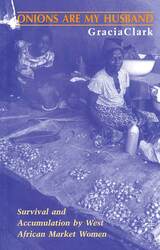 Onions Are My Husband: Survival and Accumulation by West African Market Women
Gracia Clark
University of Chicago Press, 1994 In the most comprehensive analysis to date of the world of open air marketplaces of West Africa, Gracia Clark studies the market women of Kumasi, Ghana, in order to understand the key social forces that generate, maintain, and continually reshape the shifting market dynamics.
Probably the largest of its kind in West Africa, the Kumasi Central Market houses women whose positions vary from hawkers of meals and cheap manufactured goods to powerful wholesalers, who control the flow of important staples. Drawing on more than four years of field research, during which she worked alongside several influential market "Queens", Clark explains the economic, political, gender, and ethnic complexities involved in the operation of the marketplace and examines the resourcefulness of the market women in surviving the various hazards they routinely encounter, from coups d'etat to persistent sabotage of their positions from within.
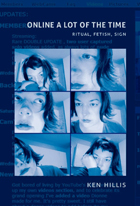 Online a Lot of the Time: Ritual, Fetish, Sign
Ken Hillis
Duke University Press, 2009 A wedding ceremony in a Web-based virtual world. Online memorials commemorating the dead. A coffee klatch attended by persons thousands of miles apart via webcams. These are just a few of the ritual practices that have developed and are emerging in online settings. Such Web-based rituals depend on the merging of two modes of communication often held distinct by scholars: the use of a device or mechanism to transmit messages between people across space, and a ritual gathering of people in the same place for the performance of activities intended to generate, maintain, repair, and renew social relations. In Online a Lot of the Time, Ken Hillis explores the stakes when rituals that would formerly have required participants to gather in one physical space are reformulated for the Web. In so doing, he develops a theory of how ritual, fetish, and signification translate to online environments and offer new forms of visual and spatial interaction. The online environments Hillis examines reflect the dynamic contradictions at the core of identity and the ways these contradictions get signified. Hillis analyzes forms of ritual and fetishism made possible through second-generation virtual environments such as Second Life and the popular practice of using webcams to “lifecast” one’s life online twenty-four hours a day, seven days a week. Discussing how people create and identify with their electronic avatars, he shows how the customs of virtual-world chat reinforce modern consumer-based subjectivities, allowing individuals to both identify with and distance themselves from their characters. His consideration of web-cam cultures links the ritual of exposing one’s life online to a politics of visibility. Hillis argues that these new “rituals of transmission” are compelling because they provide a seemingly material trace of the actual person on the other side of the interface.
The Online Advertising Tax: A Digital Policy Innovation
Christian Fuchs
University of Westminster Press, 2018 Google and Facebook currently control close to two-thirds of global advertising revenue. While dominating the online advertising market, these two companies have thus far avoided paying adequate taxes. This CAMRI policy brief presents a new policy innovation, the online advertising tax. Considering the key role of user activity and user data for the value of Google and Facebook’s services, it explains how digital advertising companies’ revenues could be taxed based on the respective country in which targeted users are located. The author reviews existing policy arguments and policy options and sets out practical steps to ensure that tax avoidance by online advertising companies is mitigated. Furthermore, he illustrates how tax revenues could be used to support public service internet platforms.
 The Online Advertising Tax as the Foundation of a Public Service Internet: a CAMRI extended policy report
Christian Fuchs
University of Westminster Press, 2018 Online advertising will soon form the largest share of global advertisement revenues. Google and Facebook netted profits of US $29 billion in 2016. While these two giants control more than 66% of all online advertising revenues complex legal company structures have minimised their tax liabilities. This extended policy report considers where they should be taxed and where the value of their activities is actually created. It argues that tax paid by those platforms should be levied in the country where platform users are located when they click on or view an advertisement. Furthermore, the report examines the practical steps needed to ensure transparent accounting of taxed transactions in order to avoid long term negative effects for media and democracy. Considering counter-arguments the author makes the case for an online advertising tax alongside a public service Internet strategy that could support other viable platforms and counter the dangers of duopoly or oligopoly and the high risks of financial bubbles in a world where advertising is the Internet's dominant business model.
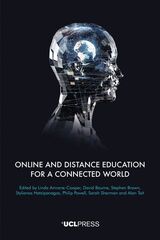 Online and Distance Education for a Connected World
Edited by Linda Amrane-Cooper, David Baume, Stephen Brown, Stylianos Hatzipanagos, Philip Powell, Sarah Sherman, and Alan Tait
University College London, 2023 A collection addressing the theory and practice of online and distance education.
The COVID-19 pandemic led to the widespread adoption of distance and online learning in higher education, which has presented opportunities for large-scale, inclusive, flexible, and engaging learning. This volume, assembled by the University of London’s Centre for Online and Distance Education, addresses the practice and theory of online and distance education, building on knowledge and expertise developed in the university across nearly a century and a half. Contributors explore important principles and highlight successful practices in areas such as course design and pedagogy, online assessment, open education, inclusive practice, and enabling students' voices. Case studies illustrate prominent issues and approaches. Together, the chapters offer current and future leaders and practitioners a practical, productive, practice- and theory-informed account of the present and likely future state of online and distance higher education worldwide.
Online Deliberation: Design, Research, and Practice
Edited by Todd Davies and Seeta Peña Gangadharan
CSLI, 2009 Can new technology enhance local, national, and global democracy? Online Deliberation is the first book that attempts to sample the full range of work on online deliberation, forging new connections between academic research, web designers, and practitioners.
Since the most exciting innovations in deliberation have occurred outside of traditional institutions, and those involved have often worked in relative isolation from each other, research conducted on this growing field has to this point neglected the full perspective of online participation. This volume, an essential read for those working at the crossroads of computer and social science, illuminates the collaborative world of deliberation by examining diverse clusters of Internet communities.
 Online Journalism: A Critical Primer
Jim Hall
Pluto Press, 2001 Online Journalism is revolutionising the way news is reported and read. The rise of the internet has forever changed the way audiences interact with the news – stories are posted the moment they break and readers routinely expect to be able to access both the news sources and local perspectives. Online news and the pattern of media ownership raise a number of urgent questions about accuracy, press autonomy, freedom of speech and economic exclusion.
Jim Hall provides a comprehensive guide to the emerging field of cyberjournalism and examines the issues it raises. Looking at how interactive texts are both written and read, the book surveys the new technologies and conventions that online journalism has ushered in. The author uses case studies such as Monicagate and the war in Kosovo to illustrate both the opportunities and the limitations of cyberjournalism.
It is designed as a text to introduce how cyberjournalism works and how it can be used in innovative ways.
 Online World Language Instruction Training and Assessment: An Ecological Approach
Carmen King Ramírez, Barbara A. Lafford, and James E. Wermers
Georgetown University Press A new approach to training and evaluating world languages online instructors The rapid growth in online world language programs in the United States coupled with the widespread implementation of virtual teaching in response to COVID-19 have pushed the field to reconceive instruction. Virtual learning creates unique challenges for instructors, who need to ensure that their students have adequate interaction with their peers, their professor, and native speakers of the language. Even with a growing demand for online language courses, there are few tools that evaluate the training and assessment of online language instructors. In Online World Language Instruction Training and Assessment, authors Carmen King Ramírez, Barbara A. Lafford, and James E. Wermers fill that gap, providing a critical pedagogical approach to computer-assisted language learning (CALL) teacher education (CTE). By combining best CTE training and evaluation practices with assessment tools, the authors explain how teachers can integrate technology to build successful online programs. Their ecological, holistic approach addresses all facets of learning online—including pressing challenges of moving courses online, teacher training, developing core competencies and skills, instructions for assessment and self-evaluation, goal setting, and the normalization of critical CTE practices in an increasingly digital environment. The authors propose new solutions to teacher training challenges, providing extensive rubrics and tools that can equitably assess online language instructor skills, the training they receive, the assessment process they undergo, and the instruments used for instructor assessment. A list of CALL and CTE resources (available on the Press’s website) further supports readers’ successful adaptation to an everchanging learning environment.
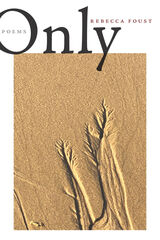 Only
Rebecca Foust
Four Way Books, 2022 Urgent from the outset, Rebecca Foust's Only insists that the only thing worth writing about is everything. Prompted to confront what she does not know, the speaker lists, "Null. All. What's after death or before." This book scales the cliff-face of adulthood, that paradoxical ascent in which the longer we live the less we know of life, in which we find that each of us is only ourselves and yet delicately interconnected with everyone, everything, else. These candid lyrics ponder our broken political systems, family (dys)function and parenting challenges, divergent and intersecting identities, the complexities of sexuality, natural refuge and climate catastrophe, and in general what it means to be human in a world that sometimes feels as if it is approaching apocalypse. At the ledge of this abyss, however, Foust reminds us of the staggering beauty of life, the legacies of survival in the echoes of care that outlast us: "I came / to the canyon rim and saw // how best to carry you: I let the stone go."
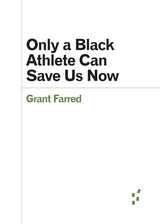 Only a Black Athlete Can Save Us Now
Grant Farred
University of Minnesota Press, 2021 A call to arms exploring the protest movements of 2020 as they reverberated through the athletic world
Starting with the refusal of George Hill of the Milwaukee Bucks to participate in an August 2020 playoff game following the shooting of Jacob Blake by police in Kenosha, Wisconsin, Grant Farred shows how the Covid-restricted NBA “bubble” released an energy that spurred athletes into radical action. They disrupted athletic normalcy, and in their grief and rage against American racism they demonstrated the true progressivism lacking in even the most reformist-minded politicians and pundits. Farred goes on to trace the radicalism of black athletes in a number of sports, including the WNBA, women’s tennis, the NFL, and NASCAR, locating contemporary athletes in a lineage that runs through Muhammad Ali as well as Tommy Smith and John Carlos at the 1968 Olympics. Only a Black Athlete Can Save Us Now uses sport as a point of departure to argue that the dystopic crisis of our current moment offers a singular opportunity to reimagine how we live in the world.
Forerunners: Ideas First is a thought-in-process series of breakthrough digital publications. Written between fresh ideas and finished books, Forerunners draws on scholarly work initiated in notable blogs, social media, conference plenaries, journal articles, and the synergy of academic exchange. This is gray literature publishing: where intense thinking, change, and speculation take place in scholarship.
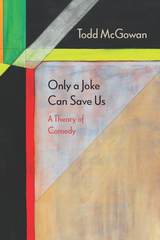 Only a Joke Can Save Us: A Theory of Comedy
Todd McGowan
Northwestern University Press, 2017 Only a Joke Can Save Us presents an innovative and comprehensive theory of comedy. Using a wealth of examples from high and popular culture and with careful attention to the treatment of humor in philosophy, Todd McGowan locates the universal source of comedy in the interplay of the opposing concepts lack and excess. After reviewing the treatment of comedy in the work of philosophers as varied as Aristotle, G. W. F. Hegel, Sigmund Freud, Henri Bergson, and Alenka Zupancic, McGowan, working in a psychoanalytic framework, demonstrates that comedy results from the deployment of lack and excess, whether in contrast, juxtaposition, or interplay. Illustrating the power and flexibility of this framework with analyses of films ranging from Buster Keaton and Marx Brothers classics to Dr. Strangelove and Groundhog Day, McGowan shows how humor can reveal gaps in being and gaps in social order. Scholarly yet lively and readable, Only a Joke Can Save Us is a groundbreaking examination of the enigmatic yet endlessly fascinating experience of humor and comedy.
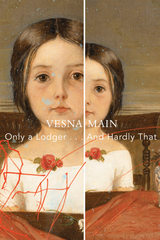 Only a Lodger . . . And Hardly That: A Fictional Autobiography
Vesna Main
Seagull Books, 2019 A novel in five parts, Only a Lodger . . . And Hardly That puts Vesna Main’s power of beautiful observation on full display as she explores how writing stories about one’s ancestors is key route to learning about and fashioning one’s own identity. While the stories are self-contained, together they form a narrative whole that approaches this age-old idea from five unique perspectives.
In “The Eye/I,” we meet someone called She, who obsessively tells the story of her childhood and adolescence to an unnamed narrator. “The Acrobat” is a sequence of prose poems, written in the style of magic realism, which tell the story of Maria and her life-changing adolescent encounter with a flying circus performer. The female protagonist of the first section narrates “The Dead,” describing the secret life of a grandfather she never truly knew and his unusual habit of sending family members anonymous parcels of carefully chosen books. In “The Poet,” she examines four family photographs in order to piece together a story of her other grandfather, the husband of Maria. The final section, “The Suitor,” is a first-person narrative told by Mr. Gustav Otto Wagner, an older man who hoped to marry Maria but was ultimately turned down.
Only Among Women: Philosophies of Community in the Russian and Soviet Imagination, 1860–1940
Anne Eakin Moss
Northwestern University Press, 2019 Only Among Women reveals how the idea of a community of women as a social sphere ostensibly free from the taint of money, sex, or self-interest originated in the classic Russian novel, fueled mystical notions of unity in turn-of-the-century modernism, and finally assumed a privileged place in Stalinist culture, especially cinema.
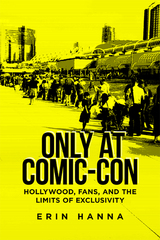 Only at Comic-Con: Hollywood, Fans, and the Limits of Exclusivity
Erin Hanna
Rutgers University Press, 2020 When the San Diego Comic-Con was founded in 1970, it provided an exclusive space where fans, dealers, collectors, and industry professionals could come together to celebrate their love of comics and popular culture. In the decades since, Comic-Con has grown in size and scope, attracting hundreds of thousands of fans each summer and increased attention from the media industries, especially Hollywood, which uses the convention’s exclusivity to spread promotional hype far and wide. What made the San Diego Comic-Con a Hollywood destination? How does the industry’s presence at Comic-Con shape our ideas about what it means to be a fan? And what can this single event tell us about the relationship between media industries and their fans, past and present? Only at Comic-Con answers these questions and more as it examines the connection between exclusivity and the proliferation of media industry promotion at the longest-running comic convention in North America.
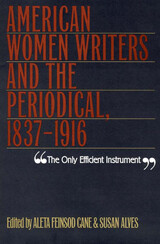 Only Efficient Instrument: American Women Writers And Periodical, 1837-1916
Aleta Feinsod Cane
University of Iowa Press, 2001 Many farsighted women writers in nineteenth-century America made thoughtful and sustained use of newspapers and magazines to effect social and political change. “The Only Efficient Instrument”: American Women Writers and the Periodical, 1837-1916 examines these pioneering efforts and demonstrates that American women had a vital presence in the political and intellectual communities of their day. Women writers and editors of diverse social backgrounds and ethnicities realized very early that the periodical was a powerful tool for education and social reform—it was the only efficient instrument to make themselves and their ideas better known. This collection of critical essays explores American women's engagement with the periodical press and shows their threefold use of the periodical: for social and political advocacy; for the critique of gender roles and social expectations; and for refashioning the periodical as a more inclusive genre that both articulated and obscured such distinctions as class, race, and gender. Including essays on familiar figures such as Margaret Fuller, Harriet Beecher Stowe, Kate Chopin, and Charlotte Perkins Gilman, “The Only Efficient Instrument” also focuses on writings from lesser-known authors, including Native American Zitkala-Sä, Mexican American María Cristina Mena, African American Frances Ellen Watkins Harper, and the Lowell factory workers. Covering nearly eighty years of publishing history, from the press censure of the outspoken Angelina Grimké in 1837 to the last issue of Gilman's Forerunner in 1916, this fascinating collection breaks new ground in the study of the women's rights movement in America.
The Only Happy Ending for a Love Story Is an Accident
J. P. Cuenca
Tagus Press, 2013
Set in Tokyo, in a not-too-distant future, this novel tells the story of Shunsuke, a salaryman, and his complicated relationship with his mad poet father, Mr. Okuda, whose hobby is spying on his son. When Shunsuke falls in love with Iulana, a maelstrom of jealousy is set in motion that culminates in abduction and death. In poetic and imaginative language, Cuenca subtly interweaves reality and fiction, creating a dreamlike world whose palpable characters, including a silicone doll, leave a lasting impression. Written like a crime novel, full of odd events and reminiscent of Haruki Murakami's work, this disturbing, kaleidoscopic story of voyeurism and perversion draws the reader in from the very first page.
Only in Arkansas: A Study of the Endemic Plants and Animals of the State
Henry Robison
University of Arkansas Press, 1995 Besides extensive illustrations and photographs of each species, Only in Arkansas provides pertinent literature references to the original distributions of each form within the state and reports known information of the general biology, evolutionary relationships, and habitat occupied by each endemic form.
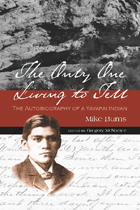 The Only One Living to Tell: The Autobiography of a Yavapai Indian
Mike Burns; Edited by Gregory McNamee
University of Arizona Press, 2012 Mike Burns—born Hoomothya—was around eight years old in 1872 when the US military murdered his family and as many as seventy-six other Yavapai men, women, and children in the Skeleton Cave Massacre in Arizona. One of only a few young survivors, he was adopted by an army captain and ended up serving as a scout in the US army and adventuring in the West. Before his death in 1934, Burns wrote about the massacre, his time fighting in the Indian Wars during the 1880s, and life among the Kwevkepaya and Tolkepaya Yavapai. His precarious position between the white and Native worlds gives his account a distinctive narrative voice. Because Burns was unable to find a publisher during his lifetime, these firsthand accounts of history from a Native perspective remained unseen through much of the twentieth century, archived at the Sharlot Hall Museum in Prescott. Now Gregory McNamee has brought Burns's text to life, making this extraordinary tale an accessible and compelling read. Generations after his death, Mike Burns finally gets a chance to tell his story.
This autobiography offers a missing piece of Arizona history—as one of the only Native American accounts of the Skeleton Cave Massacre—and contributes to a growing body of history from a Native perspective. It will be an indispensable tool for scholars and general readers interested in the West—specifically Arizona history, the Apache wars, and Yavapai and Apache history and lifeways.
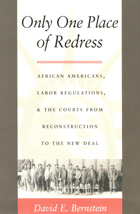 Only One Place of Redress: African Americans, Labor Regulations, and the Courts from Reconstruction to the New Deal
David E. Bernstein
Duke University Press, 2001 In Only One Place of Redress David E. Bernstein offers a bold reinterpretation of American legal history: he argues that American labor and occupational laws, enacted by state and federal governments after the Civil War and into the twentieth century, benefited dominant groups in society to the detriment of those who lacked political power. Both intentionally and incidentally, claims Bernstein, these laws restricted in particular the job mobility and economic opportunity of blacks.
A pioneer in applying the insights of public choice theory to legal history, Bernstein contends that the much-maligned jurisprudence of the Lochner era—with its emphasis on freedom of contract and private market ordering—actually discouraged discrimination and assisted groups with little political clout. To support this thesis he examines the motivation behind and practical impact of laws restricting interstate labor recruitment, occupational licensing laws, railroad labor laws, minimum wage statutes, the Davis-Bacon Act, and New Deal collective bargaining. He concludes that the ultimate failure of Lochnerism—and the triumph of the regulatory state—not only strengthened racially exclusive labor unions but contributed to a massive loss of employment opportunities for African Americans, the effects of which continue to this day.
Scholars and students interested in race relations, labor law, and legal
or constitutional history will be fascinated by Bernstein’s daring—and controversial—argument.
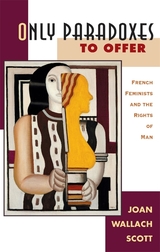 Only Paradoxes to Offer: French Feminists and the Rights of Man
Joan W. Scott
Harvard University Press, 1996 When feminists argued for political rights in the context of liberal democracy they faced an impossible choice. On the one hand, they insisted that the differences between men and women were irrelevant for citizenship. On the other hand, by the fact that they acted on behalf of women, they introduced the very idea of difference they sought to eliminate. This paradox--the need both to accept and to refuse sexual difference in politics--was the constitutive condition of the long struggle by women to gain the right of citizenship. In this new book, remarkable in both its findings and its methodology, award-winning historian Joan Wallach Scott reads feminist history in terms of this paradox of sexual difference.
Focusing on four French feminist activists--Olympe de Gouges, who wrote the Declaration of the Rights of Woman and Citizen during the French Revolution; Jeanne Deroin, a utopian socialist and candidate for legislative office in 1848; Hubertine Auclert, the suffragist of the Third Republic; and Madeleine Pelletier, a psychiatrist in the early twentieth century who argued that women must "virilize" themselves in order to gain equality--Scott charts the repetitions and variations in feminist history. Again and again, feminists tried to prove they were individuals, according to the standards of individuality of their day. Again and again, they confronted the assumption that individuals were men. But when sexual difference was taken to be a fundamental difference, when only men were regarded as individuals and thus as citizens, how could women also be citizens? The imaginative and courageous answers feminists offered to these questions are the subject of this engaging book.
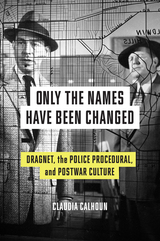 Only the Names Have Been Changed: Dragnet, the Police Procedural, and Postwar Culture
Claudia Calhoun
University of Texas Press, 2022 2022 Peter C. Rollins Book Award, Northeast Texas Popular Culture and American Culture Associations (NEPCA)
In the postwar era, the police procedural series Dragnet informed Americans on the workings of the criminal justice system and instructed them in their responsibilities as citizens.
Among shifting politics, tastes, and technology in television history, one genre has been remarkably persistent: the cop show. Claudia Calhoun returns to Dragnet, the pioneering police procedural and an early transmedia franchise, appearing on radio in 1949, on TV and in film in the 1950s, and in later revivals. More than a popular entertainment, Dragnet was a signifier of America’s postwar confidence in government institutions—and a publicity vehicle for the Los Angeles Police Department. Only the Names Have Been Changed shows how Dragnet’s “realistic” storytelling resonated across postwar culture. Calhoun traces Dragnet’s “semi-documentary” predecessors, and shows how Jack Webb, Dragnet’s creator, worked directly with the LAPD as he produced a series that would likewise inspire public trust by presenting day-to-day procedural justice, rather than shootouts and wild capers. Yet this realism also set aside the seething racial tensions of Los Angeles as it was. Dragnet emerges as a foundational text, one that taught audiences to see police as everyday heroes not only on TV but also in daily life, a lesson that has come under scrutiny as Americans increasingly seek to redefine the relationship between policing and public safety.
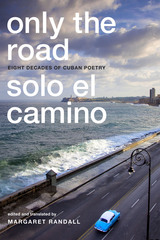 Only the Road / Solo el Camino: Eight Decades of Cuban Poetry
Margaret Randall, editor and translator
Duke University Press, 2016 Featuring the work of more than fifty poets writing across the last eight decades, Only the Road / Solo el Camino is the most complete bilingual anthology of Cuban poetry available to an English readership. It is distinguished by its stylistic breadth and the diversity of its contributors, who come from throughout Cuba and its diaspora and include luminaries, lesser-known voices, and several Afro-Cuban and LGBTQ poets. Nearly half of the poets in the collection are women. Only the Road paints a full and dynamic picture of modern Cuban life and poetry, highlighting their unique features and idiosyncrasies, the changes across generations, and the ebbs and flows between repression and freedom following the Revolution. Poet Margaret Randall, who translated each poem, contributes extensive biographical notes for each poet and a historical introduction to twentieth-century Cuban poetry.
The Only True God: Early Christian Monotheism in Its Jewish Context
James F. McGrath
University of Illinois Press, 2012 Monotheism is a powerful religious concept shaped by competing ideas and the problems they raised. Surveying New Testament writings and Jewish sources from before and after the rise of Christianity, James F. McGrath argues that even the most developed Christologies in the New Testament fit within the context of first century Jewish monotheism. McGrath pinpoints when the parting of ways took place over the issue of God's oneness, and explores philosophical ideas such as "creation out of nothing" which caused Jews and Christians to develop differing concepts and definitions about God.
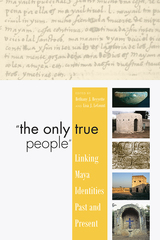 "The Only True People": Linking Maya Identities Past and Present
Bethany J. Beyette
University Press of Colorado, 2017 "The Only True People" is a timely and rigorous examination of ethnicity among the ancient and modern Maya, focusing on ethnogenesis and exploring the complexities of Maya identity—how it developed, where and when it emerged, and why it continues to change over time. In the volume, a multidisciplinary group of well-known scholars including archaeologists, linguists, ethnographers, ethnohistorians, and epigraphers investigate ethnicity and other forms of group identity at a number of Maya sites and places, from the northern reaches of the Yucatan to the Southern Periphery, and across different time periods, from the Classic period to the modern day. Each contribution challenges the notion of ethnically homogenous "Maya peoples" for their region and chronology and explores how their work contributes to the definition of "ethnicity" for ancient Maya society. Contributors confront some of the most difficult theoretical debates concerning identity in the literature today: how different ethnic groups define themselves in relation to others; under what circumstances ethnicity is marked by overt expressions of group membership and when it is hidden from view; and the processes that transform ethnic identities and their expressions. By addressing the social constructs and conditions behind Maya ethnicity, both past and present, "The Only True People" contributes to the understanding of ethnicity as a complex set of relationships among people who lived in real and imagined communities, as well as among people separated by social boundaries. The volume will be a key resource for Mayanists and will be of interest to students and scholars of ethnography, anthropology, and cultural studies as well. Contributors: McCale Ashenbrener, Ellen E. Bell, Marcello A. Canuto, Juan Castillo Cocom, David A. Freidel, Wolfgang Gabbert, Stanley P. Guente, Jonathan Hill, Charles Andrew Hofling, Martha J. Macri, Damien B. Marken, Matthew Restall, Timoteo Rodriguez, Mathew C. Samson, Edward Schortman, Rebecca Storey
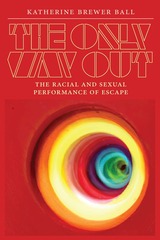 The Only Way Out: The Racial and Sexual Performance of Escape
Katherine Brewer Ball
Duke University Press, 2024 In The Only Way Out, Katherine Brewer Ball explores the American fascination with the escape story. Brewer Ball argues that escape is a key site for exploring American conceptions of freedom and constraint. Stories of escape are never told just once but become mythic in their episodic iterations, revealing the fantasies and desires of society, the storyteller, and the listener. While white escape narratives have typically been laden with Enlightenment fantasies of redemption where freedom is available to any individual willing to seize it, Brewer Ball explores how Black and queer escape offer forms of radical possibility. Drawing on Black studies, queer theory, and performance studies, she examines a range of works, from nineteenth-century American literature to contemporary queer of color art and writing by contemporary American artists including Wilmer Wilson IV, Tourmaline, Tony Kushner, Junot Díaz, Glenn Ligon, Toshi Reagon, and Sharon Hayes. Throughout, escape emerges as a story not of individuality but of collectivity and entanglement.
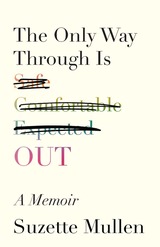 The Only Way Through Is Out
Suzette Mullen
University of Wisconsin Press, 2024 Suzette Mullen had been raised to play it safe—and she hated causing others pain. With college and law degrees, a kind and successful husband, two thriving adult sons, and an ocean-view vacation home, she lived a life many people would envy. But beneath the happy facade was a woman who watched her friends walk boldly through their lives and wondered what was holding her back from doing the same.
Digging into her past, Suzette uncovered a deeply buried truth: she’d been in love with her best friend—a woman—for nearly two decades—and still was. Leaning into these “unspeakable” feelings would put Suzette’s identity, relationships, and life of privilege at risk—but taking this leap might be her only chance to feel fully alive. As Suzette opened herself up to new possibilities, an unexpected visit to a new city helped her discover who she was meant to be.
Introspective, bittersweet, and empowering, The Only Way Through Is Out is both a coming-out and coming-of-age story, as well as a call to action for every human who is longing to live authentically but is afraid of the cost.
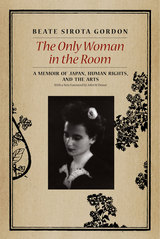 The Only Woman in the Room: A Memoir of Japan, Human Rights, and the Arts
Beate Sirota Gordon
University of Chicago Press, 2014 In 1946, at age twenty-two, Beate Sirota Gordon helped to draft the new postwar Japanese Constitution. The Only Woman in the Room chronicles how a daughter of Russian Jews became the youngest woman to aid in the rushed, secret drafting of a constitution; how she almost single-handedly ensured that it would establish the rights of Japanese women; and how, as a fluent speaker of Japanese and the only woman in the room, she assisted the American negotiators as they worked to persuade the Japanese to accept the new charter.
Sirota was born in Vienna, but in 1929 her family moved to Japan so that her father, a noted pianist, could teach, and she grew up speaking German, English, and Japanese. Russian, French, Italian, Latin, and Hebrew followed, and at fifteen Sirota was sent to complete her education at Mills College in California. The formal declaration of World War II cut Gordon off from her parents, and she supported herself by working for a CBS listening post in San Francisco that would eventually become part of the FCC. Translating was one of Sirota’s many talents, and when the war ended, she was sent to Japan as a language expert to help the American occupation forces. When General MacArthur suddenly created a team that included Sirota to draft the new Japanese Constitution, he gave them just eight days to accomplish the task. Colonel Roest said to Beate Sirota, “You’re a woman, why don’t you write the women’s rights section?”; and she seized the opportunity to write into law guarantees of equality unparalleled in the US Constitution to this day.
But this was only one episode in an extraordinary life, and when Gordon died in December 2012, words of grief and praise poured from artists, humanitarians, and thinkers the world over. Illustrated with forty-seven photographs, The Only Woman in the Room captures two cultures at a critical moment in history and recounts, after a fifty-year silence, a life lived with purpose and courage. This edition contains a new afterword by Nicole A. Gordon and an elegy by Geoffrey Paul Gordon.
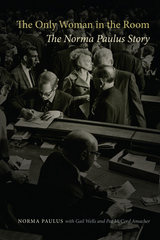 The Only Woman in the Room: The Norma Paulus Story
Norma Paulus
Oregon State University Press, 2017 Norma Petersen Paulus grew up Depression-poor in Eastern Oregon, survived a bout with polio in her teens, taught herself to be a legal secretary, and graduated from law school with honors despite not attending college first. Anyone with such a story would be remarkable, but she was just getting started.
Paulus came from a family of Roosevelt Democrats, but when a friend campaigned for a Republican seat in the state legislature, she switched parties. As she put it, “The Republicans were in politics for all the right reasons.” Amid the nationwide political upheavals of the late 1960s, Oregon’s Republicans, led by popular governor Tom McCall, seemed to be her kind of people—principled, pragmatic, and committed to education, the environment, and equality for all citizens under the law.
Paulus’s appointment by Governor McCall to the Marion-Polk Boundary Commission in 1969, a precursor to Oregon’s urban growth boundaries, helped launched her on a long and distinguished career of public service. She ran successfully for the Oregon House of Representatives in 1970, the first women to do so in the district. After three terms in the House, where she championed environmental causes, women’s rights and government transparency, she was elected Oregon’s Secretary of State in 1976—the first woman to hold that office and be elected to a statewide office in Oregon. She was the Republican candidate for governor in 1986, served a stint on the Northwest Power and Conservation Council, went on to become Oregon’s superintendent of public instruction, and headed the Oregon Historical Society.
During her years of public service, spanning the 1970s through the early 2000s, Norma Paulus occupied a distinctive niche in Oregon’s progressive political ecosystem. Her vivid personality and strong convictions endeared her to a broad swath of citizens. Beautiful and opinionated, charming and forceful, Paulus was widely covered in statewide and national newspapers and television during her eventful, sometimes controversial career. Now, The Only Woman in the Room sums up her life and work in a lively, anecdotal history that will appeal to historians, political scientists, newshounds, and ordinary citizens alike.
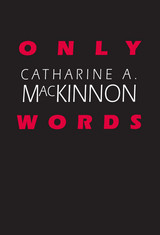 Only Words
Catharine A. MacKinnon
Harvard University Press, 1996 When is rape not a crime? When it's pornography--or so First Amendment law seems to say: in film, a rape becomes "free speech." Pornography, Catharine MacKinnon contends, is neither speech nor free. Pornography, racial and sexual harassment, and hate speech are acts of intimidation, subordination, terrorism, and discrimination, and should be legally treated as such. Only Words is a powerful indictment of a legal system at odds with itself, its First Amendment promoting the very inequalities its Fourteenth Amendment is supposed to end. In the bold and compelling style that has made her one of our most provocative legal critics, MacKinnon depicts a society caught in a vicious hypocrisy. Words that offer bribes or fix prices or segregate facilities are treated by law as acts, but words and pictures that victimize and target on the basis of race and sex are not. Pornography--an act of sexual domination reproduced in the viewing--is protected by law in the name of "the free and open exchange of ideas." But the proper concern of law, MacKinnon says, is not what speech says, but what it does. What the "speech" of pornography and of racial and sexual harassment and hate propaganda does is promote and enact the power of one social group over another. Cutting with surgical deftness through cases of harassment in the workplace and on college campuses, through First Amendment cases involving Nazis, Klansmen, and pornographers, MacKinnon shows that as long as discriminatory practices are protected as free speech, equality will be only a word.
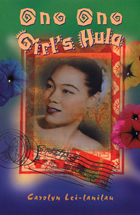 Ono Ono Girl's Hula
Carolyn Lei-lanilau
University of Wisconsin Press, 1997 Both playful and serious, this audacious riff on ethnic and sexual identity by Hawaiian-Hakka Chinese-American writer Carolyn Lei-lanilau revolves around the persona she calls “Ono Ono Girl,” an icon that interweaves and transcends Lucille Ball, Little Lulu, Tina Turner, and Spottie Dottie. Challenging assumptions about genre and gender, and acting out the notion that language is a function of the body, these essays are transforming soundbytes of Ono Ono Girl inventing herself.
“Just when you thought American literature was canonized and commodified beyond saving, Carolyn Lei-lanilau’s intertextual, irreverent work, Ono Ono Girl’s Hula, brings language and philosophy back to the table. Her book is a miracle delivery: a rebirth of poetry, Third World Spam, and love wrapped around the hybrid vigor of Hawaiian, Hakka, French, Latin, and English. Soulful, powerful, and wise.”—Russell Leong, editor of Amerasia Journal
“A book enjoyable equally for its fun as for its profundity, Carolyn Lei-lanilau’s Ono Ono Girl’s Hula is irresistible must reading for feminists, anthropologists, contemporary culture buffs, and anyone who wants a refreshing take on some of our more vexing current disputes. Down-to-earth and poetic, serious and hilarious at once, her unconventional voice invites the reader to understand the paradoxes of identity—sexual and ethnic—in new ways.”—Robin Lakoff, author of Talking Power
 Onomastic Reforms: Family Names and State Building in Iran
H. E. Chehabi
Harvard University Press, 2020 In the mid-1920s, the Iranian state legislated a wide-ranging reform of the citizenry’s naming practices. Honorary titles and honorifics were abolished, family names were made obligatory, and an office for registering names and citizens’ life events (birth, marriage, divorce, and death) was established. The main motivation for this onomastic reform was conscription, which necessitated knowledge of young men’s ages, identities, and whereabouts. The introduction of conscription was itself part of the state-building efforts that followed the weakening of the central government induced by the First World War.
In Onomastic Reforms, H. E. Chehabi explains the traditional naming practices of Iranians before the reform, describes the public debates surrounding their obsolescence, traces the legislative measures and decrees that constituted the reform, and explores the ways Iranians chose or invented surnames for themselves.
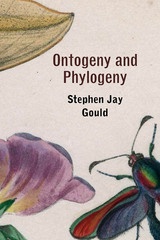 Ontogeny and Phylogeny
Stephen Jay Gould
Harvard University Press, 1985 “Ontogeny recapitulates phylogeny” was Haeckel’s answer—the wrong one—to the most vexing question of nineteenth-century biology: what is the relationship between individual development (ontogeny) and the evolution of species and lineages (phylogeny)? In this, the first major book on the subject in fifty years, Stephen Jay Gould documents the history of the idea of recapitulation from its first appearance among the pre-Socratics to its fall in the early twentieth century.
Mr. Gould explores recapitulation as an idea that intrigued politicians and theologians as well as scientists. He shows that Haeckel’s hypothesis—that human fetuses with gill slits are, literally, tiny fish, exact replicas of their water-breathing ancestors—had an influence that extended beyond biology into education, criminology, psychoanalysis (Freud and Jung were devout recapitulationists), and racism. The theory of recapitulation, Gould argues, finally collapsed not from the weight of contrary data, but because the rise of Mendelian genetics rendered it untenable.
Turning to modern concepts, Gould demonstrates that, even though the whole subject of parallels between ontogeny and phylogeny fell into disrepute, it is still one of the great themes of evolutionary biology. Heterochrony—changes in developmental timing, producing parallels between ontogeny and phylogeny—is shown to be crucial to an understanding of gene regulation, the key to any rapprochement between molecular and evolutionary biology. Gould argues that the primary evolutionary value of heterochrony may lie in immediate ecological advantages for slow or rapid maturation, rather than in long-term changes of form, as all previous theories proclaimed.
Neoteny—the opposite of recapitulation—is shown to be the most important determinant of human evolution. We have evolved by retaining the juvenile characters of our ancestors and have achieved both behavioral flexibility and our characteristic morphology thereby (large brains by prolonged retention of rapid fetal growth rates, for example).
Gould concludes that “there may be nothing new under the sun, but permutation of the old within complex systems can do wonders. As biologists, we deal directly with the kind of material complexity that confers an unbounded potential upon simple, continuous changes in underlying processes. This is the chief joy of our science.”
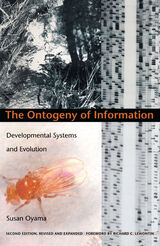 The Ontogeny of Information: Developmental Systems and Evolution
Susan Oyama
Duke University Press, 2000 The Ontogeny of Information is a critical intervention into the ongoing and perpetually troubling nature-nurture debates surrounding human development. Originally published in 1985, this was a foundational text in what is now the substantial field of developmental systems theory. In this revised edition Susan Oyama argues compellingly that nature and nurture are not alternative influences on human development but, rather, developmental products and the developmental processes that produce them.
Information, says Oyama, is thought to reside in molecules, cells, tissues, and the environment. When something wondrous occurs in the world, we tend to question whether the information guiding the transformation was pre-encoded in the organism or installed through experience or instruction. Oyama looks beyond this either-or question to focus on the history of such developments. She shows that what developmental “information” does depends on what is already in place and what alternatives are available. She terms this process “constructive interactionism,” whereby each combination of genes and environmental influences simultaneously interacts to produce a unique result. Ontogeny, then, is the result of dynamic and complex interactions in multileveled developmental systems.
The Ontogeny of Information challenges specialists in the fields of developmental biology, philosophy of biology, psychology, and sociology, and even nonspecialists, to reexamine the existing nature-nurture dichotomy as it relates to the history and formation of organisms.
 Ontological Catastrophe: Zizek and the Paradoxical Metaphysics of German Idealism
Joseph Carew
Michigan Publishing, 2014 In Ontological Catastrophe, Joseph Carew takes up the central question guiding Slavoj Žižek's philosophy: How could something like phenomenal reality emerge out of the meaninglessness of the Real? Carefully reconstructing and expanding upon his controversial reactualization of German Idealism, Carew argues that Žižek offers us an original, but perhaps terrifying, response: experience is possible only if we presuppose a prior moment of breakdown as the ontogenetic basis of subjectivity. Drawing upon resources found in Žižek, Lacanian psychoanalysis, and post-Kantian philosophy, Carew thus develops a new critical metaphysics—a metaphysics which is a variation upon the late German Idealist theme of balancing system and freedom, realism and idealism, in a single, self-reflexive theoretical construct—that challenges our understanding of nature, culture, and the ultimate structure of reality.
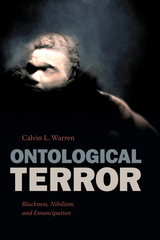 Ontological Terror: Blackness, Nihilism, and Emancipation
Calvin L. Warren
Duke University Press, 2018 In Ontological Terror Calvin L. Warren intervenes in Afro-pessimism, Heideggerian metaphysics, and black humanist philosophy by positing that the "Negro question" is intimately imbricated with questions of Being. Warren uses the figure of the antebellum free black as a philosophical paradigm for thinking through the tensions between blackness and Being. He illustrates how blacks embody a metaphysical nothing. This nothingness serves as a destabilizing presence and force as well as that which whiteness defines itself against. Thus, the function of blackness as giving form to nothing presents a terrifying problem for whites: they need blacks to affirm their existence, even as they despise the nothingness they represent. By pointing out how all humanism is based on investing blackness with nonbeing—a logic which reproduces antiblack violence and precludes any realization of equality, justice, and recognition for blacks—Warren urges the removal of the human from its metaphysical pedestal and the exploration of ways of existing that are not predicated on a grounding in being.
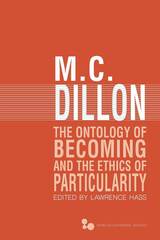 The Ontology of Becoming and the Ethics of Particularity
M. C. Dillon
Ohio University Press, 2012 M. C. Dillon (1938–2005) was widely regarded as a world-leading Merleau-Ponty scholar. His book Merleau-Ponty’s Ontology (1988) is recognized as a classic text that revolutionized the philosophical conversation about the great French phenomenologist. Dillon followed that book with two others: Semiological Reductionism, a critique of early-1990s linguistic reductionism, and Beyond Romance, a richly developed theory of love. At the time of his death, Dillon had nearly completed two further books to which he was passionately committed. The first one offers a highly original interpretation of Nietzsche’s ontology of becoming. The second offers a detailed ethical theory based on Merleau-Ponty’s account of carnal intersubjectivity. The Ontology of Becoming and the Ethics of Particularity collects these two manuscripts written by a distinguished philosopher at the peak of his powers—manuscripts that, taken together, offer a distinctive and powerful view of human life and ethical relations.
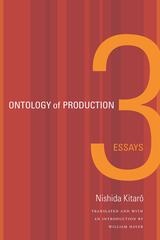 Ontology of Production: Three Essays
Nishida KitarM
Duke University Press, 2012 Ontology of Production presents three essays by the influential Japanese philosopher Nishida Kitarō (1870–1945), translated for the first time into English by William Haver. While previous translations of his writings have framed Nishida within Asian or Oriental philosophical traditions, Haver's introduction and approach to the texts rightly situate the work within Nishida's own commitment to Western philosophy. In particular, Haver focuses on Nishida's sustained and rigorous engagement with Marx's conception of production. Agreeing with Marx that ontology is production and production is ontology, Nishida in these three essays—"Expressive Activity" (1925), "The Standpoint of Active Intuition" (1935), and "Human Being" (1938)—addresses sense and reason, language and thought, intuition and appropriation, ultimately arguing that in this concept of production, ideality and materiality are neither mutually exclusive nor oppositional but, rather, coimmanent. Nishida's forceful articulation of the radical nature of Marx's theory of production is, Haver contends, particularly timely in today's speculation-driven global economy. Nishida's reading of Marx, which points to the inseparability of immaterial intellectual labor and material manual labor, provokes a reconsideration of Marxism's utility for making sense of—and resisting—the logic of contemporary capitalism.
 Ontology Of Work Of Art: Musical Work, Picture, Arch., Film
Roman Ingarden
Ohio University Press, 1989 In these studies Roman Ingarden investigates the nature and mode of being of four kinds of art works: the musical work, the picture, the architectural work, and the film. He establishes that the work of art is a purely intentional object but considers also its connections to the real world. By analyzing a work of art in its “constitutive heterogeneous strata,” Ingarden demonstrates that a work of art will reveal, when examined in the appropriate way, its own inherent structure. Further, he shows that in consequence of the art work’s structure, we must distinguish between the work itself and the concretizations of it by the listener or viewer.
Ingarden elaborates upon the conception of concretization which he present in The Literary Work of Art and applies it to music and visual art. He also employs the concept of aspect to clarify the ontic structure of these art works and the distinction between the concretization of the work and the work itself. The distinction between the work’s concretization — effectuated in the mental experiences of the listener or viewer — and the work itself serves to help Ingarden confirm and account for the work’s intersubjective identity.
The problem of aesthetic value, Ingarden maintains, can be fruitfully treated only after the ontic structure of art work has been clarified. His primary concern in Ontology of the Work of Art is to ascertain and describe that structure and the mode of existence of works of art. In addition, he offers several discussions of aesthetic value, showing in the m the connections between questions of aesthetic value and the structure of the work of art.
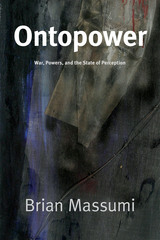 Ontopower: War, Powers, and the State of Perception
Brian Massumi
Duke University Press, 2015 Color coded terror alerts, invasion, drone war, rampant surveillance: all manifestations of the type of new power Brian Massumi theorizes in Ontopower. Through an in-depth examination of the War on Terror and the culture of crisis, Massumi identifies the emergence of preemption, which he characterizes as the operative logic of our time. Security threats, regardless of the existence of credible intelligence, are now felt into reality. Whereas nations once waited for a clear and present danger to emerge before using force, a threat's felt reality now demands launching a preemptive strike. Power refocuses on what may emerge, as that potential presents itself to feeling. This affective logic of potential washes back from the war front to become the dominant mode of power on the home front as well. This is ontopower—the mode of power embodying the logic of preemption across the full spectrum of force, from the “hard” (military intervention) to the "soft" (surveillance). With Ontopower, Massumi provides an original theory of power that explains not only current practices of war but the culture of insecurity permeating our contemporary neoliberal condition.
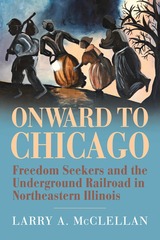 Onward to Chicago: Freedom Seekers and the Underground Railroad in Northeastern Illinois
Larry A. McClellan
Southern Illinois University Press, 2023 WINNER, 2023 Underground Railroad Free Press Hortense Simmons Memorial Prize for the Advancement of Knowledge!
Uncovering stories of the freedom network in northeastern Illinois
Decades before the Civil War, Illinois’s status as a free state beckoned enslaved people, particularly those in Kentucky and Missouri, to cross porous river borders and travel toward new lives. While traditional histories of the Underground Railroad in Illinois start in 1839, and focus largely on the romanticized tales of white men, Larry A. McClellan reframes the story, not only introducing readers to earlier freedom seekers, but also illustrating that those who bravely aided them were Black and white, men and women. McClellan features dozens of individuals who made dangerous journeys to reach freedom as well as residents in Chicago and across northeastern Illinois who made a deliberate choice to break the law to help.
Onward to Chicago charts the evolution of the northeastern Illinois freedom network and shows how, despite its small Black community, Chicago emerged as a point of refuge. The 1848 completion of the I & M Canal and later the Chicago to Detroit train system created more opportunities for Black men, women, and children to escape slavery. From eluding authorities to confronting kidnapping bands working out of St. Louis and southern Illinois, these stories of valor are inherently personal. Through deep research into local sources, McClellan presents the engrossing, entwined journeys of freedom seekers and the activists in Chicagoland who supported them.
McClellan includes specific freedom seeker journey stories and introduces Black and white activists who provided aid in a range of communities along particular routes. This narrative highlights how significant biracial collaboration led to friendships as Black and white abolitionists worked together to provide support for freedom seekers traveling through the area and ultimately to combat slavery in the United States.
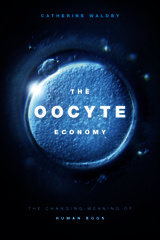 The Oocyte Economy: The Changing Meaning of Human Eggs
Catherine Waldby
Duke University Press, 2019 In recent years increasing numbers of women from wealthy countries have turned to egg donation, egg freezing, and in vitro fertilization to become pregnant, especially later in life. This trend has created new ways of using, exchanging, and understanding oocytes—the reproductive cells specific to women. In The Oocyte Economy Catherine Waldby draws on 130 interviews---with scientists, clinicians, and women who have either donated or frozen their oocytes or received those of another woman---to trace how the history of human oocytes' perceived value intersects with the biological and social life of women. Demonstrating how oocytes have come to be understood as discrete and scarce biomedical objects open to valuation, management, and exchange, Waldby examines the global market for oocytes and the power dynamics between recipients and the often younger and poorer donors. With this exploration of the oocyte economy and its contemporary biopolitical significance, Waldby rethinks the relationship between fertility, gendered experience, and biomedical innovation.
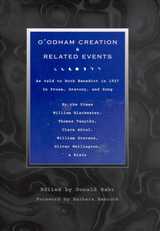 O'odham Creation and Related Events: As Told to Ruth Benedict in 1927
Edited by Donald Bahr; Foreword by Barbara Babcock
University of Arizona Press, 2001 The origin stories of the O’odham (Pima) Indians of Arizona are renowned for their beauty and complexity but have been collected in only a handful of books. This volume—the third full O’odham telling of ancientness to appear in print—brings together dozens of stories collected in 1927 by anthropologist Ruth Benedict during her only visit to the Pimas. Never before published, they helped inspire Benedict to write her groundbreaking book Patterns of Culture. The Pimas represented a way of life that Benedict at first called “Dionysian” after hearing the stories, narratives, songs, and oratory collected from various tellers during her three-month stay. The oral literature concerns the creation of the world and its transformations over time, the creation of the O’odham people, and other cultural traditions. Featuring a pair of man-gods, a female monster born of woman, and a conquest of Pimas by Pimas, they serve to mark the O’odham as a people distinct from their neighbors near and far. The present volume contains more stories than any other source of Pima tales, plus more of the songs and orations that accompanied a telling. It includes “The Rafter,” a host of ancillary stories, numerous Coyote tales, and additional speeches tied to the narratives of ancientness. One long story, “The Feud,” found only in this collection, shows similarities to the Maya Popol Vuh. Donald Bahr, a preeminent authority on the O’odham, has not only clarified the text but has also written an introduction that provides the background to the collection and analyzes Benedict’s probable reasons for never having published it. He has also included a previously unpublished text by Benedict, “Figures of Speech among the Pima.” O’odham Creation and Related Events represents an invaluable sourcebook of a people’s oral literature as well as a tribute to a singular scholar’s dedication and vision.
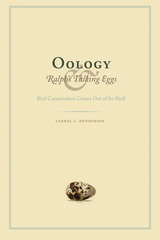 Oology and Ralph's Talking Eggs: Bird Conservation Comes Out of Its Shell
By Carrol L. Henderson
University of Texas Press, 2007 Before modern binoculars and cameras made it possible to observe birds closely in the wild, many people collected eggs as a way of learning about birds. Serious collectors called their avocation "oology" and kept meticulous records for each set of eggs: the bird's name, the species reference number, the quantity of eggs in the clutch, the date and location where the eggs were collected, and the collector's name. These documented egg collections, which typically date from the nineteenth and early twentieth centuries, now provide an important baseline from which to measure changes in the numbers, distribution, and nesting patterns of many species of birds. In Oology and Ralph's Talking Eggs, Carrol L. Henderson uses the vast egg collection of Ralph Handsaker, an Iowa farmer, as the starting point for a fascinating account of oology and its role in the origins of modern birdwatching, scientific ornithology, and bird conservation in North America. Henderson describes Handsaker's and other oologists' collecting activities, which included not only gathering bird eggs in the wild but also trading and purchasing eggs from collectors around the world. Henderson then spotlights sixty of the nearly five hundred bird species represented in the Handsaker collection, using them to tell the story of how birds such as the Snowy Egret, Greater Prairie Chicken, Atlantic Puffin, and Wood Duck have fared over the past hundred years or so since their eggs were gathered. Photos of the eggs and historical drawings and photos of the birds illustrate each species account. Henderson also links these bird histories to major milestones in bird conservation and bird protection laws in North America from 1875 to the present.
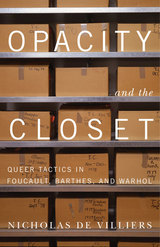 Opacity and the Closet: Queer Tactics in Foucault, Barthes, and Warhol
Nicholas de Villiers
University of Minnesota Press, 2012 Opacity and the Closet interrogates the viability of the metaphor of “the closet” when applied to three important queer figures in postwar American and French culture: the philosopher Michel Foucault, the literary critic Roland Barthes, and the pop artist Andy Warhol. Nicholas de Villiers proposes a new approach to these cultural icons that accounts for the queerness of their works and public personas. Rather than reading their self-presentations as “closeted,” de Villiers suggests that they invent and deploy productive strategies of “opacity” that resist the closet and the confessional discourse associated with it. Deconstructing binaries linked with the closet that have continued to influence both gay and straight receptions of these intellectual and pop celebrities, de Villiers illuminates the philosophical implications of this displacement for queer theory and introduces new ways to think about the space they make for queerness. Using the works of Foucault, Barthes, and Warhol to engage each other while exploring their shared historical context, de Villiers also shows their queer appropriations of the interview, the autobiography, the diary, and the documentary—forms typically linked to truth telling and authenticity.
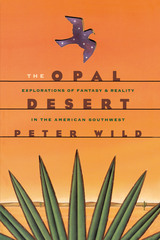 The Opal Desert: Explorations of Fantasy and Reality in the American Southwest
By Peter Wild
University of Texas Press, 1999 The opalescent deserts of the American Southwest have become romantic icons in the public imagination through the words of writers, the images of artists and photographers, and the visual storytelling of filmmakers. In this spirited, personal, beautifully written book, Peter Wild explores the lives and works of sixteen writers whose words have shaped our visions of the opal desert. Wild begins with Cabeza de Vaca, whose Relación of his desert wanderings sent treasure-hungry Spaniards searching for cities of gold. He goes on to discuss the works of both widely read and lesser-known nineteenth- and twentieth-century authors, including such luminaries as Mary Austin, Joseph Wood Krutch, Edward Abbey, Ann Zwinger, and Charles Bowden. He links all the writers as explorers of one kind or another, searching for tangible or intangible treasures, some finding and some losing their dreams in the opal desert.
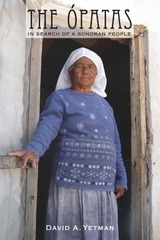 The Ópatas: In Search of a Sonoran People
David A. Yetman
University of Arizona Press, 2010 In 1600 they were the largest, most technologically advanced indigenous group in northwest Mexico, but today, though their descendants presumably live on in Sonora, almost no one claims descent from the Ópatas. The Ópatas seem to have “disappeared” as an ethnic group, their languages forgotten except for the names of the towns, plants, and geography of the Opatería, where they lived. Why did the Ópatas disappear from the historical record while their neighbors survived?
David Yetman, a leading ethnobotanist who has traveled extensively in Sonora, consulted more than two hundred archival sources to answer this question. The result is an accessible ethnohistory of the Ópatas, one that embraces historical complexity with an eye toward Opatan strategies of resistance and assimilation. Yetman’s account takes us through the Opatans’ initial encounters with the conquistadors, their resettlement in Jesuit missions, clashes with Apaches, their recruitment as miners, and several failed rebellions, and ultimately arrives at an explanation for their “disappearance.”
Yetman’s account is bolstered by conversations with present-day residents of the Opatería and includes a valuable appendix on the languages of the Opatería by linguistic anthropologist David Shaul. One of the few studies devoted exclusively to this indigenous group, The Ópatas: In Search of a Sonoran People marks a significant contribution to the literature on the history of the greater Southwest.
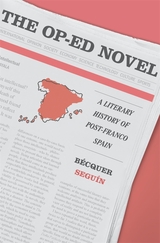 The Op-Ed Novel: A Literary History of Post-Franco Spain
Bécquer Seguín
Harvard University Press, 2024 “The Op-Ed Novel not only elegantly recounts a vital intellectual and cultural history of post-Franco Spain. Carefully exploring the careers of Spain’s most eminent writers, it demonstrates, too, the osmotic links between political journalism and literary fiction—salutary reading in the English-speaking countries, where politics and literature are still regarded as strangers to each other.”—Pankaj Mishra, author of Run and Hide
A new history of contemporary Spanish fiction through the prism of novelists’ newspaper columns.
Public intellectuals come in many different stripes, but most of them gain a following at least in part from their writing, whether in the form of magazine articles, newspaper columns, or full-length nonfiction. A few—James Baldwin and Joan Didion are celebrated examples—start out as novelists before turning to the rough-and-tumble of current affairs. In The Op-Ed Novel, Bécquer Seguín undertakes the first book-length study of how contemporary literature is shaped by opinion journalism, focusing on fiction writers who took to the papers in post-Franco Spain and became stewards of their country’s cultural, economic, and political future.
Following Spain’s transition to democracy in the late 1970s and early 1980s, internationally acclaimed novelists such as Javier Cercas, Antonio Muñoz Molina, and Javier Marías seized the opportunity to populate the opinion pages of the newly legal free press. The Op-Ed Novel analyzes how the argumentative styles and preoccupations of their columns in El País, Spain’s most widely read daily, bled into their fiction. These and other authors used their novels to settle scores with fellow intellectuals, make speculative historical claims, and advance partisan political projects. At the same time, their literary technique greatly invigorated opinion journalism.
A lively guide to the terroir of contemporary Spanish literature, The Op-Ed Novel offers a bird’s-eye view of both the post-Franco intellectual climate and the changing role of the novelist in public life.
Open Access
Walt Crawford
American Library Association, 2011
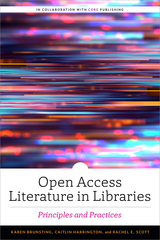 Open Access Literature in Libraries: Principles and Practices
Karen Brunsting, Caitlin Harrington, and Rachel E. Scott
American Library Association, 2022 Open Access has evolved into the most complex challenge of the scholarly publishing landscape and something libraries grapple with on a regular basis. But although librarians hold increasingly positive perceptions about OA, including its richness of unique content and immediacy of access, many lack the understanding, training, documentation, and knowledge of best practices that would allow them to engage with it confidently. This book helps to fill that gap, using a holistic approach that walks readers through the steps of integrating OA resources into library collections and supporting OA initiatives irrespective of budget, institution type, collection size, and staffing. Explaining definitions and models of OA, types of OA support, the tensions between free-to-read and libre OA, and other key topics, from this book readers will learn - the origins and growth of OA, how to define it, and some of the ways in which librarians have made connections to OA;
- where OA diverges from the historic role of library collection development policies and ways to bring OA into alignment with an institution's collection development principles and practices;
- real-world examples of how libraries have supported or integrated OA into their collections, including strategies for selecting and activating OA titles and collections for inclusion, offering open educational resources (OER) to students, samples of collection management workflows, and ideas for aligning collections with institutional repositories or other Green OA initiatives;
- guidance on financially supporting OA content, initiatives, and platforms;
- how OA publishing does and does not harmonize with diversity, equity, and inclusion initiatives; and
- tips for using ongoing assessment and evaluation to continuously support the library’s path to an open future.
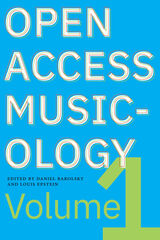 Open Access Musicology: Volume One
Louis Epstein
Lever Press, 2020 In the fall of 2015, a collection of faculty at liberal arts colleges began a conversation about the challenges we faced as instructors: Why were there so few course materials accessible to undergraduates and lay readers that reflected current scholarly debate? How can we convey the relevance of studying music history to current and future generations of students? And how might we represent and reflect the myriad, often conflicting perspectives, positions, and identities that make up both music’s history and the writers of history? Here we offer one response to those questions. Open Access Musicology is a collection of essays, written in an accessible style and with a focus on modes of inquiry rather than content coverage. Our authors draw from their experience as scholars but also as teachers. They have been asked to describe why they became musicologists in the first place and how their individual paths led to the topics they explore and the questions they pose. Like most scholarly literature, the essays have all been reviewed by experts in the field. Unlike all scholarly literature, the essays have also been reviewed by students at a variety of institutions for clarity and relevance. These essays are intended for undergraduates, graduate students, and interested readers without any particular expertise. They can be incorporated into courses on a range of topics as standalone readings or used to supplement textbooks. The topics introduce and explore a variety of subjects, practices, and methods but, above all, seek to stimulate classroom discussion on music history’s relevance to performers, listeners, and citizens.
 Open Access Musicology: Volume Three
Edited by Daniel Barolsky and Trudi Wright
Lever Press, 2025 Open Access Musicology (OAM) publishes peer-reviewed, scholarly essays primarily intended to serve students and teachers of music history, ethno/musicology, and music studies. The constantly evolving collection ensures that recent research and scholarship inspires classroom practice. OAM essays provide diverse and methodologically transparent models for student research, and introduce different modes of inquiry to inspire classroom discussion and varied assignments. Addressing a range of histories, methods, voices, and sounds, OAM embraces changes and tensions in the field to help students understand music scholarship.
These essays are intended for undergraduates, graduate students, and interested readers without any particular expertise. The topics introduce and explore a variety of subjects, practices, and methods but, above all, seek to stimulate classroom discussion on music history’s relevance to performers, listeners, and citizens. Open Access Musicology will never pretend to present complete histories, cover all elements of a subject, or satisfy the agenda of every reader. Rather, each essay provides an opening to further contemplation and study.
The third volume of Open Access Musicology presents provocative case studies and analyses through which readers can choose their own path while also putting these essays in conversations from those in previous volumes of OAM. This new volume challenges us to ask difficult questions about the place and function of music in our societies, on our stages, and in our institutions. The authors demonstrate ways in which the past can be re-imagined as well as the ways legacies of the past are inscribed in present-day practices, structures, histories, and beliefs. We invite readers to follow the thematic links between essays, pursue notes and other online resources, or simply repurpose the essay’s questions into new and exciting forms of research and creativity.
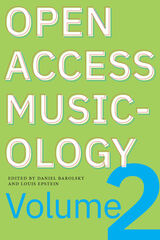 Open Access Musicology: Volume Two
edited by Louis Epstein and Daniel Barolsky
Lever Press, 2023 Open Access Musicology (OAM) publishes peer-reviewed, scholarly essays primarily intended to serve students and teachers of music history, ethno/musicology, and music studies. The constantly evolving collection ensures that recent research and scholarship inspires classroom practice. OAM essays provide diverse and methodologically transparent models for student research, and they introduce different modes of inquiry to inspire classroom discussion and varied assignments. Addressing a range of histories, methods, voices, and sounds, OAM embraces changes and tensions in the field to help students understand music scholarship.
In service of our student- and access-centered mission, Open Access Musicology is a free collection of essays, written in an engaging style and with a focus on modes of inquiry rather than coverage of content. Our authors draw from their experience as scholars but also as teachers. They not only make arguments, but also describe why they became musicologists in the first place and explain how their individual paths led to the topics they explore. Like most scholarly literature, the essays have all been reviewed by experts in the field. Unlike most scholarly literature, the essays have also been reviewed by students at a variety of institutions for clarity and relevance.
These essays are intended for undergraduates, graduate students, and interested readers without any particular expertise. They can be incorporated into courses on a range of topics as standalone readings, used to supplement textbooks, or read with an eye to new scholarly insights. The topics introduce and explore a variety of subjects, practices, and methods but, above all, seek to stimulate classroom discussion on music history’s relevance to performers, listeners, and citizens. Open Access Musicology will never pretend to present complete histories, cover all elements of a subject, or satisfy the agenda of every reader. Rather, each essay provides an opening to further contemplation and study. We invite readers to follow the thematic links between essays, pursue notes or other online resources provided by authors, or simply repurpose the essay’s questions into new and exciting forms of research and creativity.
Volume 2 of OAM expands the disciplinary, topical, and geographical ranges of our endeavor, with essays that rely on ethnographic and music theoretical methods as well as historical ones. The essays in this volume touch on music from Europe, South America, and Asia, spanning the 16th century to the present. Throughout, the contributing authors situate music in political, religious, racial, economic, and other cultural and disciplinary contexts. This volume therefore expands what scholars generally mean when they refer to “musicology” and “music,” always with an eye toward relevance and accessibility.
 Open Admissions: The Poetics and Pedagogy of Toni Cade Bambara, June Jordan, Audre Lorde, and Adrienne Rich in the Era of Free College
Danica Savonick
Duke University Press, 2024 In Open Admissions Danica Savonick traces the largely untold story of the teaching experience of Toni Cade Bambara, June Jordan, Audre Lorde, and Adrienne Rich at the City University of New York (cuny) in the late 1960s and early 1970s. This period, during which cuny guaranteed tuition-free admission to every city high school graduate, was one of the most controversial in US educational history. Analyzing their archival teaching materials—syllabi, lesson plans, and assignments—alongside their published work, Savonick reveals how these renowned writers were also transformative educators who developed creative methods of teaching their students to navigate and change the world. In fact, many of their methods—such as student-led courses, collaborative public projects, and the publication of student writing—anticipated the kinds of student-centered and antiracist pedagogies that have become popular in recent years. In addition to recovering the pedagogical legacy of these writers, Savonick shows how teaching in cuny’s free and open classrooms fundamentally altered their writing and, with it, the course of American literature and feminist criticism.
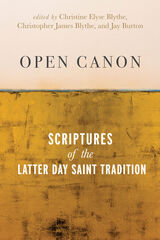 Open Canon: Scriptures of the Latter Day Saint Tradition
Edited by Christine Elyse Blythe, Christopher James Blythe, and Jay Burton
University of Utah Press, 2022 The publication of the Book of Mormon in 1830 began a new scriptural tradition. Resisting the long-established closed biblical canon, the Book of Mormon posited that the Bible was incomplete and corrupted. With a commitment to an open canon, a variety of Latter Day Saint denominations have emerged, each offering their own scriptural works to accompany the Bible, the Book of Mormon, and other revelations of Joseph Smith. Open Canon breaks new ground as the first volume to examine these writings as a single spiritual heritage.
Chapters cover both well-studied and lesser-studied works, introducing readers to scripture dictated by nineteenth- and twentieth-century revelators such as James Strang, Lucy Mack Smith, Sidney Rigdon, Harry Edgar Baker, and Charles B. Thompson, among others. Contributors detail how various Latter Day Saint denominations responded to scriptures introduced during the ministry of Joseph Smith and how churches have employed the Book of Mormon, the Doctrine and Covenants, and the Lectures of Faith over time. Bringing together studies from across denominational boundaries, this book considers what we can learn about Latter Day Saint resistance to the closed canon and the nature of a new American scriptural tradition.
Open Content Licensing: From Theory to Practice
Edited by Lucie Guibault and Christina Angelopoulos
Amsterdam University Press, 2011
Although open content licenses only account for a fraction of all copyright licenses currently enforced in the world, their introduction has had profound effects on the use and dissemination of information. This book explores the theoretical underpinnings of these licenses and offers insight on the practical advantages and inconveniences of their use. The essays collected here include an objective study of the principles of open content from the perspective of European intellectual property law as well as novel examinations of their possible implementation in different areas of the cultural or information industry.
Open Data and the Knowledge Society
Bridgette Wessels, Rachel Finn, Thordis Sveinsdottir, and Kush Wadhwa
Amsterdam University Press, 2017 While there is a lot of talk about how we now live in a knowledge society, the reality has been less impressive: We have yet to truly transition to a knowledge society-in part, this book argues, because discussion mostly focuses on a knowledge economy and information society rather than on ways to mobilise to create an actual knowledge society. That all may change, however, with the rise of open data and big data. This book considers the role of the open data movement in fostering transformation, showing that at the heart of any successful mobilisation will be an emerging open data ecosystem and new ways for societal actors to effectively produce and use data.
The Open Door: A Passover Haggadah
Rabbi Sue Levi Elwell
Central Conference of American Rabbis, 2002 The Open Door includes traditional and innovative blessings, extensive commentaries and supplemental readings, contemporary additions like Miriam's Cup, women's and men's voices in gender inclusive language, more than 40 pages of traditional and newly commissioned music, and magnificent full color art.
 The Open Door: Early Modern Wajorese Statecraft and Diaspora
Kathryn Anderson Wellen
Northern Illinois University Press, 2014 The Wajorese people were one of many groups that spread across Indonesian during the early modern era. In the wake of the Makassar War (1666–1669), the Dutch took control of Makassar on the Indonesian island of Sulawesi and used it to consolidate their power in the region. Because the Wajorese had sided with the war’s losers, they were treated very harshly and many opted to emigrate. They scattered far and wide across the Southeast Asian archipelago, settling in eastern Kalimantan, western Sumatra, the Straits of Malacca, and the Sulawesian port city of Makassar.
Wellen reconstructs the fascinating and little-told story of the Wajorese diaspora. Wajorese migrants exhibited remarkable versatility in adapting to local conditions in the areas where they settled. They perpetuated their own culture overseas while simultaneously using various assimilation strategies such as intermarriage to thrive in their adopted homelands. Relations between Wajorese migrants and their homeland intensified in the early 18th century when successive rulers in Wajoq deliberately sought to harness the growing military and commercial potential of the migrant communities. This effort culminated in the 1730s when the exiled La Maddukelleng, an Indonesian national hero, returned to Makassar from neighboring eastern Kalimantan and attempted to expel the Dutch from South Sulawesi. His campaign exemplifies the manner in which overseas Wajorese remained an essential part of Wajoq long after they left home.
The Open Door’s strong thematic organization allows readers with specific interests such as commercial law, family networks, diaspora, and comparative politics to quickly find fascinating and relevant information about this lesser-known Southeast Asian society.
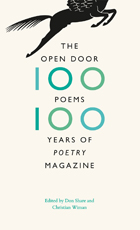 The Open Door: One Hundred Poems, One Hundred Years of "Poetry" Magazine
Edited by Don Share and Christian Wiman
University of Chicago Press, 2012 When Harriet Monroe founded Poetry magazine in Chicago in 1912, she began with an image: the Open Door. “May the great poet we are looking for never find it shut, or half-shut, against his ample genius!” For a century, the most important and enduring poets have walked through that door—William Carlos Williams and Wallace Stevens in its first years, Rae Armantrout and Kay Ryan in 2011. And at the same time, Poetry continues to discover the new voices who will be read a century from now. Poetry’s archives are incomparable, and to celebrate the magazine’s centennial, editors Don Share and Christian Wiman combed them to create a new kind of anthology, energized by the self-imposed limitation to one hundred poems. Rather than attempting to be exhaustive or definitive—or even to offer the most familiar works—they have assembled a collection of poems that, in their juxtaposition, echo across a century of poetry. Adrienne Rich appears alongside Charles Bukowski; poems by Isaac Rosenberg and Randall Jarrell on the two world wars flank a devastating Vietnam War poem by the lesser-known George Starbuck; August Kleinzahler’s “The Hereafter” precedes “Prufrock,” casting Eliot’s masterpiece in a new light. Short extracts from Poetry’s letters and criticism punctuate the verse selections, hinting at themes and threads and serving as guides, interlocutors, or dissenting voices. The resulting volume is an anthology like no other, a celebration of idiosyncrasy and invention, a vital monument to an institution that refuses to be static, and, most of all, a book that lovers of poetry will devour, debate, and keep close at hand.
Open Electromagnetic Waveguides
T. Rozzi
The Institution of Engineering and Technology, 1997 Electromagnetic waves are guided by open structures in a variety of applications at radio, microwave, millimetric and optical frequencies. Examples range from the propogation of radiowaves down the shaft of an oil rig to that of light through an optical fibre. As the guide is open, radiation may also be present, for example from a microstrip-fed patch or a slot antenna. These twin aspects of waveguiding and radiation are in fact closely interwoven and this book is the first to deal with the two by means of a single mathematical formalism.
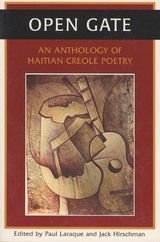 Open Gate: An Anthology of Haitian Creole Poetry
Edited by Paul Laraque and Jack Hirschman
Northwestern University Press, 2001 Open Gate is the first bilingual volume of Haitian Creole poetry published in English. Seven years in the making, this anthology is the result of the dedication of its editors and translators, Paul Laraque, Jack Hirschman and the Haitian poet Boadiba, as well as Max Manigat, one of the first teachers of Creole on the university level who was an invaluable advisor. The editors focus on contemporary Creole poetry that reflects the struggle for human rights in Haiti. The book is divided into three sections: Pioneers of Modern Haitian Creole poetry, beginning with the founder of modern Haitian Creole literature, Felix Morisseu-Leroy (19131998); the flowering of Haitian poetry as represented by the literary movement, "Society of Butterflies," some of whose members were jailed or exiled by the bloody Duvalier dictatorship; and the New Generation featuring primarily those poets in the Diaspora whose work has been published in the last 15 years.
 Open Government, Open Diplomacy: Conversations with a Former American Diplomat M. André Goodfriend
István Hargittai
Central European University Press, 2023 André Goodfriend was Deputy Chief of Mission from 2013 to 2015 at the US Embassy in Budapest. In the absence of an ambassador, most of the time he was Chargé d’Affaires. Goodfriend represented his country, and for that matter, liberal democracy, in the early period of the increasingly autocratic Orbán regime. This tenure was distinguished by an unusually high public visibility and broad-based popularity. This book contains the distilled essence of conversations recorded in the fall of 2015 and in the years after his departure.
Aside from Goodfriend’s reflections on his personal history, the main focus of the deliberations is on open government: its characteristics, preconditions, benefits, and its relation to modern diplomacy. The mindset of a democracy-rooted diplomat with a working experience in an increasingly autocratic regime lends a particular perspective to the topics discussed. These topics include the fight against corruption, the protection of civil society, crisis prevention, education, economy, international relations, applied humanities, and the use of the social and traditional media to achieve policy goals.
This book presents modern, “people-friendly” diplomacy in an era in which public officials are increasingly expected to be transparent and engaged.
 The Open Hand: Arguing as an Art of Peace
Barry M. Kroll
Utah State University Press, 2013 Based on five years of classroom experimentation, The Open Hand presents a highly practical yet transformational philosophy of teaching argumentative writing. In his course Arguing as an Art of Peace, Barry Kroll uses the open hand to represent an alternative approach to argument, asking students to argue in a way that promotes harmony rather than divisiveness and avoiding conventional conflict-based approaches. Kroll cultivates a bodily investigation of noncombative argument, offering direct pedagogical strategies anchored in three modalities of learning—conceptual-procedural, kinesthetic, and contemplative—and projects, activities, assignments, informal responses, and final papers for students. Kinesthetic exercises derived from martial arts and contemplative meditation and mindfulness practices are key to the approach, with Kroll specifically using movement as a physical analogy for tactics of arguing. Collaboration, mediation, and empathy are important yet overlooked values in communicative exchange. This practical, engaging, and accessible guide for teachers contains clear examples and compelling discussions of pedagogical strategies that teach students not only how to write persuasively but also how to deal with personal conflict in their daily lives.
 Open Horizons
Sigurd F. Olson
University of Minnesota Press, 1998 Olson’s inspirational life story, told in his own words, now available in paperback. Sigurd Olson’s love affair with the wilderness began in a stream near his house in Wisconsin-he caught his first trout there with a tamarack wand, black thread, and a grasshopper as bait. Open Horizons is his autobiography, and in it he recounts a life lived on and for the land, from the wonder of boyhood fishing expeditions to decades-long conservation battles. Writing always with the sensitive, lyric prose that characterizes his works, Olson recalls his pioneering youth on a remote Wisconsin farm, his summers as a wilderness canoe guide, and his thousands of miles of travel through the wilds of this country and Canada. “Open Horizons is the story of the unknowns I have discovered, and gone through,” he writes. While telling his story, Olson makes a compelling case for preserving the wilderness. He puts forth his own life as an example of how nature can have a spiritual effect on the human soul, and proposes diligence on behalf of those who fight to conserve our forests, wetlands, and dunes. “If we can move into an open horizon where we can live in our modern world with ancient dreams that have always stirred us, then our work will have been done.”ISBN 0-8166-3037-2 Paper $14.95256 pages 12 line drawings 5 1/2 x 8 1/4 SeptemberFesler-Lampert Minnesota Heritage Book SeriesTranslation inquiries: University of Minnesota Press
 Open House: Conversations with Writers About Community
Edited by Kristina Marie Darling
Tupelo Press, 2025 An ideal supplemental text for courses in creative writing, professional development, leadership studies, management studies, and publishing, with strategies for leadership- and community-building within academia and beyond its boundaries.
This book offers a practical guide to building community, fostering collaboration, and inspiring generosity through the creative arts. This collection of original essays features an accomplished roster of contributors with backgrounds in diverse fields, including literary translation, magazine editing, publishing, higher education, and curriculum design. By featuring successful writers who represent such a wide range of skillsets and career paths, this book helps students envision themselves as leaders in the university and well beyond its boundaries.
In a cultural moment where graduates often seek meaningful careers outside of academia, this essay collection also offers an introduction to alt-ac career paths and the unique opportunities for effecting social change in these roles. Focusing on techniques that have broad applications for high school teachers, nonprofit leaders, community outreach organizations, and college classrooms, each chapter includes an original essay from a contemporary writer, editor, or nonprofit leader in the arts, culminating in a set of exercises for individuals and groups, which focus on empathy, citizenship, and community stewardship.
Contributors include Traci Brimhall, Chris Campanioni, Wendy Chen, Kristina Marie Darling, Ming Lauren Holden, John James, Dean Rader, and Zach Savich.
Open Interval
Lyrae Van Clief-Stefanon
University of Pittsburgh Press, 2009 Drawing upon intersections of astronomy and mathematics, history, literature, and lived experience, the poems in Open Interval locate the self in the interval between body and name.
The Open Invitation: Activist Video, Mexico, and the Politics of Affect
Freya Schiwy
University of Pittsburgh Press, 2019 The Open Invitation explores the relationship between prefigurative politics and activist video. Schiwy analyzes activist videos from the 2006 uprising in Oaxaca, the Zapatista’s Other Campaign, as well as collaborative and community video from the Yucatán. Schiwy argues that transnational activist videos and community videos in indigenous languages reveal collaborations and that their political impact cannot be grasped through the concept of the public sphere. Instead, she places these videos in dialogue with recent efforts to understand the political with communality, a mode of governance articulated in indigenous struggles for autonomy, and with cinematic politics of affect.
Open Marxism 3: Emancipating Marx
Kosmas Psychopedis
Pluto Press, 1995 The third of four volumes in the Open Marxism series, this book explores dialectics, epistemology, social emancipation, value theory, historical materialism and the relationship between feminism and Marxism.
The contributors argue that sociological heritage which grew up under the banner of scientific Marxism has had a detrimental effect on the movement of socialist thinking. The 'emancipation of Marx' implies both freeing Marx from the understanding of the 20th century and the freeing of the human spirit from the control of capital.
Open Marxism 4: Against a Closing World
Ana Cecilia Dinerstein
Pluto Press, 2019 The publication of the first three volumes of Open Marxism in the 1990s has had a transformative impact on how we think about Marxism in the twenty-first century. 'Open Marxism' aims to think of Marxism as a theory of struggle, not as an objective analysis of capitalist domination, arguing that money, capital and the state are forms of struggle from above and therefore open to resistance and rebellion. As critical thought is squeezed out of universities and geographical shifts shape the terrain of theoretical discussion, the editors argue now is the time for a new volume that reflects the work that has been carried out during the past decade. Emphasising the contemporary relevance of 'open Marxism' in our moment of political and economic uncertainty, the collection shines a light on its significance for activists and academics today.
Open Marxism 4: Against a Closing World
Ana Cecilia Dinerstein
Pluto Press, 2019 The publication of the first three volumes of Open Marxism in the 1990s has had a transformative impact on how we think about Marxism in the twenty-first century. 'Open Marxism' aims to think of Marxism as a theory of struggle, not as an objective analysis of capitalist domination, arguing that money, capital and the state are forms of struggle from above and therefore open to resistance and rebellion. As critical thought is squeezed out of universities and geographical shifts shape the terrain of theoretical discussion, the editors argue now is the time for a new volume that reflects the work that has been carried out during the past decade. Emphasising the contemporary relevance of 'open Marxism' in our moment of political and economic uncertainty, the collection shines a light on its significance for activists and academics today.
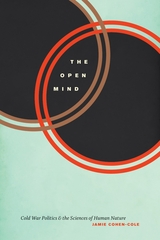 The Open Mind: Cold War Politics and the Sciences of Human Nature
Jamie Cohen-Cole
University of Chicago Press, 2013 The Open Mind chronicles the development and promulgation of a scientific vision of the rational, creative, and autonomous self, demonstrating how this self became a defining feature of Cold War culture. Jamie Cohen-Cole illustrates how from 1945 to 1965 policy makers and social critics used the idea of an open-minded human nature to advance centrist politics. They reshaped intellectual culture and instigated nationwide educational reform that promoted more open, and indeed more human, minds. The new field of cognitive science was central to this project, as it used popular support for open-mindedness to overthrow the then-dominant behaviorist view that the mind either could not be studied scientifically or did not exist. Cognitive science also underwrote the political implications of the open mind by treating it as the essential feature of human nature. While the open mind unified America in the first two decades after World War II, between 1965 and 1975 battles over the open mind fractured American culture as the ties between political centrism and the scientific account of human nature began to unravel. During the late 1960s, feminists and the New Left repurposed Cold War era psychological tools to redefine open-mindedness as a characteristic of left-wing politics. As a result, once-liberal intellectuals became neoconservative, and in the early 1970s, struggles against open-mindedness gave energy and purpose to the right wing.
 Open Minded: Working Out the Logic of the Soul
Jonathan Lear
Harvard University Press, 1999 Freud is discredited, so we don’t have to think about the darker strains of unconscious motivation anymore. We know what moves our political leaders, so we don’t have to look too closely at their thinking either. In fact, everywhere we look in contemporary culture, knowingness has taken the place of thought. This book is a spirited assault on that deadening trend, especially as it affects our deepest attempts to understand the human psyche—in philosophy and psychoanalysis. It explodes the widespread notion that we already know the problems and proper methods in these fields and so no longer need to ask crucial questions about the structure of human subjectivity.“What is psychology?” Open Minded is not so much an answer to this question as an attempt to understand what is being asked. The inquiry leads Jonathan Lear, a philosopher and psychoanalyst, back to Plato and Aristotle, to Freud and psychoanalysis, and to Wittgenstein. Lear argues that Freud and, more generally, psychoanalysis are the worthy inheritors of the Greek attempt to put our mindedness on display. There are also, he contends, deep affinities running through the works of Freud and Wittgenstein, despite their obvious differences. Both are concerned with how fantasy shapes our self-understanding; both reveal how life’s activities show more than we are able to say.The philosophical tradition has portrayed the mind as more rational than it is, even when trying to account for irrationality. Psychoanalysis shows us the mind as inherently restless, tending to disrupt its own functioning. And empirical psychology, for its part, ignores those aspects of human subjectivity that elude objective description. By triangulating between the Greeks, Freud, and Wittgenstein, Lear helps us recover a sense of what it is to be open-minded in our inquiries into the human soul.
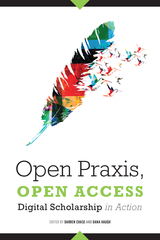 Open Praxis, Open Access: Digital Scholarship In Action
Darren Chase
American Library Association, 2020 Many in the world of scholarship share the conviction that open access will be the engine of transformation leading to more culture, more research, more discovery, and more solutions to small and big problems. This collection brings together librarians, scholars, practitioners, policymakers, and thinkers to take measure of the open access movement. The editors meld critical essays, research, and case studies to offer an authoritative exploration of - the concept of openness in scholarship, with an overview of how it is evolving in the US, Canada, Europe, and Asia;
- open access publishing, including funding models and the future of library science journals;
- the state of institutional repositories;
- Open Educational Resources (OER) at universities and a consortium, in subject areas ranging from literary studies to textbooks; and
- open science, open data, and a pilot data catalog for raising the visibility of protected data.
Open Resonator Microwave Sensor Systems for Industrial Gauging: A practical design approach
Nathan Ida
The Institution of Engineering and Technology, 2018 Open resonator microwave sensors allow accurate sensing, monitoring and measurement of properties such as dimension and moisture content in materials including dielectrics, rubber, polymers, paper, fabrics and wood veneers. This book presents a coherent and entirely practical approach to the design and use of systems based on these sensors in industrial environments, showing how they can provide meaningful, accurate and industrially-viable methods of gauging.
Open Roads, Closed Borders: The Contemporary French-Language Road Movie
Edited by Michael Gott and Thibaut Schilt
Intellect Books, 2013 This is the first collection of essays about French-language road movies, a particularly rich yet critically neglected cinematic category. These films, the contributors argue, offer important perspectives on contemporary French ideas about national identity, France’s former colonies, Europe, and the rest of the world. Taken together, the essays illustrate how travel and road motifs have enabled directors of various national origins and backgrounds to reimagine space and move beyond simple oppositions such as Islam and secularism, local and global, home and away, France and Africa, and East and West.
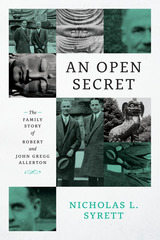 An Open Secret: The Family Story of Robert and John Gregg Allerton
Nicholas L. Syrett
University of Chicago Press, 2021 In 1922 Robert Allerton—described by the Chicago Tribune as the “richest bachelor in Chicago”—met a twenty-two-year-old University of Illinois architecture student named John Gregg, who was twenty-six years his junior. Virtually inseparable from then on, they began publicly referring to one another as father and son within a couple years of meeting. In 1960, after nearly four decades together, and with Robert Allerton nearing ninety, they embarked on a daringly nonconformist move: Allerton legally adopted the sixty-year-old Gregg as his son, the first such adoption of an adult in Illinois history.
An Open Secret tells the striking story of these two iconoclasts, locating them among their queer contemporaries and exploring why becoming father and son made a surprising kind of sense for a twentieth-century couple who had every monetary advantage but one glaring problem: they wanted to be together publicly in a society that did not tolerate their love. Deftly exploring the nature of their design, domestic, and philanthropic projects, Nicholas L. Syrett illuminates how viewing the Allertons as both a same-sex couple and an adopted family is crucial to understanding their relationship’s profound queerness. By digging deep into the lives of two men who operated largely as ciphers in their own time, he opens up provocative new lanes to consider the diversity of kinship ties in modern US history.
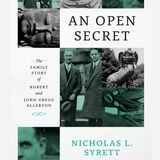 An Open Secret: The Family Story of Robert and John Gregg Allerton
Nicholas L. Syrett
University of Chicago Press, 2021 This is an auto-narrated audiobook edition of this book. In 1922 Robert Allerton—described by the Chicago Tribune as the “richest bachelor in Chicago”—met a twenty-two-year-old University of Illinois architecture student named John Gregg, who was twenty-six years his junior. Virtually inseparable from then on, they began publicly referring to one another as father and son within a couple years of meeting. In 1960, after nearly four decades together, and with Robert Allerton nearing ninety, they embarked on a daringly nonconformist move: Allerton legally adopted the sixty-year-old Gregg as his son, the first such adoption of an adult in Illinois history.
An Open Secret tells the striking story of these two iconoclasts, locating them among their queer contemporaries and exploring why becoming father and son made a surprising kind of sense for a twentieth-century couple who had every monetary advantage but one glaring problem: they wanted to be together publicly in a society that did not tolerate their love. Deftly exploring the nature of their design, domestic, and philanthropic projects, Nicholas L. Syrett illuminates how viewing the Allertons as both a same-sex couple and an adopted family is crucial to understanding their relationship’s profound queerness. By digging deep into the lives of two men who operated largely as ciphers in their own time, he opens up provocative new lanes to consider the diversity of kinship ties in modern US history.
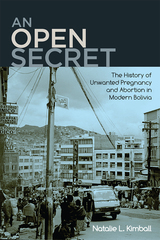 An Open Secret: The History of Unwanted Pregnancy and Abortion in Modern Bolivia
Natalie L. Kimball
Rutgers University Press, 2020 Many women throughout the world face the challenge of confronting an unexpected or an unwanted pregnancy, yet these experiences are often shrouded in silence. An Open Secret draws on personal interviews and medical records to uncover the history of women’s experiences with unwanted pregnancy and abortion in the South American country of Bolivia. This Andean nation is home to a diverse population of indigenous and mixed-race individuals who practice a range of medical traditions. Centering on the cities of La Paz and El Alto, the book explores how women decided whether to continue or terminate their pregnancies and the medical practices to which women recurred in their search for reproductive health care between the early 1950s and 2010. It demonstrates that, far from constituting private events with little impact on the public sphere, women’s intimate experiences with pregnancy contributed to changing policies and services in reproductive health in Bolivia.
Open Secrets: Israeli Foreign and Nuclear Policies
Israel Shahak
Pluto Press, 1997 ‘As a critic of Zionism and as an opponent of Jewish exclusivity, Israel Shahak is special. He possesses in-depth knowledge of Israeli society, Jewish culture and the history of his people. His humanitarian concerns and commitments are extensive; his work as a human rights campaigner ... is enormous ... Shahak provides insights [in Open Secrets] that are often far more penetrating than what has been written by others ... Little of the information and few of the insights in Open Secrets can be found in other books that focus on Israel and the Middle East ... Open Secrets is an excellent book for required reading in History, political science and/or international affairs courses in which there is consideration of Israel in the Middle East.’ The Washington Report on Middle East Affairs
 Open Secrets: The Ultimate Guide to Marketing Your Book
Tupelo Press
Tupelo Press, 2021 • All authors desire to get their books into the hands of as many readers as possible. Though it is a publisher’s role to aid and assist authors in marketing and publicity for every book, the role of any publisher necessarily takes a back seat to your all-important efforts. Nobody else can do this essential work as effectively as you can.
• This handbook will prepare you to take the lead in executing your own publicity plan. It is designed to guide you, step-by-step, through the process of making a success of your book. It’s jam-packed with the essential tools, ideas, and resources you’ll need to achieve that goal, from an independent publisher who has provided a launching pad for authors like Ilya Kaminsky, Aimee Nezhukumatathil, Jennifer Michael Hecht, Maggie Smith, Matthew Zapruder, and 250 others.
• Thoroughly and joyfully embrace the notion of self-promotion, knowing that it’s the book—your book—you’re breathing life into. You wouldn’t have written and published your book if you didn’t believe in it, and in yourself, as a writer with important artistic talent to share. Your publisher believes in you. Your family and friends believe in you. Your current readers believe in you. And future readers will believe in you.
Jeffrey Levine, Publisher, Tupelo Press
You’ll learn the essentials for book marketing as an indie author in a digital age:
• Develop your author image and brand across social channels
• Create an engaging social media presence
• Grow your audience and meaningfully connect with them
• Build an attractive, searchable website—no coding skills needed
• Launch a publicity campaign that gets you reviews
• Ensure your book is on bookstore and library shelves
• Practice mindful literary citizenship
• Learn from Tupelo authors (who were in your shoes not too long ago!)
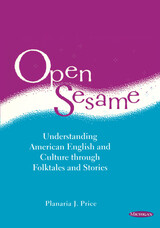 Open Sesame: Understanding American English and Culture through Folktales and Stories
Planaria J. Price
University of Michigan Press, 1997 We humans learn our language and culture through the stories and rhymes of tales we learned as children. By learning the twenty-six most popular and enduring stories collected in Open Sesame, ESL students learn about Americans and about life in America. Open Sesame facilitates discussions comparing and contrasting American folktales and stories with those of students' native cultures. Specific American cultural values are found in the text and debated by students who often find those values confusing and in conflict with their own values. The allusions learned from these American stories are extremely helpful for fluency.
Included are such classic tales as "Cinderella," "The Three Pigs," "Johnny Appleseed," and "Rip Van Winkle," and excerpts from more recent stories such as Charlotte's Web and The Wizard of Oz.
The goals of Open Sesame are to teach reading skills, build vocabulary, stimulate discussion, and develop critical-thinking skills. The text may also be of interest in the disciplines of children's literature, folklore, and cross-cultural studies.
The text is accompanied by cassettes that "tell" the stories for learners who have not yet acquired all the vocabulary needed to read these original stories and folktales on their own.
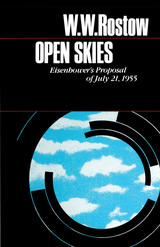 Open Skies: Eisenhower's Proposal of July 21, 1955
By W.W. Rostow
University of Texas Press, 1982 In 1955 the United States and the Soviet Union were matching steps in a race to develop missiles tipped with thermonuclear weapons. American officials were frustrated and alarmed by their inability to learn the scale and progress of the Soviet program, which directly threatened the security of the United States, and they were convinced that serious arms control measures required reliable means for mutual inspection. The result: President Dwight D. Eisenhower's dramatic Open Skies proposal, advanced—and rejected—at the Geneva summit of 1955.
Vetoed by Nikita Khrushchev, Eisenhower's proposal to allow mutual aerial inspection between the United States and the U.S.S.R. was accepted as policy only after satellite photography became feasible. But at the time of the 1955 summit, it was a stunning, if transient, psychological and political victory for the United States and its president.
W. W. Rostow was an active participant in this important episode in American history, and his is the first authoritative account of how Eisenhower's Open Skies proposal came to be. His insider's knowledge, combined with data from hitherto unexploited documentary sources, vividly brings to life the discussions and events that preceded the president's proposal.
Rostow explores the diplomatic forces that led to Eisenhower's reluctant acceptance of a summit with the Soviets. He tracks the origins of the Open Skies concept to an obscure meeting organized at Quantico Marine Corps Base by presidential adviser Nelson Rockefeller. He describes the tensions between Rockefeller and Secretary of State John Foster Dulles that complicated Eisenhower's task in mounting the initiative for Open Skies and explains the differences between Eisenhower himself and Rockefeller over postsummit policy that provoked the latter's resignation. He examines Soviet motives and objectives at Geneva. Finally, Rostow reflects on the meaning of this fascinating episode in American history, in particular its importance to later arms control negotiations.
 Open Society Unresolved: The Contemporary Relevance of a Contested Idea
Christof Royer
Central European University Press, 2023 Is the concept of open society still relevant in the 21st century? Do the current social, moral, and political realities call for a drastic revision of this concept? Here fifteen essays address real-world contemporary challenges to open society from a variety of perspectives. What unites the individual authors and chapters is an interest in open society’s continuing usefulness and relevance to address current problems. And what distinguishes them is a rich variety of geographical and cultural backgrounds, and a wide range of academic disciplines and traditions. While focusing on probing the contemporary relevance of the concept, several chapters approach it historically. The book features a comprehensive introduction to the history and current ‘uses’ of the theory of open society. The authors link the concept to contemporary themes including education, Artificial Intelligence, cognitive science, African cosmology, colonialism, and feminism. The diversity of viewpoints in the analysis reflects a commitment to plurality that is at the heart of this book and of the idea of open society itself.
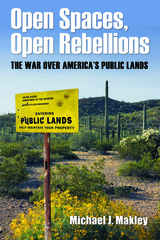 Open Spaces, Open Rebellions: The War over America’s Public Lands
Michael J. Makley
University of Massachusetts Press, 2017 In the spring of 2014, rancher Cliven Bundy and his armed supporters engaged in a standoff with Bureau of Land Management agents, and once again, the federal management of public lands was in the national spotlight. The conflict arose because Bundy had not paid required grazing fees and a federal judge ordered the confiscation of his cattle. The ensuing media coverage highlighted information that may have surprised those outside the rural West: the federal government manages 640 million acres of public land, with over 90 percent of it in the West.
In Open Spaces, Open Rebellions, Michael J. Makley offers a succinct and compelling history of the federal government's management of public lands. As Makley reveals, beginning in the nineteenth century and continuing to the present day, debates over how best to balance the use of these lands by the general public, fee-paying ranchers, and resource developers have always been complex and contentious. Indeed, these debates have often been met with demands for privatization or state control, best exemplified by the Sagebrush Rebellion of the 1980s and the 2016 occupation of Oregon's Malheur National Wildlife Refuge.
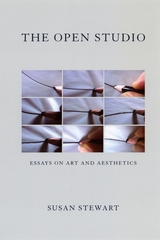 The Open Studio: Essays on Art and Aesthetics
Susan Stewart
University of Chicago Press, 2004 Poets often have responded vitally to the art of their time, and ever since Susan Stewart began writing about art in the early 1980s, her work has resonated with practicing artists, curators, art historians, and art critics. Rooted in a broad and learned range of references, Stewart's fresh and independent essays bridge the fields of literature, aesthetics, and contemporary art.
Gathering most of Stewart's writing on contemporary art—long and short pieces first published in small magazines, museum and gallery publications, and edited collections—The Open Studio illuminates work ranging from the installation art of Ann Hamilton to the sculptures and watercolors of Thomas Schütte, the prints and animations of William Kentridge to the films of Tacita Dean. Stewart's essays are often the record of studio conversations with living artists and curators, and of the afterlife of those experiences in the solitude of her own study. Considering a wide variety of art forms, Stewart finds pathbreaking ways to explore them. Whether she is following central traditions of painting, drawing, sculpture, film, photography, and printmaking or exploring the less well-known realms of portrait miniatures, collecting practices, doll-making, music boxes, and gardening, Stewart speaks to the creative process in general and to the relation between art and ethics.
The Open Studio will be read eagerly by scholars of art, poetry, and visual theory; by historians interested in the links between contemporary and classic literature and art; and by teachers, students, and practitioners of the visual arts.
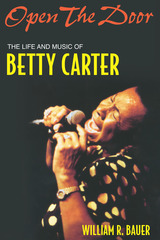 Open the Door: The Life and Music of Betty Carter
William R. Bauer
University of Michigan Press, 2003 Betty Carter's lifelong influence on the music world is unparalleled. Her contributions to music as a jazz singer, composer, arranger, and teacher have fostered a generation of musicians and fans.
This book looks at Betty Carter's contribution to the music world and delves behind the scenes to show Carter's growth as a businesswoman who took charge of her career.
Drawing upon revealing interviews with Carter, the author shows how ever-changing shifts in the music industry affected the singer's life and influenced her music. Bauer shows through his analysis of her musical examples how Carter absorbed various musical influences, from Sarah Vaughan and Billie Holiday to Miles Davis, and made them her own. From her apprenticeship with Gladys Hampton, Carter grew to become a shrewd dealer who learned to do her own contracting, A&R, and marketing and distribution. By chronicling one of jazz's great singers and composers, the book sheds light on how early jazz musicians got their work to the public and how this process has changed during the past fifty years.
 Open: The Progressive Case for Free Trade, Immigration, and Global Capital
Kimberly Clausing
Harvard University Press, 2019 A Financial Times Best Economics Book of the Year
A Foreign Affairs Best Book of the Year
A Fareed Zakaria GPS Book of the Week
“A highly intelligent, fact-based defense of the virtues of an open, competitive economy and society.”
—Fareed Zakaria
“A vitally important corrective to the current populist moment…Open points the way to a kinder, gentler version of globalization that ensures that the gains are shared by all.”
—Justin Wolfers
“Clausing’s important book lays out the economics of globalization and, more important, shows how globalization can be made to work for the vast majority of Americans. I hope the next President of the United States takes its lessons on board.”
—Lawrence H. Summers, former Secretary of the Treasury
“Makes a strong case in favor of foreign trade in goods and services, the cross-border movement of capital, and immigration. This valuable book amounts to a primer on globalization.”
—Richard N. Cooper, Foreign Affairs
Critics on the Left have long attacked open markets and free trade agreements for exploiting the poor and undermining labor, while those on the Right complain that they unjustly penalize workers back home. Kimberly Clausing takes on old and new skeptics in her compelling case that open economies are actually a force for good. Turning to the data to separate substance from spin, she shows how international trade makes countries richer, raises living standards, benefits consumers, and brings nations together. At a time when borders are closing and the safety of global supply chains is being thrown into question, she outlines a clear agenda to manage globalization more effectively, presenting strategies to equip workers for a modern economy and establish a better partnership between labor and the business community.
Open to Disruption: Time and Craft in the Practice of Slow Sociology
Anita Ilta Garey
Vanderbilt University Press, 2014 At a time when an emphasis on productivity in higher education threatens to undermine well-crafted research, these highly reflexive essays capture the sometimes profound intellectual effects that may accompany disrupted scholarship. They reveal that over long periods of time relationships with people studied invariably change, sometimes in dramatic ways. They illustrate how world events such as 9/11 and economic cycles impact individual biographies.
Some researchers describe how disruptions prompted them to expand the boundaries of their discipline and invent concepts that could more accurately describe phenomena that previously had no name and no scholarly history. Sometimes scholars themselves caused the disruption as they circled back to work they had considered "done" and allowed the possibility of rethinking earlier findings.
Open to the Public: Studies in Japan's Recent Past, Volume 10
Leslie Pincus, ed.
Duke University Press In modern Japan, where the mechanisms of producing national consensus and social conformity operate with considerable force and efficacy, the democratic credentials of public life are a pressing question. Beginning with the Pacific War and extending through the early 1970s, this issue of positions explores a number of sites in Japan's postwar history where individuals and groups endeavored to reconfigure the social, cultural, and political dimensions of public space and public life. While the collection does not offer comprehensive coverage of all the manifestations of "public" in postwar Japan, it presents a series of "local" studies which, taken together, provide a suggestive map of the contours of the public in postwar Japan.
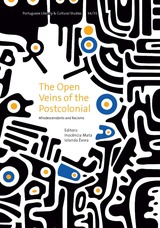 The Open Veins of the Postcolonial: Afrodescendants and Racisms
Edited by Inocência Mata and Iolanda Évora
Tagus Press, 2022 Making an obvious reference to Eduardo Galeano's Open Veins of Latin America, this volume proves that the veins of the postcolonial remain open, having prolonged and reproduced themselves over the course of decades. "The Open Veins of the Postcolonial" traces the emergence of epistemological categories and offers thematic analyses of racial and ethnic differences, as well as those arising from sociability, representations, and sociopolitical and cultural dynamics. This volume likewise unmasks the naturalizing discourse of the ideology of subalternity and institutionalized discrimination through various "beliefs" and tacit practices; discusses how to articulate the place of belonging with ethno-racial identity in the twenty-first century; and contributes to the broad discussion initiated by the United Nations' declaration of the International Decade for People of African Descent, 2015–2024 (Resolution 68/237).
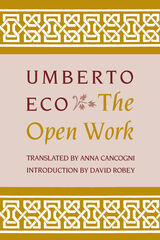 The Open Work
Umberto Eco
Harvard University Press, 1989 More than twenty years after its original appearance in Italian, The Open Work remains significant for its powerful concept of "openness"--the artist's decision to leave arrangements of some constituents of a work to the public or to chance--and for its striking anticipation of two major themes of contemporary literary theory: the element of multiplicity and plurality in art, and the insistence on literary response as an interactive process between reader and text. The questions Umberto Eco raises, and the answers he suggests, are intertwined in the continuing debate on literature, art, and culture in general.
This entirely new edition, edited for the English-language audience with the approval of Eco himself, includes an authoritative introduction by David Robey that explores Eco's thought at the period of The Open Work, prior to his absorption in semiotics. The book now contains key essays on Eco's mentor Luigi Pareyson, on television and mass culture, and on the politics of art. Harvard University Press will publish separately and simultaneously the extended study of James Joyce that was originally part of The Open Work, entitled The Aesthetics of Chaosmos: The Middle Ages of James Joyce. The Open Work explores a set of issues in aesthetics that remain central to critical theory, and does so in a characteristically vivid style. Eco's convincing manner of presenting ideas and his instinct for the lively example are threaded compellingly throughout. This book is at once a major treatise in modern aesthetics and an excellent introduction to Eco's thought.
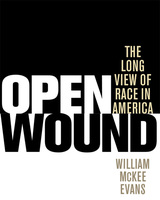 Open Wound: The Long View of Race in America
William McKee Evans
University of Illinois Press, 2009 In this boldly interpretive narrative, William McKee Evans tells the story of America's paradox of democracy entangled with a centuries-old system of racial oppression. This racial system of interacting practices and ideas first justified black slavery, then, after the Civil War, other forms of coerced black labor and, today, black poverty and unemployment. At three historical moments, a crisis in the larger society opened political space for idealists to challenge the racial system: during the American Revolution, then during the "irrepressible conflict" ending in the Civil War, and, finally, during the Cold War and the colonial liberation movements. Each challenge resulted in an historic advance. But none swept clean. Many African Americans remain segregated in jobless ghettoes with dilapidated schools and dismal prospects in an increasingly polarized class society. Evans sees a new crisis looming in a convergence of environmental disaster, endless wars, and economic collapse, which may again open space for a challenge to the racial system. African Americans, with their memory of their centuries-old struggle against oppressors, appear uniquely placed to play a central role.
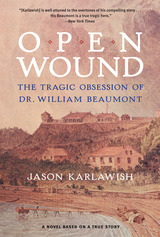 Open Wound: The Tragic Obsession of Dr. William Beaumont
Jason Karlawish
University of Michigan Press, 2013 A shotgun misfires inside the American Fur Company store in Northern Michigan, and Alexis St. Martin's death appears imminent. It's 1822, and, as the leaders of Mackinac Island examine St. Martin's shot-riddled torso, they decide not to incur a single expense on behalf of the indentured fur trapper. They even go so far as to dismiss the attention of U.S. Army Assistant Surgeon William Beaumont, the frontier fort's only doctor. Beaumont ignores the orders and saves the young man's life. What neither the doctor nor his patient understands—yet—is that even as Beaumont's care of St. Martin continues for decades, the motives and merits of his attention are far from clear. In fact, for what he does to his patient, Beaumont will eventually stand trial and be judged. Rooted deeply in historic fact, Open Wound artfully fictionalizes the complex, lifelong relationship between Beaumont and his illiterate French Canadian patient. The young trapper's injury never completely heals, leaving a hole into his stomach that the curious doctor uses as a window to understand the mysteries of digestion. Eager to rise up from his humble origins and self-conscious that his medical training occurred as an apprentice to a rural physician rather than at an elite university, Beaumont seizes the opportunity to experiment upon his patient's stomach in order to write a book that he hopes will establish his legitimacy and secure his prosperity. As Jason Karlawish portrays him, Beaumont, always growing hungrier for more wealth and more prestige, personifies the best and worst aspects of American ambition and power.
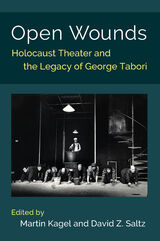 Open Wounds: Holocaust Theater and the Legacy of George Tabori
Edited by Martin Kagel and David Z. Saltz
University of Michigan Press, 2022 This volume collects original essays on Hungarian-German playwright and screenwriter George Tabori (1914–2007) and his remarkable contributions to the stage. Tabori, a Jewish refugee and a truly transnational author, was best known for his work in New York theater that irreverently explored the Jewish experience, particularly the Holocaust. Although his illustrious career spanned a century, two continents, several languages, and a variety of literary genres, Tabori’s work has received scant attention in American letters, in spite of its significance for U.S. theater and Holocaust studies. Until Tabori, most dramas about the Holocaust were either rooted in American domestic realism, striving to create a strong empathetic connection between the audience and Holocaust victims, or featured an unembellished documentary style. Tabori staked out a third position, beyond realism and documentation. The volume brings together the voices of international scholars to provide a comprehensive introduction to Tabori’s theater as well as in-depth analyses of his work, discussing all of his major plays. Individual essays address Tabori’s postdramatic theater in relation to sacrificial ritual, performance studies, and post-humanist approaches to the contemporary stage, as well as performance aspects of his productions, questions of ethics and aesthetics raised by his theater, and his plays’ relation to Holocaust representation in popular culture.
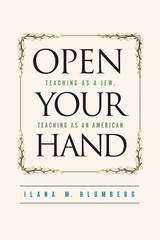 Open Your Hand: Teaching as a Jew, Teaching as an American
Ilana M. Blumberg
Rutgers University Press, 2019 Fifteen years into a successful career as a college professor, Ilana Blumberg encounters a crisis in the classroom that sends her back to the most basic questions about education and prompts a life-changing journey that ultimately takes her from East Lansing to Tel Aviv. As she explores how civic and religious commitments shape the culture of her humanities classrooms, Blumberg argues that there is no education without ethics. When we know what sort of society we seek to build, our teaching practices follow. In vivid classroom scenes from kindergarten through middle school to the university level, Blumberg conveys the drama of intellectual discovery as she offers novice and experienced teachers a pedagogy of writing, speaking, reading, and thinking that she links clearly to the moral and personal development of her students. Writing as an observant Jew and as an American, Blumberg does not shy away from the difficult challenge of balancing identities in the twenty-first century: how to remain true to a community of origin while being a national and global citizen. As she negotiates questions of faith and citizenship in the wide range of classrooms she traverses, Blumberg reminds us that teaching - and learning - are nothing short of a moral art, and that the future of our society depends on it.
 Open Your Heart: Religion and Cultural Poetics of Greater Mexico
David P. Sandell
University of Notre Dame Press, 2015 In this ethnography of Catholic religious practice in Fresno, California, David P. Sandell unveils ritualized storytelling that Mexican and Mexican American people of faith use to cope with racism and poverty associated with colonial, capitalist, and modern social conditions. Based on in-depth interviews and extensive field research conducted in 2000 and 2001, Sandell's work shows how people use story and religious ritual (including the Matachines dance, the Mass, the rosary, pilgrimage, and processions) to create a space in their lives free from oppression. These people give meaning to the expression "open your heart," the book argues, through ritual and stories, enabling them to engage the mind and body in a movement toward, as one participant said, "the sacred center" of their lives.
Sandell argues that the storytelling represents a tradition of poetics that provides an alternative, emancipatory epistemology. Américo Paredes, for example, defined this tradition in his scholarship of border balladry. According to Paredes, storytelling with ritual elements raises a feature of performance characterized as a convivial disposition and shared sense of identity among people who call themselves Mexican not for national identification but for a cultural one, understood as "Greater Mexico." Sandell contributes to this tradition and achieves an understanding of Greater Mexico characterized by people whose stories and rituals help them find common ground, unity, and wholeness through an open heart.
"Open Your Heart is a major contribution to those of us working in the areas of ritual and religion, narrative, and individual life experiences. David P. Sandell is an anthropologist, and this is a beautiful, close ethnographic study of a group of people in the United States who are often badly misunderstood. He persuasively shows us how narrative and ritual work together to accomplish certain goals for the individuals who create and perform them for each other." —Beverly J. Stoeltje, Indiana University
"In a finely woven narrative tapestry, David Sandell illuminates key religious moments in the lives of his Fresno, California, interlocutors. Sandell examines an array of religious rituals, and in particular ritual dance as a frame for stories—heterogeneous, and uneven in their telling. The combination of ritual and stories pulls people into a constantly evolving community. Drawing from his finely nuanced ethnographic material, historical reconstructions, and a richly textured narrative style, Sandell, with great aplomb and insight, ‘opens our hearts’ to the contradictions of the human condition experienced by his subjects. In the process, they, and we, move from spectators to co-producers of a life made meaningful by the shuffling back and forth that emerges in the meaning-making dance this book explores." —Richard R. Flores, University of Texas at Austin
Open-Domain Question Answering from Large Text Collections
Marius Pasca
CSLI, 2003 Many books have indexes, but most textual media have none. Newspapers, legal transcripts, conference proceedings, correspondence, video subtitles, and web pages are increasingly accessible with computers, yet are still without indexes or other sophisticated means of finding the excerpts most relevant to a reader's question.
Better than an index, and much better than a keyword search, are the high-precision computerized question-answering systems explored in this book. Marius Pasca presents novel and robust methods for capturing the semantics of natural language questions and for finding the most relevant portions of texts. This research has led to a fully implemented and rigorously evaluated architecture that has produced experimental results showing great promise for the future of internet search technology.
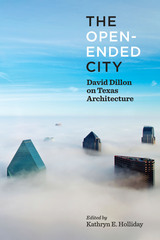 The Open-Ended City: David Dillon on Texas Architecture
By Kathryn E. Holliday; foreword by Robert Decherd
University of Texas Press, 2019 Texas Historical Commission Award of Excellence in Media Achievement, Texas Historical Commission In 1980, David Dillon launched his career as an architectural critic with a provocative article that asked “Why Is Dallas Architecture So Bad?” Over the next quarter century, he offered readers of the Dallas Morning News a vision of how good architecture and planning could improve quality of life, combatting the negative effects of urban sprawl, civic fragmentation, and rapacious real estate development typical in Texas cities. The Open-Ended City gathers more than sixty key articles that helped establish Dillon’s national reputation as a witty and acerbic critic, showing readers why architecture matters and how it can enrich their lives. Kathryn E. Holliday discusses how Dillon connected culture, commerce, history, and public life in ways that few columnists and reporters ever get the opportunity to do. The articles she includes touch on major themes that animated Dillon’s writing: downtown redevelopment, suburban sprawl, arts and culture, historic preservation, and the necessity of aesthetic quality in architecture as a baseline for thriving communities. While the specifics of these articles will resonate with those who care about Dallas, Fort Worth, and other Texas cities, they are also deeply relevant to all architects, urbanists, and citizens who engage in the public life and planning of cities. As a collection, The Open-Ended City persuasively demonstrates how a discerning critic helped to shape a landmark city by shaping the conversation about its architecture.
Opening Ceremony: Inviting Inclusion into University Governance
Kathryn J. Gindlesparger
University of Minnesota Press, 2023 Explores how university governance is restricted by ceremony and what it must do to survive
University shared governance is a microcosm of regulation and thrives particularly on ceremony to communicate its relevance. While many investigations of university governance examine representation, Opening Ceremony offers that, instead, stakeholders’ belief in institutional values can invite revision of stagnant governance practices. Governance tells us what the rules are, but they also tell us how to feel: opening up the ceremonial communication of this system invites new participants to rewrite how universities respond to felt needs. Kathryn J. Gindlesparger considers how to break the seal of ceremony to invite voices not traditionally heard in governance and, in doing so, protect the ideals of the institution and rebuild trust in higher education.
 Opening Minds, Improving Lives: Education and Women's Empowerment in Honduras
Erin Murphy-Graham
Vanderbilt University Press, 2012 Juanita was seventeen years old and pregnant with her first child when she began an activity that would "open" her mind. Living in a remote Garifuna village in Honduras, Juanita had dropped out of school after the sixth grade. In 1996, a new educational program, Sistema de Aprendizaje Tutorial (Tutorial Learning System or SAT), was started in her community. The program helped her see the world differently and open a small business.
Empowering women through education has become a top priority of international development efforts. Erin MurphyGraham draws on more than a decade of qualitative research to examine the experiences of Juanita and eighteen other women who participated in the SAT program. Their narratives suggest the simple yet subtle ways education can spark the empowerment process, as well as the role of men and boys in promoting gender equality.
Drawing on indepth interviews and classroom observation in Honduras and Uganda, MurphyGraham shows the potential of the SAT program to empower women through expanded access and improved quality of secondary education in Latin America and Africa. An appendix provides samples of the classroom lessons.
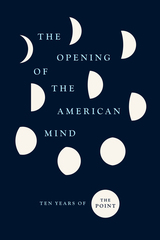 The Opening of the American Mind: Ten Years of The Point
The Point
University of Chicago Press, 2020 In a cultural landscape dominated by hot takes and petty polemics, The Point stands for something different. Informed by the conviction that humanistic thinking has relevance for everyday life, the magazine has long maintained a rare space for thoughtful dialogue between a wide range of political views, philosophical perspectives, and personal experiences: its contributors include liberals and conservatives, philosophers and activists, Marxists and Catholics, New Yorkers and Midwesterners. A little more than a decade since its founding on the campus of the University of Chicago, it offers a unique and revelatory look at the changing face of America, one that speaks not only to way American minds have been forced to “open” by a decade of trauma and transformation, but also to the challenge of remaining open to our fellow citizens during our deeply divided present.
Featuring award-winning and highly acclaimed essays from The Point’s first ten years, The Opening of the American Mind traces the path of American intellect from the magazine’s inception in 2009, when Barack Obama was ascending the steps of the White House, to the brink of the 2020 election. The essays, chosen both for the way they capture their time and transcend it, are assembled into five sections that address cycles of cultural frustrations, social movements, and the aftermath of the 2016 election, and provide lively, forward-looking considerations of how we might expand our imaginations into the future. Spanning the era of Obama and Trump, Occupy Wall Street and Black Lives Matter, #MeToo and renewed attention to reparations, this anthology offers critical reflections on some of the decade’s most influential events and stands as a testament to the significance of open exchange. The intellectual dialogue provided by The Point has never been more urgently needed, and this collection will bring the magazine’s vital work to an even broader readership.
The Opening Ritual
G.C. Waldrep
Tupelo Press, 2024 The conclusion of G. C. Waldrep’s trilogy exploring chronic illness.
In The Opening Ritual, G. C. Waldrep contends with the failure of the body, the irreducible body, in the light of faith. What can or should “healing” mean when it can’t ever mean “wholeness” again? And what kind of architecture is “mercy” when we live inside damage? These are poems that take both the material and the spiritual seriously, that cast their unsparing glances toward “All that is not / & could never be a parable.”
The collection concludes with a sequence of truly grand meditations on spiritual consciousness—in one the poet notes how, in the stillness of contemplation, the world begins to hum and resound with music. The Opening Ritual attends to and fashions its song from that music.
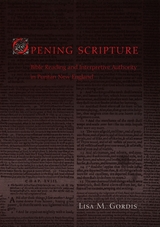 Opening Scripture: Bible Reading and Interpretive Authority in Puritan New England
Lisa M. Gordis
University of Chicago Press, 2003 "Opening Scripture provides a thorough and original account of ministerial and lay strategies for interpreting Scripture in the Massachusetts Bay. Demonstrating an impressive command of the vast literature and history of the period, Lisa Gordis moves deftly through discussions of major figures and events. This is a significant intervention in the study of Puritan New England."—Sandra M. Gustafson, University of Notre Dame
What role did the Bible really play in Puritan New England? Many have treated it as a blunt instrument used to cudgel dissenters into submission, but Lisa M. Gordis reveals instead that Puritan readings of the Bible showed great complexity and literary sophistication—so much complexity, in fact, that controversies over biblical interpretation threatened to tear Puritan society apart.
Drawing on Puritan preaching manuals and sermons as well as the texts of early religious controversies, Gordis argues that Puritan ministers did not expect to impose their views on their congregations. Instead they believed that interpretive consensus would emerge from the process of reading the Bible, with the Holy Spirit assisting readers to understand God's will. Treating the conflict over Roger Williams, the Antinomian Controversy, and the reluctant compromises of the Halfway Covenant as symptoms of a crisis that was as much literary as it was social or spiritual, Opening Scripture explores the profound consequences of Puritan negotiations over biblical interpretation for New England's literature and history.
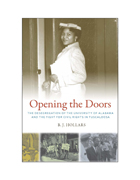 Opening the Doors: The Desegregation of the University of Alabama and the Fight for Civil Rights in Tuscaloosa
B. J. Hollars
University of Alabama Press, 2013 Opening the Doors is a wide-ranging account of the University of Alabama’s 1956 and 1963 desegregation attempts, as well as the little-known story of Tuscaloosa, Alabama’s, own civil rights movement.
Whereas E. Culpepper Clark’s The Schoolhouse Door remains the standard history of the University of Alabama’s desegregation, in Opening the Doors B. J. Hollars focuses on Tuscaloosa’s purposeful divide between “town” and “gown,” providing a new contextual framework for this landmark period in civil rights history.
The image of George Wallace’s stand in the schoolhouse door has long burned in American consciousness; however, just as interesting are the circumstances that led him there in the first place, a process that proved successful due to the concerted efforts of dedicated student leaders, a progressive university president, a steadfast administration, and secret negotiations between the U.S. Justice Department, the White House, and Alabama’s stubborn governor.
In the months directly following Governor Wallace’s infamous stand, Tuscaloosa became home to a leader of a very different kind: twenty-eight-year-old African American reverend T. Y. Rogers, an up-and-comer in the civil rights movement, as well as the protégé of Martin Luther King Jr. After taking a post at Tuscaloosa’s First African Baptist Church, Rogers began laying the groundwork for the city’s own civil rights movement. In the summer of 1964, the struggle for equality in Tuscaloosa resulted in the integration of the city’s public facilities, a march on the county courthouse, a bloody battle between police and protesters, confrontations with the Grand Wizard of the Ku Klux Klan, a bus boycott, and the near-accidental-lynching of movie star Jack Palance.
Relying heavily on new firsthand accounts and personal interviews, newspapers, previously classified documents, and archival research, Hollars’s in-depth reporting reveals the courage and conviction of a town, its university, and the people who call it home.
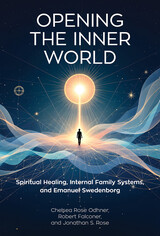 Opening the Inner World: Spiritual Healing, Internal Family Systems, and Emanuel Swedenborg
Chelsea Rose Odhner, Robert Falconer, and Jonathan S. Rose
Swedenborg Foundation Publishers, 2025 Opening the Inner World: Spiritual Healing, Internal Family Systems, and Emanuel Swedenborg is a revelatory exploration of the human psyche, merging the innovative approach of Internal Family Systems (IFS) therapy with the profound spiritual insights of Emanuel Swedenborg. This groundbreaking book, authored by Chelsea Odhner, Robert Falconer, and Jonathan S. Rose, offers readers a unique and powerful framework for personal growth, healing, and spiritual development.
At its core, this work presents a refreshing synthesis of modern psychological theory and the enduring relevance of Swedenborg’s 18th-century spiritual philosophy. The authors skillfully demonstrate how IFS, a cutting-edge therapeutic model developed by Richard Schwartz, aligns with and is enriched by Swedenborg's spiritual teachings. This unexpected pairing yields fresh insights into the nature of the human mind and spirit, providing readers with a comprehensive approach to understanding and nurturing their inner world.
Key Themes and Insights:
1. The Multiplicity of the Human Mind: Explore the concept that we are composed of various "parts" or aspects, each with its own perspective and purpose. This understanding challenges the notion of a monolithic self, opening up new avenues for self-discovery and healing.
2. Interconnectedness of Psychological and Spiritual Realities: Discover how our inner psychological landscape is intricately linked with spiritual dimensions. This holistic view offers a more complete picture of human experience and potential.
3. Inherent Goodness of All Parts: Learn to appreciate and work with all aspects of yourself, recognizing that even challenging parts serve a protective function. This compassionate approach fosters self-acceptance and inner harmony.
4. Transformative Power of Self-Exploration: Engage in practical techniques for inner dialogue and self-reflection, drawing from both IFS methodology and Swedenborg's spiritual practices.
5. Universal Framework for Spirituality in Psychotherapy: For mental health professionals, this book offers a non-denominational approach to incorporating spiritual dimensions into therapeutic practice, enhancing the depth and efficacy of treatment.
6. Accessible Application of Swedenborg's Teachings: For those familiar with Swedenborg's work, discover how his spiritual insights can be practically applied to personal growth and healing through the user-friendly lens of IFS.
Who Will Benefit:
- Mental Health Professionals: Gain valuable insights into integrating spirituality into your practice, enhancing your therapeutic toolbox with a unique, holistic approach.
- Spiritual Seekers: Deepen your understanding of the connection between psychological processes and spiritual growth, finding new pathways to inner peace and self-realization.
- Academics and Students: Explore a novel intersection of psychology and spirituality, opening up new areas for research and contemplation.
- Individuals Seeking Personal Growth: Whether struggling with inner conflicts or simply looking to enhance your self-understanding, this book offers practical wisdom and techniques for personal transformation.
Why This Book Matters:
In a world where mental health and spiritual well-being are increasingly recognized as interconnected, Opening the Inner World: Spiritual Healing, Internal Family Systems, and Emanuel Swedenborg offers a timely and invaluable contribution. It bridges the often-perceived gap between psychology and spirituality, providing a comprehensive framework for understanding the human experience in all its complexity.
The authors bring a wealth of knowledge and experience to this work. Chelsea Odhner, with her background in both IFS and Swedenborg's teachings, provides a unique bridging perspective. Robert Falconer contributes deep insights from his extensive work with IFS, porosity of mind, and trauma healing. Jonathan S. Rose, with his scholarly expertise in Swedenborg's writings, ensures a nuanced and accurate representation of Swedenborg's spiritual philosophy.
This book is not just a theoretical exploration; it's a practical guide to inner transformation. Readers will find themselves equipped with new tools for self-exploration, healing, and spiritual growth. The conversational style and real-world examples make complex concepts accessible, inviting readers to engage deeply with the material and apply it to their own lives.
Published by the Swedenborg Foundation, a respected non-profit organization with a long history of promoting spiritual inquiry and growth, this book represents a significant contribution to the fields of psychology and spirituality. It continues the foundation's tradition of offering thoughtful, life-changing content that promotes holistic well-being and spiritual understanding.
Opening the Inner World: Spiritual Healing, Internal Family Systems, and Emanuel Swedenborg is more than just a book; it's an invitation to a deeper understanding of yourself and your place in the spiritual and psychological landscape of existence. Whether you're new to these concepts or a seasoned explorer of the mind and spirit, this work offers fresh perspectives and practical wisdom for your journey of self-discovery and healing.
Opening the Museum: The Peabody Museum of Archaeology and Ethnology
Rubie Watson
Harvard University Press With Opening the Museum, the Peabody Museum Press launches a new series of Occasional Papers. These periodic publications present essays, short research papers, and works-in-progress relevant to contemporary museum issues and museum history. In Volume I, Peabody Museum director Rubie Watson presents three snapshots in time of the museum and its changing nature: in 1877, 1928, and 2001. The oldest museum of anthropology in the Americas, the Peabody is dedicated to collecting, researching, housing, displaying, and interpreting the artifacts and material culture of societies around the world. Its history, as ably interpreted by Wilson, has reflected the changing nature not only of museums but of the study of anthropology over time.
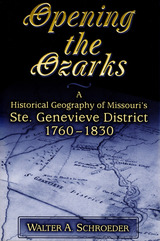 Opening the Ozarks: A Historical Geography of Missouri's Ste. Genevieve District, 1760-1830
Walter A. Schroeder
University of Missouri Press, 2002 As the oldest European settlement in Missouri, Ste. Genevieve was the funnel through which the eastern Ozarks (the 5,000 square miles beyond Ste. Genevieve’s location on the Mississippi) was established. A magisterial account of the settlement of this area from 1760 through 1830, Opening the Ozarks focuses on the acquisition and occupation of land, the transformation of the environment, the creation of cohesive settlements, and the building of neighborhoods and eventually organized counties. The study begins with the French Creole settlement at Old Ste. Genevieve in the middle of the eighteenth century. It describes the movement of the French into the Ozark hills during the rest of that century and continues with that of the American immigrants into Upper Louisiana after 1796, ending with the Americanization of the district after the Louisiana Purchase. Walter Schroeder examines the cultural transition from a French society, operating under a Spanish administration, to an American society in which French, Indians, and Africans formed minorities. Schroeder used thousands of French- and Spanish-language documents, including the Archives of the Indies in Seville, Spain, as well as documents from Ste. Genevieve and St. Louis to gather his information. He also utilized thousands of land records from the American period, including deeds of land sales and sales from the public domain, and plats from both the Spanish and American periods. In addition, Schroeder performed years of fieldwork and perused aerial photography of the area, interviewing residents and searching for vestiges of the past in the landscape.
As the only study to deal with the cradle of Missouri and the first trans-Mississippi expansion of the Anglo-American frontier, Opening the Ozarks will be invaluable to anyone interested in America’s geographical history, particularly that of Missouri.
 Opening the Qur'an: Introducing Islam's Holy Book
Walter H. Wagner
University of Notre Dame Press, 2008
Opening the Qur'an can be a bewildering experience to non-Muslim, English-speaking readers. Those who expect historical narratives, stories, or essays on morals are perplexed once they pass the beautiful first Surah, often shocked and then bogged down by Surah 2, and even offended by Surah 3's strictures against nonbelievers. Walter H. Wagner "opens" the Qur'an by offering a comprehensive and extraordinarily readable, step-by-step introduction to the text, making it accessible to students, teachers, clergy, and general readers interested in Islam and Islam's holy Book. Wagner first places the prophet Muhammad, the Qur'an, and the early Muslim community in their historical, geographical, and theological contexts. This background is a basis for interpreting the Qur'an and understanding its role in later Muslim developments as well as for relationships between Muslims, Jews, and Christians. He then looks in detail at specific passages, moving from cherished devotional texts to increasingly difficult and provocative subjects. The selected bibliography serves as a resource for further reading and study. Woven into the discussion are references to Islamic beliefs and practices. Wagner shows great sensitivity toward the risks and opportunities for non-Muslims who attempt to interpret the Qur'an, and sympathy in the long struggle to build bridges of mutual trust and honest appreciation between Muslims and non-Muslims.
"A number of observers, like Mahmood Mamdani, have pointed out that contemporary events have led to an expansion in the market for translations of the Qur'an. This book will assist and guide readers of these Qur'an translations in the English language. This book could be used in introductory courses on Islam or advanced courses focusing exclusively on Islam's holy Book, the Qur'an . . . general readers outside the academy may also find it useful in helping them understand how to use and make sense of the Qur'an." --A. Rashied Omar, The Joan B. Kroc Institute for International Peace Studies, University of Notre Dame
"The Qur'an can be terra incognita for the non-Muslim reader. Walter Wagner's learned book brings us to terra firma. With clear, empathetic, religiously sensitive yet historical-critical commentary, Opening the Qur'anmakes sense of Islam's holy book. Wagner is a rare guide: a committed Christian who has listened carefully and sympathetically to Muslims, who understand the Quran as God's word. Wagner conveys their faith without compromising his own. This is more than a work of scholarship and pedagogy; it is an act of respect from one great tradition to another." --Alan Mittleman, The Jewish Theological Seminary
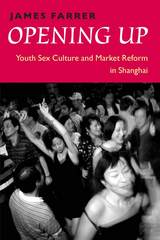 Opening Up: Youth Sex Culture and Market Reform in Shanghai
James Farrer
University of Chicago Press, 2002 From teen dating to public displays of affection, from the "fishing girls" and "big moneys" that wander discos in search of romance to the changing shape of sex in the Chinese city, this is a book like no other. James Farrer immerses himself in the vibrant nightlife of Shanghai, draws on individual and group interviews with Chinese youth, as well as recent changes in popular media, and considers how sexual culture has changed in China since its shift to a more market-based economy.
More and more men and women in China these days are having sex before marriage, creating a new youth sex culture based on romance, leisure, and free choice. The Chinese themselves describe these changes as an "opening up" in response to foreign influences and increased Westernization. Farrer explores these changes by tracing the basic elements in talk about sex and sexuality in Shanghai. He then shows how Chinese youth act out the sometimes-contradictory meanings of sex in the new market society. For Farrer, sexuality is a lens through which we can see how China imagines and understands itself in the wake of increased globalization. Through personal storytelling, neighborhood gossip, and games of seduction, young men and women in Shanghai balance pragmatism with romance, lust with love, and seriousness with play, collectively constructing and individually coping with a new culture based on market principles. With its provocative glimpse into the sex lives of young Chinese, then, Opening Up offers something even greater: a thoughtful consideration of China as it continues to develop into an economic superpower.
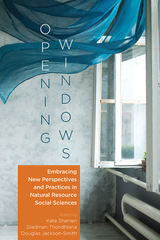 Opening Windows: Embracing New Perspectives and Practices in Natural Resource Social Sciences
Kate Sherren
Utah State University Press, 2024 The third decennial review from the International Association for Society and Natural Resources, Opening Windowssimultaneously examines the breadth and societal relevance of Society and Natural Resources (SNR) knowledge, explores emergent issues and new directions in SNR scholarship, and captures the increasing diversity of SNR research. Authors from various backgrounds—career stage, gender and sexuality, race/ethnicity, and global region—provide a fresh, nuanced, and critical look at the field from both researchers’ and practitioners’ perspectives.
This reflexive book is organized around four key themes: diversity and justice, governance and power, engagement and elicitation, and relationships and place. This is not a complacent volume—chapters point to gaps in conventional scholarship and to how much work remains to be done. Power is a central focus, including the role of cultural and economic power in “participatory” approaches to natural resource management and the biases encoded into the very concepts that guide scholarly and practical work. The chapters include robust literature syntheses, conceptual models, and case studies that provide examples of best practices and recommend research directions to improve and transform natural resource social sciences. An unmistakable spirit of hope is exemplified by findings suggesting positive roles for research in the progress ahead.
Bringing fresh perspectives on the assumptions and interests that underlie and entangle scholarship on natural resource decisionmaking and the justness of its outcomes, Opening Windows is significant for scholars, students, natural resource practitioners, managers and decision makers, and policy makers.
Opening Your Heart with Psalm 27: A Spiritual Practice for the Jewish New Year
Rabbi Debra J. Robbins
Central Conference of American Rabbis, 2019 This volume is a compelling invitation to meditate on the deeper meaning of the fourteen verses of Psalm 27. During the month of Elul and the High Holy Day and Festival season, we reflect on our relationships, choices, beliefs, and practices, considering where to make repairs, adjustments, and atonement. Opening Your Heart with Psalm 27 provides gentle guidance through this journey of reflection, offering heartfelt insight, profound translation, and an invaluable framework for meaningfully participating in this annual spiritual practice.
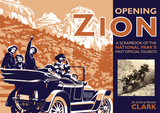 Opening Zion: A Scrapbook of the National Park's First Official Tourists
John Clark
University of Utah Press, 2010 When Melissa Clark purchased a box of old scrapbooks online, she knew only that she had bought something relating to the University of Utah and Zion Park. What came in the mail was much more than she had expected. Instead of random mementos, two albums arrived full of photographs and newspaper clippings dating to 1920 that document a trip made by six young women from the University of Utah into the newly formed Zion National Park. Part of a promotional campaign developed by the Los Angeles and Salt Lake Railroad to advertise its national park shuttle service, the women entered Zion Canyon as its first offical tourists. When Melissa bought those timeworn scrapbooks she found a forgotten treasure: the opening of Zion. With text by John Clark, the scrapbooks are now the basis of a one-of-a-kind publication. Part fashion spread, part adventure guide, and all Utah cultural treasure, Opening Zion is a stunning visual record of the park. Remarkably detailed black-and-white photographs show the young adventurers scrambling over rocky outcrops, pondering the dizzying height of Zion's sheer walls, and singing camp songs by the campfire. We are introduced anew to the "gigantic grandeur" of Zion National Park. As one of the women wrote, "One can think only beautiful thoughts amid such splendor."
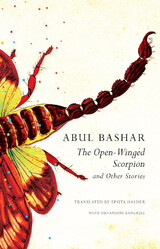 The Open-Winged Scorpion: And Other Stories
Abul Bashar
Seagull Books, 2018 The Open-Winged Scorpion and Other Stories is a collection of ten powerful Bengali short stories, all translated into English for the first time. Hailing from Murshidabad district in West Bengal, Abul Bashar pens stories about precarious lives of marginal Muslim communities in that district. His tales are shot through with the fears, dreams, hopes, and anxieties of the communities he portrays: their poverty and piety, the sensuality of the ancient mythologies they reimagine and remember, the rituals that permeate their lives, and the ever-present influence of the River Padma, which brings the silt that makes the land flourish—and the floods that destroy the crops and the people who plant them. The complex dynamics of the trivial and the transcendental emerge in Bashar’s stories, as the tales become no less than an archive and richly imagined historical testimony of an abject community relegated to the margins of the society too focused on the future to remember people who are struggling in the here and now.
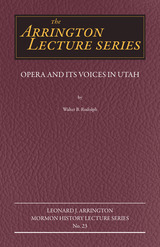 Opera and its Voices in Utah
Walter Rudolph
Utah State University Press, 2018 In volume 23 of the Arrington Lecture Series, Walter B. Rudolph explores Utah’s operatic history. There is no other written history of opera in Utah and while references are random, they can be consistently found. The list of visiting operatic artists to the Beehive state is imposing, even extraordinary, and equally unexpected is the diversity of standard repertoire and those works unique to, or composed about, Utah. In turn, Utah’s operatic assets have given to the world’s arsenal of singers and created an audience of unique proportions.
The Arrington Lecture series, established by one of the twentieth-century West's most distinguished historians, Leonard Arrington, has become a leading forum for prominent historians to address topics related to Mormon history. Utah State University hosts the Leonard J. Arrington Mormon History Lecture Series through the Merrill-Cazier Library Special Collections and Archives department.
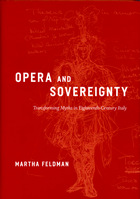 Opera and Sovereignty: Transforming Myths in Eighteenth-Century Italy
Martha Feldman
University of Chicago Press, 2007 Performed throughout Europe during the 1700s, Italian heroic opera, or opera seria, was the century’s most significant musical art form, profoundly engaging such figures as Handel, Haydn, and Mozart. Opera and Sovereignty is the first book to address this genre as cultural history, arguing that eighteenth-century opera seria must be understood in light of the period’s social and political upheavals.
Taking an anthropological approach to European music that’s as bold as it is unusual, Martha Feldman traces Italian opera’s shift from a mythical assertion of sovereignty, with its festive forms and rituals, to a dramatic vehicle that increasingly questioned absolute ideals. She situates these transformations against the backdrop of eighteenth-century Italian culture to show how opera seria both reflected and affected the struggles of rulers to maintain sovereignty in the face of a growing public sphere. In so doing, Feldman explains why the form had such great international success and how audience experiences of the period differed from ours today. Ambitiously interdisciplinary, Opera and Sovereignty will appeal not only to scholars of music and anthropology, but also to those interested in theater, dance, and the history of the Enlightenment.
 Opera and the Built Environment
Laura Vasilyeva
University of Chicago Press, 2025 The first book to examine the classic Italian opera house in a global context.
In Opera and the Built Environment, music scholar Laura Vasilyeva considers the remarkable mass construction of opera houses around the world since the 1800s and the no-less-remarkable bids to standardize the architectural features of their interiors across this vast theatrical infrastructure. Now known as the teatro all’italiana, this style of architecture—made most famous by Milan’s Teatro alla Scala—is characterized by auditoria with tiers of stacked boxes and a dominant red hue.
With attention to the sensuous dimensions of their auditoria, from their surfaces to their atmospheres to their acoustics and thresholds, Vasilyeva reveals the calculated reasons these theaters took on the form they did. The result is a book that reveals unknown associations between the Italian opera house and matters of environmental destruction, empire, and belonging, showing us new and unexpected patterns in how opera connects to the world we know.
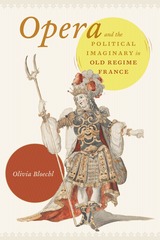 Opera and the Political Imaginary in Old Regime France
Olivia Bloechl
University of Chicago Press, 2018 From its origins in the 1670s through the French Revolution, serious opera in France was associated with the power of the absolute monarchy, and its ties to the crown remain at the heart of our understanding of this opera tradition (especially its foremost genre, the tragédie en musique).
In Opera and the Political Imaginary in Old Regime France, however, Olivia Bloechl reveals another layer of French opera’s political theater. The make-believe worlds on stage, she shows, involved not just fantasies of sovereign rule but also aspects of government. Plot conflicts over public conduct, morality, security, and law thus appear side-by-side with tableaus hailing glorious majesty. What’s more, opera’s creators dispersed sovereign-like dignity and powers well beyond the genre’s larger-than-life rulers and gods, to its lovers, magicians, and artists. This speaks to the genre’s distinctive combination of a theological political vocabulary with a concern for mundane human capacities, which is explored here for the first time.
By looking at the political relations among opera characters and choruses in recurring scenes of mourning, confession, punishment, and pardoning, we can glimpse a collective political experience underlying, and sometimes working against, ancienrégime absolutism. Through this lens, French opera of the period emerges as a deeply conservative, yet also more politically nuanced, genre than previously thought.
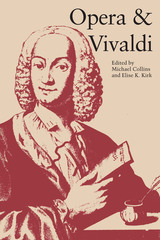 Opera and Vivaldi
Edited by Michael Collins and Elise K. Kirk
University of Texas Press, 1984 From the New York Times review of the Dallas Opera's performance of Orlando furioso and the international symposium on Baroque opera: ". . . it was a serious, thoughtful, consistent and imaginative realization of a beautiful, long-neglected work, one that fully deserved all the loving attention it received. As such, the production and its attendant symposium made a positive contribution to the cause of Baroque opera . . . . " Baroque opera experienced a revival in the late twentieth century. Its popularity, however, has given rise to a number of perplexing and exciting questions regarding literary sources, librettos, theater design, set design, stage movement, and costumes—even the editing of the operas. In 1980, the Dallas Opera produced the American premier of Vivaldi's Orlando furioso, which met with much acclaim. Concurrently an international symposium on the subject of Baroque opera was held at Southern Methodist University. Authorities from around the world met to discuss the operatic works of Vivaldi, Handel, and other Baroque composers as well as the characteristics of the genre. Michael Collins and Elise Kirk, deputy chair and chair of the symposium, edited the papers to produce this groundbreaking study, which will be of great interest to music scholars and opera lovers throughout the world. Contributors to Opera and Vivaldi include Shirley Wynne, John Walter Hill, Andrew Porter, Eleanor Selfridge-Field, Howard Mayer Brown, William Holmes, Ellen Rosand, and the editors.
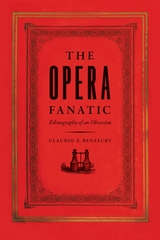 The Opera Fanatic: Ethnography of an Obsession
Claudio E. Benzecry
University of Chicago Press, 2011 Though some dismiss opera as old-fashioned, it shows no sign of disappearing from the world’s stage. So why do audiences continue to flock to it? Given its association with wealth, one might imagine that opera tickets function as a status symbol. But while a desire to hobnob with the upper crust might motivate the occasional operagoer, for hardcore fans the real answer, according to The Opera Fanatic, is passion—they do it for love.
Opera lovers are an intense lot, Claudio E. Benzecry discovers in his look at the fanatics who haunt the legendary Colón Opera House in Buenos Aires, a key site for opera’s globalization. Listening to the fans and their stories, Benzecry hears of two-hundred-mile trips for performances and nightlong camp-outs for tickets, while others testify to a particular opera’s power to move them—whether to song or to tears—no matter how many times they have seen it before. Drawing on his insightful analysis of these acts of love, Benzecry proposes new ways of thinking about people’s relationship to art and shows how, far from merely enhancing aspects of everyday life, art allows us to transcend it.
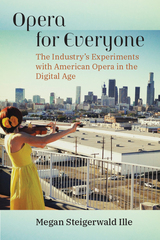 Opera for Everyone: The Industry's Experiments with American Opera in the Digital Age
Megan Steigerwald Ille
University of Michigan Press, 2024 Opera for Everyone: The Industry’s Experiments with American Opera in the Digital Age draws on seven years of multi-sited ethnography to examine the acclaimed experimental productions of Los Angeles-based opera company The Industry. Steigerwald Ille understands The Industry’s productions as part of an emerging wave of U.S. operas that integrate new media and interactive performance through means such as site-specificity and simulcast video, and then traces the company’s path from Crescent City (2012), the company’s first production, to Sweet Land (2020), the company’s final production before switching to a new production model. Steigerwald Ille argues that by moving opera outside of the opera house, The Industry’s productions expose the economic and aesthetic structures key to the circulation of operatic performance at the same time that they deploy opera as a tool for digital listening, community engagement, popular entertainment, and commentary on systemic racism and settler colonialism. Through ethnographic work with The Industry’s creators and performers, and close examination of the company’s first decade of work, this book reveals how The Industry paradoxically provides both a roadmap and boundary line for experimental and traditional companies trying to find new ways to approach operatic performance in the twenty-first century United States.
 Opera for the People
Herbert Graf
University of Minnesota Press, 1951
Opera for the People was first published in 1951. Minnesota Archive Editions uses digital technology to make long-unavailable books once again accessible, and are published unaltered from the original University of Minnesota Press editions.
Everyone who enjoys opera will enjoy this book, and many who think they don't like opera will be delighted to discover how they can enjoy it. As Herbert Graf points out, opera in America today is not all it could be, and he shows how opera can be developed into something more vital—a real force in the musical life of communities.
As the long-time stage director of the Metropolitan Opera community, Dr. Graf is a foremost authority on opera production. From his wealth of practical experience, from his careful study of what others have done, and from his creative yet realistic thinking come his challenging proposals for a new kind of opera in America—opera for everyone.
The elements of opera production—the libretto, the music, the language, the sponsorship, the staging, the building—are discussed. American opera as it is performed on Broadway, in community civic companies, in school workshops, in motion pictures, and in television is surveyed. In conclusion, Dr. Graf draws his exciting blueprint for the opera of the future.
Illustrative anecdotes provide sidelights on many gamed musical personalities—Bruno Walter, Kurt Weill, Benjamin Britten, Lawrence Tibbett, Oscar Hammerstein II, and Gian Carlo Menotti, to name a few. Stories of many of the newer operas—how they came to be written and what they are about—are related.
Music lovers who yearn for a "new deal" in opera, civic leaders anxious to develop opera in their own communities, and schools and colleges offering opera training will find this book a stimulating guide.
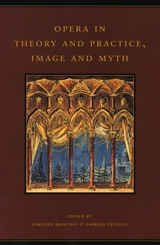 Opera in Theory and Practice, Image and Myth
Edited by Lorenzo Bianconi and Giorgio Pestelli
University of Chicago Press, 2003 The History of Italian Opera marks the first time a team of scholars has worked together to investigate the entire Italian operatic tradition, rather than limiting its focus to major composers and their masterworks. Including both musicologists and historians of other arts, the contributors approach opera not only as a distinctive musical genre but also as a form of extravagant theater and a complex social phenomenon.
This sixth volume in the series centers on the sociological and critical aspects of opera in Italy, considering the art in the context of an Italian literary and cultural canon rarely revealed in English and American studies. In its six chapters, contributors survey critics' changing attitudes toward opera over several centuries, trace the evolution of formal conventions among librettists, explore the historical relationships between opera and Italian literature, and examine opera's place in Italian popular and national culture. In perhaps the volume's most striking contribution, German scholar Carl Dahlouse offers his most important statement on the dramaturgy of opera.
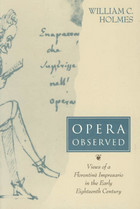 Opera Observed: Views of a Florentine Impresario in the Early Eighteenth Century
William C. Holmes
University of Chicago Press, 1993 William C. Holmes provides a rare look behind the scenes into the world of early eighteenth-century Italian opera. Based on a rich store of newly recovered documents, mainly the personal papers of Luca Casimiro degli Albizzi, this social history illuminates the complexities of staging opera in the 1720s and '30s: the role of the impresario in planning an operatic season, financial and artistic difficulties, the importance of patronage, the power of individual singers and composers, considerations of set design, and the practice of altering librettos.
A member of an illustrious Florentine family, Albizzi (1664-1745) served as one of the principal impresarios of the Pergola, Florence's earliest and greatest opera theater. He also carried on an active correspondence with impresarios in other cities, freely giving his advice on various economic and artistic concerns. Holmes uses the Albizzi family archives—the most abundant and varied material yet available about an eighteenth-century impresario and his theater—to deepen our knowledge of an extraordinary but little understood period in Italian opera.
This book will appeal to anyone curious about operatic history.
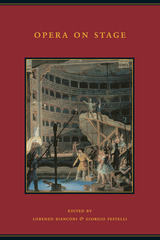 Opera on Stage
Edited by Lorenzo Bianconi and Giorgio Pestelli
University of Chicago Press, 2002 The History of Italian Opera marks the first time a team of expert scholars has worked together to investigate the Italian operatic tradition in its entirety, rather than limiting its focus to individual eras or major composers and their masterworks. Including both musicologists and historians of other arts, the contributors approach opera not only as a distinctive musical genre but also as a form of extravagant theater and a complex social phenomenon-resulting in the sort of panoramic view critical to a deep and fruitful understanding of the art.
Opera on Stage, the second book of this multi-volume work to be published in English-in an expanded and updated version-focuses on staging and viewing Italian opera, from the court spectacles of the late sixteenth century to modern-day commercial productions. Mercedes Viale Ferrero describes the history of theater and stage design, detailing the evolution of the art well into the twentieth century. Gerardo Guccini does the same for stage and opera direction and the development of the director's role as an autonomous creative force. Kathleen Kuzmick Hansell discusses the interrelationships between theatrical ballet and Italian opera, from the age of Venetian opera to the early twentieth century. The visual emphasis of all three contributions is supplemented by over one hundred illustrations, and because much of this material-on the more "spectacular" visual aspects of Italian opera-has never before appeared in English, Opera on Stage will be welcomed by scholars and opera enthusiasts alike.
Opera on the Road: Traveling Opera Troupes in the United States, 1825-60
Katherine K. Preston
University of Illinois Press, 1993 Katherine K. Preston leads the reader on an operatic tour of pre-Civil War America in this cultural study of what was, surprisingly, an almost ubiquitous art form. Her richly detailed examination of itinerant troupes covers orchestral and choral musicians as well as stars, impresarios, business methods, repertories, advertising techniques, itineraries, sizes of companies, and methods of travel.
 Opera Production: A Handbook
Quaintance Eaton
University of Minnesota Press, 1961 Opera Production was first published in 1961. Minnesota Archive Editions uses digital technology to make long-unavailable books once again accessible, and are published unaltered from the original University of Minnesota Press editions. Designed particularly as a reference work for opera producers, students, performers, and writers, this book provides basic production information about more than 500 operas. Anyone planning to produce an opera will find here the essential information he needs in order to judge whether a given opera is appropriate to his resources for production. Information for individual operas is given concerning the number and importance of settings; size of orchestra, chorus, and ballet; number of singers, their relative importance and individual requirements; sources for obtaining musical materials' previous performances in America; and the opera story, its period, and composer. Extensive information about 150 full-length operas and 109 short operas is provided, with supplementary information about more than 260 other operas. The operas are alphabetized by title for easy reference. In order to condense the information as much as possible, codes and abbreviations are used, with keys and indexes at the back of the book. This book will be invaluable to those working in either amateur or professional companies, in opera workshops, in school, college, or civic opera groups. Those whose interest in opera is confined to the other side of the footlights will find the book absorbing, too, just as a glimpse backstage would be.
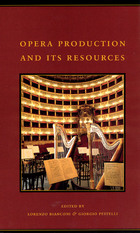 Opera Production and Its Resources
Edited by Lorenzo Bianconi and Giorgio Pestelli
University of Chicago Press, 1998 Standing at the forefront of historiographical research, The History of Italian Opera marks the first time a multidisciplinary team of scholars has worked together to investigate the entire Italian operatic tradition, rather than limiting the focus to major composers and their masterworks. Including both musicologists and historians of other arts, the contributors approach opera not only as a distinctive musical genre but also as a form of extravagant theater and a complex social phenomenon.
Opera Production and Its Resources traces the social, economic, and artistic history of the production of opera from its origins around 1600 to contemporary stagings. From the very beginning, opera has been a chronically deficit-producing enterprise. Yet it maintained unchallenged preeminence in the culture of all Italians for centuries. The first half explores the central role of theater impresarios in putting on these complex productions and in increasing the output of librettos and scores. The second half considers the roles of the three key figures in the creation of any opera: the librettist, the composer, and the singer.
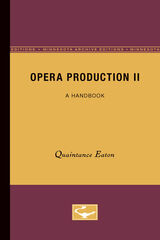 Opera Production II: A Handbook
Quaintance Eaton
University of Minnesota Press, 1974
Opera Production II was first published in 1974. Minnesota Archive Editions uses digital technology to make long-unavailable books once again accessible, and are published unaltered from the original University of Minnesota Press editions.
For the world of opera this is an indispensable basic reference work which provides essential information about more than 350 operas. Producers, singers, directors, students, orchestras, and audiences will find useful, concise information in this handbook, a sequel to the author's earlier book Opera Production I: A Handbook, which contains similar information about more than 500 other operas. While the first volume concentrates on more familiar operas, this book is devoted principally to lesser known works, both old and new, including many as yet unperformed contemporary operas.
The details given about each opera are those needed to assess the production requirements for a given work: the number and importance of settings; size of orchestra, chorus, and ballet; number of singers, their relative importance and individual requirements; vocal and acting demands of performers, including vocal ranges in most cases; plot synopsis; and brief historical material to anchor the reader in the necessary knowledge of the period and source of the libretto. The information is compressed into capsule form so that anyone using the book can tell at a glance the suitability of a work to the particular facilities, talents, or tastes of an opera company or its public.
In addition to the reference material, there is a chapter "Production Problems in Handel's Opera" by Randolph Mickelson, a helpful feature since nine of Handel's operas are included and they are apt to pose special production problems.
Opera Scenes for Class and Stage
Mary Elaine Wallace and Robert Wallace
Southern Illinois University Press, 1979 Musically sound and fully annotated, this new reference work provides ready access to over 700 excerpts from 100 operas, by voice categories, and thus provides information on a wide variety of matters of interest to directors, teachers, and singers. A table of voice categories, coded excerpts (including length and reference to accessible scores), character descriptions (including estimations of degrees of difficulty of the music), summaries of the action of each excerpt, and indexes to titles, composers, and well-known arias and ensembles make this book an indispensable tool.
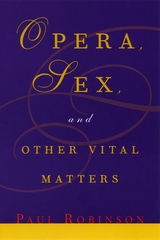 Opera, Sex and Other Vital Matters
Paul Robinson
University of Chicago Press, 2002 Opera, Sex, and Other Vital Matters gathers both classic and never-before-published essays from one of the leading stylists in contemporary American letters, and one of our more revered public intellectuals, Paul Robinson. Diverse and elegant, the essays in this new collection showcase the sly wit and lightly worn erudition of their author. Each celebrates art and the flesh, directing us to the twin ecstasies of music and eros.
The essays on opera gathered here explore how masterpieces like Fidelio and The Magic Flute reflect the intellectual currents of their day. Be it the work of Verdi or Mozart, Wagner or Strauss, Robinson compels us to search for meaning not just in the lyrics of opera but also in the music. In melody, not libretto, we are more likely to discern key historical complexities and appreciate the way opera transcends language and time. The essays on sexuality, meanwhile, are ruminative, funny, and even moving. At one moment, Robinson measures whether homosexuality is the result of destiny or free choice. In another, he shares a touching exchange of letters with a gay student in the process of coming out. The final essays that encompass "other vital matters" find Robinson at his most incisive. Whether defending Freud as the most influential thinker of the twentieth century, attacking the dreaded use of semicolons, reflecting on his own mortality, or even meditating on the nature of cats, Sex, Opera, and Other Vital Matters is an eclectic work that will appeal to any reader interested in the continuing relevance of ideas to life.
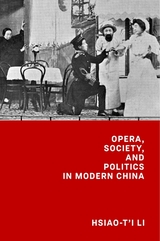 Opera, Society, and Politics in Modern China
Hsiao-t’i Li
Harvard University Press, 2019 Popular operas in late imperial China were a major part of daily entertainment, and were also important for transmitting knowledge of Chinese culture and values. In the twentieth century, however, Chinese operas went through significant changes. During the first four decades of the 1900s, led by Xin Wutai (New Stage) of Shanghai and Yisushe of Xi’an, theaters all over China experimented with both stage and scripts to present bold new plays centering on social reform. Operas became closely intertwined with social and political issues. This trend toward “politicization” was to become the most dominant theme of Chinese opera from the 1930s to the 1970s, when ideology-laden political plays reflected a radical revolutionary agenda.
Drawing upon a rich array of primary sources, this book focuses on the reformed operas staged in Shanghai and Xi’an. By presenting extensive information on both traditional/imperial China and revolutionary/Communist China, it reveals the implications of these “modern” operatic experiences and the changing features of Chinese operas throughout the past five centuries. Although the different genres of opera were watched by audiences from all walks of life, the foundations for opera’s omnipresence completely changed over time.
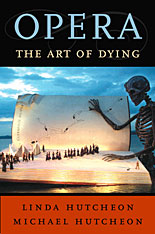 Opera: The Art of Dying
Linda Hutcheon and Michael Hutcheon
Harvard University Press, 2004 Our modern narratives of science and technology can only go so far in teaching us about the death that we must all finally face. Can an act of the imagination, in the form of opera, take us the rest of the way? Might opera, an art form steeped in death, teach us how to die, as this provocative work suggests? In Opera: The Art of Dying a physician and a literary theorist bring together scientific and humanistic perspectives on the lessons on living and dying that this extravagant and seemingly artificial art imparts.
Contrasting the experience of mortality in opera to that in tragedy, the Hutcheons find a more apt analogy in the medieval custom of contemplatio mortis--a dramatized exercise in imagining one's own death that prepared one for the inevitable end and helped one enjoy the life that remained. From the perspective of a contemporary audience, they explore concepts of mortality embodied in both the common and the more obscure operatic repertoire: the terror of death (in Poulenc's Dialogues of the Carmelites); the longing for death (in Wagner's Tristan and Isolde); preparation for the good death (in Wagner's Ring of the Nibelung); and suicide (in Puccini's Madama Butterfly). In works by Janacek, Ullmann, Berg, and Britten, among others, the Hutcheons examine how death is made to feel logical and even right morally, psychologically, and artistically--how, in the art of opera, we rehearse death in order to give life meaning.
Opera: The Undoing of Women
Catherine Clement
University of Minnesota Press, 1999 An incisive and impassioned examination of women’s treatment in opera. Catherine Clément analyzes the plots of over thirty prominent operas-Otello and Siegfried to Madame Butterfly and The Magic Flute-through the lenses of feminism and literary theory to unveil the negative messages about women in stories familiar to every opera listener.
Opera—Dead or Alive: Production, Performance and Enjoyment of Musical Theatre
Ronald E. Mitchell
University of Wisconsin Press, 1972 Playwright, director, and critic Ronald E. Mitchell offers general readers a richer understanding of traditions, terms, styles, and staging techniques of musical theater, including an introduction to seventeen examples of operas and musicals, from baroque and romantic operas to Gilbert & Sullivan, from proletarian dramas to Broadway shows like Oklahoma.
The Operas of Alessandro Scarlatti
Alessandro Scarlatti
Harvard University Press, 1983 Donald Jay Grout’s widely praised edition of the work of a key figure in the history of opera provides the most reliable version of the score for each opera, appending a translation of the libretto. These volumes are “at once practical and unquestionably scholarly” in the words of Opera Journal.
A tale of love and honor in the opera seria tradition, Tigrane was first performed at Naples in 1715. This edition of it will please performance groups and music historians alike.
The Operas of Alessandro Scarlatti
Alessandro Scarlatti
Harvard University Press, 1985 This widely praised publication of the work of a key figure in the history of opera provides the most reliable version of the score for each opera, appending a translation of the libretto. La Statira is the ninth opera available in the edition, which is under the general editorship of Donald Jay Grout.
La Statira was first performed in Rome in January 1690, to inaugurate the carnival season for that year. The opera, with libretto by Cardinal Ottoboni, recounts the story of Alexander the Great’s defeat of Darius, King of Persia, and his love for Statira, daughter of Darius. Alexander’s bravery and magnanimity were favorite subjects of operatic librettists in the seventeenth and eighteenth centuries. In his Introduction, William Holmes sketches the opera’s history and discusses performance questions.
The Operas of Alessandro Scarlatti
Alessandro Scarlatti
Harvard University Press This acclaimed edition is making available authentic versions of the works of a key figure in the history of opera.
Gli Equivoci nel Sembiante (1679), Alessandro Scarlatti’s first opera, is a comedy of mistaken identities and amorous intrigues in the pastoral mode. It was one of the most popular and widely performed works of the composer’s long career. A small cast and simple scenic requirements make it an ideal work for performances today.
In preparing the score presented here, Frank A. D’Accone compared the six extant manuscripts. His Introduction sketches the opera’s history and discusses performance practice. A translation of the libretto is appended.
The Operas of Alessandro Scarlatti
Alessandro Scarlatti
Harvard University Press This acclaimed edition of Alessandro Scarlatti’s operas is making available for the first time authentic versions of the works of one of the key figures in the history of the genre. In this fifth volume of the series, Colin Slim provides a definitive edition of Massimo Puppieno, an opera from the middle years of Scarlatti’s career. In his Introduction he discusses the opera and performance practices of the day. A translation of the libretto is appended. The presentation of the score itself meets the high standards set by this edition.
The Operas of Alessandro Scarlatti
Alessandro Scarlatti
Harvard University Press, 1980 This acclaimed edition of Alessandro Scarlatti’s operas is making available authentic versions of the works of one of the key figures in the history of opera. La Caduta (1697) is a pivotal work, bridging the composer’s middle and late stylistic periods. It is the first of several collaborations with the noted librettist Silvio Stampiglia, whose characteristic intermingling of serious and comic elements is particularly effective in this work. In her Introduction, Hermine Williams discusses the opera itself and performance practices. A translation of the libretto is provided.
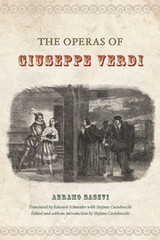 The Operas of Giuseppe Verdi
Abramo Basevi
University of Chicago Press, 2014 Abramo Basevi published his study of Verdi’s operas in Florence in 1859, in the middle of the composer’s career. The first thorough, systematic examination of Verdi’s operas, it covered the twenty works produced between 1842 and 1857—from Nabucco and Macbeth to Il trovatore, La traviata, and Aroldo. But while Basevi’s work is still widely cited and discussed—and nowhere more so than in the English-speaking world—no translation of the entire volume has previously been available. The Operas of Giuseppe Verdi fills this gap, at the same time providing an invaluable critical apparatus and commentary on Basevi’s work. As a contemporary of Verdi and a trained musician, erudite scholar, and critic conversant with current and past operatic repertories, Basevi presented pointed discussion of the operas and their historical context, offering today’s readers a unique window into many aspects of operatic culture, and culture in general, in Verdi’s Italy. He wrote with precision on formal aspects, use of melody and orchestration, and other compositional features, which made his study an acknowledged model for the growing field of music criticism. Carefully annotated and with an engaging introduction and detailed glossary by editor Stefano Castelvecchi, this translation illuminates Basevi’s musical and historical references as well as aspects of his language that remain difficult to grasp even for Italian readers. Making Basevi’s important contribution to our understanding of Verdi and his operas available to a broad audience for the first time, The Operas of Giuseppe Verdi will delight scholars and opera enthusiasts alike.
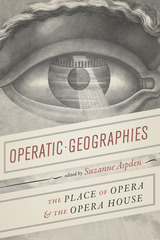 Operatic Geographies: The Place of Opera and the Opera House
Edited by Suzanne Aspden
University of Chicago Press, 2019 Since its origin, opera has been identified with the performance and negotiation of power. Once theaters specifically for opera were established, that connection was expressed in the design and situation of the buildings themselves, as much as through the content of operatic works. Yet the importance of the opera house’s physical situation, and the ways in which opera and the opera house have shaped each other, have seldom been treated as topics worthy of examination.
Operatic Geographies invites us to reconsider the opera house’s spatial production. Looking at opera through the lens of cultural geography, this anthology rethinks the opera house’s landscape, not as a static backdrop, but as an expression of territoriality. The essays in this anthology consider moments across the history of the genre, and across a range of geographical contexts—from the urban to the suburban to the rural, and from the “Old” world to the “New.” One of the book’s most novel approaches is to consider interactions between opera and its environments—that is, both in the domain of the traditional opera house and in less visible, more peripheral spaces, from girls’ schools in late seventeenth-century England, to the temporary arrangements of touring operatic troupes in nineteenth-century Calcutta, to rural, open-air theaters in early twentieth-century France. The essays throughout Operatic Geographies powerfully illustrate how opera’s spatial production informs the historical development of its social, cultural, and political functions.
 Operatic Infrastructures: Materiality and Meaning in 1890s London, Paris, and New York
Flora Willson
University of Chicago Press An exploration of the fundamental relationship between opera and urban modernity in three iconic cities: London, Paris, and New York.
At the end of the nineteenth century, London, Paris, and New York were quintessential modern metropolises and vital centers for opera. In Operatic Infrastructures, Flora Willson examines opera’s intimate entanglements with the material worlds of these cities to locate the physical roots of long-accepted ideas about the art form.
Reaching beyond histories of opera as spectacle, this book investigates the material underpinnings of opera’s existence at the century’s end: as an inter-urban, multimedia network. Operatic Infrastructures considers emergent technologies such as the telephone and the subway, but it also retrieves the hidden, forgotten, and otherwise effaced traces of systems such as storage facilities and colonial trade routes. It takes seriously the mundane aspects of materiality, from the blandest clichés of newspaper columns to the fine print of insurance certificates. In doing so, the book reveals just how far these interfaces with modern urban life reached into opera’s own systems of meaning-making and performance in the 1890s—making it impossible to demarcate neatly between “opera” and its so-called “context.” Without such operatic infrastructures, Willson shows, there would be no opera at all.
Operatic Lives
Alberto Savinio
Northwestern University Press, 1988 Writing under the pen name Alberto Savinio, Andrea de Chirico (brother of painter Giorgio) penned fourteen short portraits of such luminaries as the painter Arnold Böcklin, the poet Guillaume Apollinaire, Verdi, Stradivarius, Nostradamus, Paracelsus, Jules Verne, the bullfighter Bienvenido, Isadora Duncan, and Carlo Collodi, the creator of Pinocchio. In these biographies, Savinio's complex tone is at times warm and cordial -and, at other times, ironic to the point of malignancy.
 Operation Defensive Shield: Witnesses to Israeli War Crimes
Edited by Muna Hamzeh and Todd June
Pluto Press, 2003 On March 29, 2002 the Israeli army launched Operation Defensive Shield, the largest military offensive against Palestinian civilians since the 1948 Arab-Israeli War. During the operation, the military used the most advanced weaponry at its disposal: Merkava tanks, Apache attack helicopters and F-15 fighter jets. When the operation ended on April 21, Israel had destroyed the Palestinian economic and social infrastructure, leveled large swathes of residential area, killed 220 people, injured hundreds more and arrested thousands.
This book documents these events through a collection of electronic witness narratives written by Palestinians who were under attack and by Israeli and international peace activists who witnessed the results of these attacks. Deeply moving and courageous, these narratives offer a uniquely powerful and intimate account of the daily reality for Palestinians who endured Ariel Sharon's military strategy, and the death and destruction that strategy has caused throughout the Occupied Territories.
Most important, the witnesses' voices bring to life the aggressive nature of this strategy -- they belie the noble motives ascribed to Sharon and those in his government and military who designed and carried it out. The editors argue that Operation Defensive Shield is a prelude to Israel's ethnic cleansing of the Palestinians. They provide historical context, a chronology, and an analysis of the conflict that situates the horror of these days in their proper perspective.
Operation Defensive Shield: Witnesses to Israeli War Crimes is an essential record for those who want to understand what happened in the West Bank in the spring of 2002, and what it portends for the future of the region.
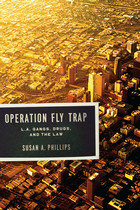 Operation Fly Trap: L. A. Gangs, Drugs, and the Law
Susan A. Phillips
University of Chicago Press, 2012 In 2003, an FBI-led task force known as Operation Fly Trap attempted to dismantle a significant drug network in two Bloods-controlled, African American neighborhoods in Los Angeles. The operation would soon be considered an enormous success, noted for the precision with which the task force targeted and removed gang members otherwise entrenched in larger communities. In Operation Fly Trap, Susan A. Phillips questions both the success of this operation and the methods used to conduct it. Based on in-depth ethnographic research with Fly Trap participants, Phillips’s work brings together police narratives, crime statistics, gang cultural histories, and extensive public policy analysis to examine the relationship between state persecution and the genesis of violent social systems.
Crucial to Phillips’s contribution is the presentation of the voices and perspectives of both the people living in impoverished communities and the agents that police them. Phillips positions law enforcement surveillance and suppression as a critical point of contact between citizen and state. She tracks the bureaucratic workings of police and FBI agencies and the language, ideologies, and methods that prevail within them, and shows how gangs have adapted, seeking out new locations, learning to operate without hierarchies, and moving their activities more deeply underground. Additionally, she shows how the targeted efforts of task forces such as Fly Trap wreak sweeping, sustained damage on family members and the community at large. Balancing her roles as even-handed reporter and public scholar, Phillips presents multiple flaws within the US criminal justice system and builds a powerful argument that many law enforcement policies in fact nurture, rather than prevent, violence in American society.
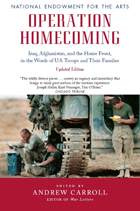 Operation Homecoming: Iraq, Afghanistan, and the Home Front, in the Words of U.S. Troops and Their Families, Updated Edition
edited by Andrew Carroll
University of Chicago Press, 2008 Operation Homecoming is the result of a major initiative launched by the National Endowment for the Arts to bring distinguished writers to military bases to inspire U.S. soldiers, sailors, marines, airmen, and their families to record their wartime experiences. Encouraged by such authors as Tom Clancy, Tobias Wolff, and Marilyn Nelson, American military personnel and their loved ones wrote candidly about what they saw, heard, and felt while in Afghanistan and Iraq, as well as on the home front. These unflinching eyewitness accounts, private journals, short stories, and letters offer an intensely revealing look into extraordinary lives and are an unforgettable contribution to wartime literature.
“One of the chanted mantras of our time is, ‘But I support the troops.’ Terrific. Now read Operation Homecoming to find out who they are, what they think, feel, want, have learned, won and lost in Iraq and Afghanistan.”—Daniel Henninger, Wall Street Journal
“This anthology is the honest voice of war. . . . In the end, they are all one voice, a voice we must hear, and must not forget.”—Jeff Shaara
“These voices are stirring, chilling, and unforgettable.”—Bobbie Ann Mason
“[Captures] what journalists cannot, no matter how close they get—firsthand accounts from the warriors and the families they leave behind.”—Chicago Tribune
 Operation Mind: A Brief Documentary Account of the House Committee on Un-American Activities. And Why It Matters Now.
Natalie Zemon Davis and Elizabeth Douvan
Disobedience Press, 2025 Natalie Zemon Davis and Elizabeth Douvan’s Operation Mind is a body of evidence, a prophetic warning, and a call to action about the urgency of doing all we can to prevent thought control in America. In 1952, this meticulously researched pamphlet documented the House Committee on Un-American Activities’ attacks and impact. The HUAC abused its charge to intimidate and silence academics, union members, social critics, scientists, artists, teachers, political opponents, rabbis and other religious leaders, to make them appear suspect and “un-American” in the eyes of the American people.
The 2025 reprint of Operation Mind offers a foreword by comparatist Silke-Maria Weineck, an essay by historian Alan Wald connecting Operation Mind’s history of McCarthyism with present-day attacks on academic freedom, and a new (2023) introduction to the text by Natalie Zemon Davis.
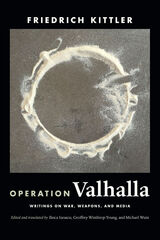 Operation Valhalla: Writings on War, Weapons, and Media
Friedrich Kittler. Edited and translated by Ilinca Iurascu, Geoffrey Winthrop-Young, and Michael Wutz
Duke University Press, 2021 Operation Valhalla collects eighteen texts by German media theorist Friedrich Kittler on the close connections between war and media technology. In these essays, public lectures, interviews, literary analyses, and autobiographical musings, Kittler outlines how war has been a central driver of media's evolution, from Prussia's wars against Napoleon to the so-called War on Terror. Covering an eclectic array of topics, he charts the intertwined military and theatrical histories of the searchlight and the stage lamp, traces the microprocessor's genealogy back to the tank, shows how rapid-fire guns brought about new standards for optics and acoustics, and reads Thomas Pynchon's Gravity's Rainbow to upset established claims about the relationship between war, technology, and history in the twentieth century. Throughout, Operation Valhalla foregrounds the outsize role of war in media history as well as Kittler's importance as a daring and original thinker.
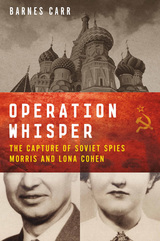 Operation Whisper: The Capture of Soviet Spies Morris and Lona Cohen
Barnes Carr
University Press of New England, 2016 Meet Morris and Lona Cohen, an ordinary-seeming couple living on a teacher’s salary in a nondescript building on the East Side of New York City. On a hot afternoon in the autumn of 1950, a trusted colleague knocked at their door, held up a finger for silence, then began scribbling a note: Go now. Leave the lights on, walk out, don’t look back. Born and raised in the Bronx and recruited to play football at Mississippi State, Morris Cohen fought for the Loyalists in the Spanish Civil War and with the U.S. Army in World War II. He and his wife, Lona, were as American as football and fried chicken, but for one detail: they’d spent their entire adult lives stealing American military secrets for the Soviet Union. And not just any military secrets, but a complete working plan of the first atomic bomb, smuggled direct from Los Alamos to their Soviet handler in New York. Their associates Julius and Ethel Rosenberg, who accomplished far less, had just been arrested, and the prosecutor wanted the death penalty. Did the Cohens wish to face the same fate? Federal agents were in the neighborhood, knocking on doors, getting close. So get out. Take nothing. Tell no one. In Operation Whisper, Barnes Carr tells the full, true story of the most effective Soviet spy couple in America, a pair who vanished under the FBI’s nose only to turn up posing as rare book dealers in London, where they continued their atomic spying. The Cohens were talented, dedicated, worldly spies—an urbane, jet-set couple loyal to their service and their friends, and very good at their work. Most people they met seemed to think they represented the best of America. The Soviets certainly thought so.
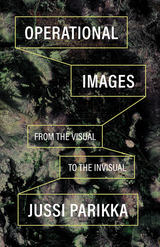 Operational Images: From the Visual to the Invisual
Jussi Parikka
University of Minnesota Press, 2023 An in-depth look into the transformation of visual culture and digital aesthetics
First introduced by the German filmmaker Harun Farocki, the term operational images defines the expanding field of machine vision. In this study, media theorist Jussi Parikka develops Farocki’s initial concept by considering the extent to which operational images have pervaded today’s visual culture, outlining how data technologies continue to develop and disrupt our understanding of images beyond representation. Charting the ways that operational images have been employed throughout a variety of fields and historical epochs, Parikka details their many roles as technologies of analysis, capture, measurement, diagramming, laboring, (machine) learning, identification, tracking, and destruction. He demonstrates how, though inextricable from issues of power and control, operational images extend their reach far beyond militaristic and colonial violence and into the realms of artificial intelligence, data, and numerous aspects of art, media, and everyday visual culture. Serving as an extensive guide to a key concept in contemporary art, design, and media theory, Operational Images explores the implications of machine vision and the limits of human agency. Through a wealth of case studies highlighting the areas where imagery and data intersect, this book gives us unprecedented insight into the ever-evolving world of posthuman visuality.
Cover alt text: Satellite photo on which white title words appear in yellow boxes. Yellow lines connect the boxes.
 Operationism in Psychology: An Epistemology of Exploration
Uljana Feest
University of Chicago Press, 2025 Analyzes psychological research to offer insights into how methodological and ontological questions are intertwined.
Psychology has seen an intense debate about the lack of replicability of results in recent years. Uljana Feest uses history and philosophy of science to shed light on the nature of experiment in psychology in general, but her aim reaches beyond debates about replication to provide a novel and comprehensive analysis of the investigative process in experimental psychology. She shows that the central unit of analysis for our epistemological considerations of psychological research should be not theories but, rather, concepts. Her guiding question is: How do psychological concepts figure in the experimental exploration of the objects of psychological research? For Feest, this question has two intertwined aspects: What role do concepts play in the design of experiments and the production of data, and how can concepts be revised or adapted in response to experimental results. Following the historical trajectory of debates about operationism in psychology, she argues that this debate was not concerned with philosophical theories of meaning but, instead, closely connected to the investigative practices of experimental psychologists. The book offers a broad analytical framework for thinking philosophically about the investigative process in psychology, including analyses of the relationship between data and phenomena in psychology, the relationship between folk- and scientific psychological concepts, the relationship between genuine results and experimental artifacts, and the nature and exploration of psychological kinds.
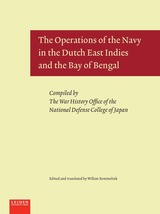 The Operations of the Navy in the Dutch East Indies and the Bay of Bengal
Edited by Willem Remmelink
Leiden University Press, 2018 "Between 1966 and 1980, the War History Office of the National Defense College of Japan (now the Center for Military History of the National Institute for Defense Studies) published the 102-volume Senshi S.sho (War History Series). These volumes give a detailed account of the operations of the Imperial Japanese Army and Imperial Japanese Navy during the Second World War. The present volume, The Operations of the Navy in the Dutch East Indies and the Bay of Bengal, volume 26 of the series, describes the Japanese Navy’s role in the campaign to gain control over the Indonesian archipelago – at that time the largest transoceanic landing operation in the military history of the world. It includes, among others, the first complete Japanese analysis of the Battle of the Java Sea, a much-debated battle that ended disastrously for the Allies and opened the way to Java for the Japanese. "
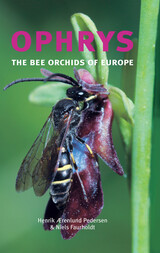 Ophrys: The Bee Orchids of Europe
Henrik Ærenlund Pedersen and Niels Faurholdt
Royal Botanic Gardens, Kew, 2007 "The genus Ophrys, the charismatic bee orchids and their relatives, are one of the most diverse and biologically fascinating groups of plants to be encountered in Europe, particularly the Mediterranean.
Ophrys – the Bee Orchids of Europe is an easy to use, comprehensive introduction to the plants found in Europe. It can be used as a field guide (with keys, descriptions and numerous colour photographs) and a standard reference (with chapters on structure, biology, evolution and conservation). The chapter by Richard Manuel gives ample guidelines for cultivation for growers, and is especially helpful for conservationists introducing plants back into the wild.
The classification is based on a broad species concept, and offers an alternative to the finely split classifications of the genus that prevail in most recent field guides.
Finally, the chapter ‘recommended Ophrys excursions’ is ideal for planning field trips."
 The Opinionated University: Academic Freedom, Diversity, and the Myth of Neutrality in American Higher Education
Brian Soucek
University of Chicago Press, 2026 Why institutional neutrality is nothing but an illusion.
Can a university ever truly be neutral in today’s social and political climate? Pushing against the tide of universities increasingly pledging to stay neutral about contentious issues, law professor Brian Soucek argues that their promises are doomed to fail—universities can’t help being opinionated.
In The Opinionated University, Soucek shows that neutrality is a myth by taking a deep dive into several prominent campus controversies of the day, including diversity, equity, and inclusion (DEI) efforts and restrictions on campus speech and protest. Each issue requires universities to choose a side in what they do, if not also in what they say. In everything from curricular and admissions decisions to their response to outside rankings and their evaluation of faculty, universities express the values at the heart of their mission. Soucek argues that those pushing for neutrality are only preventing universities from standing up for their values, whether in today’s current moment of crisis or in periods of political calm.
Both timely and deeply engaging, The Opinionated University calls on universities to dispense with neutrality as a governing principle and focus instead on what their mission should be, and who should determine it.
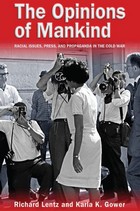 The Opinions of Mankind: Racial Issues, Press, and Propaganda in the Cold War
Richard Lentz and Karla K. Gower
University of Missouri Press, 2011 During the Cold War, the Soviets were quick to publicize any incident of racial hostility in the United States. Since violence by white Americans against minorities was the perfect foil to America’s claim to be defenders of freedom, news of these occurrences was exploited to full advantage by the Russians. But how did the Soviets gain primary knowledge of race riots in small American towns? Certainly, the Soviets had reporters stationed stateside, in big cities like New York, but research reveals that the majority of their information came directly from U.S. media sources.
Throughout this period, the American press provided the foreign media with information about racially charged events in the United States. Such news coverage sometimes put Washington at a disadvantage, making it difficult for government officials to assuage foreign reactions to the injustices occurring on U.S. soil. Yet in other instances, the domestic press helped to promote favorable opinions abroad by articulating themes of racial progress. While still acknowledging racial abuses, these press spokesmen asserted that the situation in America was improving. Such paradoxical messages, both aiding and thwarting the efforts of the U.S. government, are the subject of The Opinions of Mankind: Racial Issues, Press, and Propaganda in the Cold War.
The study, by scholars Richard Lentz and Karla K. Gower, describes and analyzes the news discourse regarding U.S. racial issues from 1946 to 1965. The Opinions of Mankindnot only delves into the dissemination of race-related news to foreign outlets but also explores the impact foreign perceptions of domestic racism had on the U.S. government and its handling of foreign relations during the period. What emerges is an original, insightful contribution to Cold War studies. While other books examine race and foreign affairs during this period of American history, The Opinions of Mankind is the first to approach the subject from the standpoint of press coverage and its impact on world public opinion.
This exhaustively researched and compellingly written volume will appeal to media scholars, political historians, and general readers alike. By taking a unique approach to the study of this period, The Opinions of Mankind presents the workings behind the battles for public opinion that took place between 1946 and 1965.
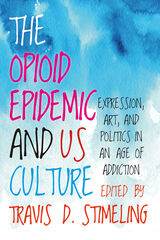 The Opioid Epidemic and US Culture: Expression, Art, and Politics in an Age of Addiction
Travis D. Stimeling
West Virginia University Press, 2020 The Opioid Epidemic and US Culture brings a new set of perspectives to one of the most pressing contemporary topics in Appalachia and the nation as a whole. A project aimed both at challenging dehumanizing attitudes toward those caught in the opioid epidemic and at protesting the structural forces that have enabled it, this edited volume assembles a multidisciplinary community of scholars and practitioners to consider the ways that people have mobilized their creativity in response to the crisis. From the documentary The Wild and Wonderful Whites of West Virginia to the role of cough syrup in mumble rap, and from a queer Appalachian zine to protests against the Sackler family’s art-world philanthropy, the essays here explore the intersections of expressive culture, addiction, and recovery.
Written for an audience of people working on the front lines of the opioid crisis, the book is essential reading for social workers, addiction counselors, halfway house managers, and people with opioid use disorder. It will also appeal to the community of scholars interested in understanding how aesthetics shape our engagement with critical social issues, particularly in the fields of literary and film criticism, museum studies, and ethnomusicology.
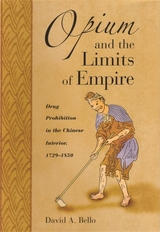 Opium and the Limits of Empire: Drug Prohibition in the Chinese Interior, 1729–1850
David Anthony Bello
Harvard University Press, 2005 The British opium trade along China's seacoast has come to symbolize China's century-long descent into political and social chaos. In the standard historical narrative, opium is the primary medium through which China encountered the economic, social, and political institutions of the West. Opium, however, was not a Sino-British problem confined to southeastern China. It was, rather, an empire-wide crisis, and its spread among an ethnically diverse populace created regionally and culturally distinct problems of control for the Qing state.
This book examines the crisis from the perspective of Qing prohibition efforts. The author argues that opium prohibition, and not the opium wars, was genuinely imperial in scale and is hence much more representative of the actual drug problem faced by Qing administrators. The study of prohibition also permits a more comprehensive and accurate observation of the economics and criminology of opium. The Qing drug traffic involved the domestic production, distribution, and consumption of opium. A balanced examination of the opium market and state anti-drug policy in terms of prohibition reveals the importance of the empire's landlocked western frontier regions, which were the domestic production centers, in what has previously been considered an essentially coastal problem.
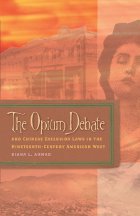 The Opium Debate and Chinese Exclusion Laws in the Nineteenth-Century American West
Diana L. Ahmad
University of Nevada Press, 2011
America’s current "war on drugs" is not the nation’s first. In the mid-nineteenth century, opium-smoking was decried as a major social and public health problem, especially in the West. Although China faced its own epidemic of opium addiction, only a very small minority of Chinese immigrants in America were actually involved in the opium business. It was in Anglo communities that the use of opium soon spread and this growing use was deemed a threat to the nation’s entrepreneurial spirit and to its growing mportance as a world economic and military power. The Opium Debate examines how the spread of opium-smoking fueled racism and created demands for the removal of the Chinese from American life. This meticulously researched study of the nineteenth-century drug-abuse crisis reveals the ways moral crusaders linked their antiopium rhetoric to already active demands for Chinese exclusion. Until this time, anti-Chinese propaganda had been dominated by protests against the economic and political impact of Chinese workers and the alleged role of Chinese women as prostitutes. The use of the drug by Anglos added another reason for demonizing Chinese immigrants. Ahmad describes the disparities between Anglo-American perceptions of Chinese immigrants and the somber realities of these people’s lives, especially the role that opium-smoking came to play in the Anglo-American community, mostly among middle- and upper-class women. The book offers a brilliant analysis of the evolution of the Chinese Exclusion Act of 1882, plus important insights into the social history of the nineteenth-century West, the culture of American Victorianism, and the rhetoric of racism in American politics.
 Opium in the Balkans: Cultivation, Processing, and Trade during the Interwar Period
Vladan Jovanović
Central European University Press, 2025 Macedonian raw opium was a highly sought-after pharmaceutical raw material. This book focuses on its cultivation and production, and the trafficking of opium-based narcotics. Vladan Jovanović offers fresh insight into a neglected and marginalized subject, tracing and contextualizing both the licit and the illicit processing and trade of opium alkaloids from the Western Balkans through Turkey, and on to the rest of the world between the two World Wars. His approach is to explore the subject both from the top down, involving the League of Nations and politicians and diplomats, as well as from the bottom up, through the analysis of the activities of smugglers, police, and ordinary people who participated in the production and distribution of opium. The author describes the process of relocating the illegal processing industry from Turkey and Bulgaria to Yugoslavia. He insightfully shows the implicit continuity of relations between the former Ottoman Empire and the newly constituted Yugoslav state in the form of bilateral political agreements. He pays special attention to the illegal activities within the legal pharmaceutical industry and also exposes the role of criminal networks, which he situates in the appropriate political and social context. The exploration of this sensitive historical subject extends to other Balkan countries, along with Turkey, Western Europe, and the United States.
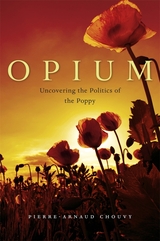 Opium: Uncovering the Politics of the Poppy
Pierre-Arnaud Chouvy
Harvard University Press, 2010 Known to the Greeks as opos or opion, as afiun in Persian and Arabic, and fuyung in Chinese, opium is at once a palliative and a poison. Its exotic origins, its literary associations, and the properties that are, often erroneously, attributed to it have ensured an ongoing air of mystery.
Pierre-Arnaud Chouvy reveals the long and fascinating history of a powerful and addictive drug and explores the changing fortunes of the modern-day illicit opium trade, especially in the remote regions of Asia. He answers key questions: Why have anti-drug policies failed despite four decades of increasing effort? And what are the shortcomings and limitations of forced eradication, alternative development, "silver bullets," and other quick fixes? In answering these questions, Chouvy draws upon geography, anthropology, politics, and development studies. He shows that the history of opium production is unexpectedly linked to the history of Afghanistan.
A compelling account of a narcotic as old as humanity, Opium offers powerful insights into the complex politics and economics of the poppy in the world today.
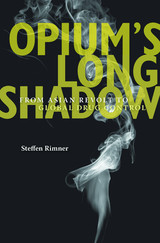 Opium’s Long Shadow: From Asian Revolt to Global Drug Control
Steffen Rimner
Harvard University Press, 2018 The League of Nations Advisory Committee on the Traffic in Opium and Other Dangerous Drugs, created in 1920, culminated almost eight decades of political turmoil over opium trafficking, which was by far the largest state-backed drug trade in the age of empire. Opponents of opium had long struggled to rein in the profitable drug. Opium’s Long Shadow shows how diverse local protests crossed imperial, national, and colonial boundaries to gain traction globally and harness public opinion as a moral deterrent in international politics after World War I.
Steffen Rimner traces the far-flung itineraries and trenchant arguments of reformers—significantly, feminists and journalists—who viewed opium addiction as a root cause of poverty, famine, “white slavery,” and moral degradation. These activists targeted the international reputation of drug-trading governments, first and foremost Great Britain, British India, and Japan, becoming pioneers of the global political tactic we today call naming and shaming. But rather than taking sole responsibility for their own behavior, states in turn appropriated anti-drug criticism to shame fellow sovereigns around the globe. Consequently, participation in drug control became a prerequisite for membership in the twentieth-century international community. Rimner relates how an aggressive embrace of anti-drug politics earned China and other Asian states new influence on the world stage.
The link between drug control and international legitimacy has endured. Amid fierce contemporary debate over the wisdom of narcotics policies, the 100-year-old moral consensus Rimner describes remains a backbone of the international order.
Oppenheimer Is Watching Me: A Memoir
Jeff Porter
University of Iowa Press, 2007 When he discovers that his father worked on missiles for a defense contractor, Jeff Porter is inspired to revisit America’s atomic past and our fallen heroes, in particular J. Robert Oppenheimer, the father of the atomic bomb. The result, Oppenheimer Is Watching Me, takes readers back to the cold war, when men in lab coats toyed with the properties of matter and fears of national security troubled our sleep. With an eye for strange symmetries, Porter traces how one panicky moment shaped the lives of a generation.
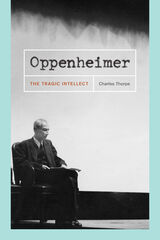 Oppenheimer: The Tragic Intellect
Charles Thorpe
University of Chicago Press, 2007 At a time when the Manhattan Project was synonymous with large-scale science, physicist J. Robert Oppenheimer (1904–67) represented the new sociocultural power of the American intellectual. Catapulted to fame as director of the Los Alamos atomic weapons laboratory, Oppenheimer occupied a key position in the compact between science and the state that developed out of World War II. By tracing the making—and unmaking—of Oppenheimer’s wartime and postwar scientific identity, Charles Thorpe illustrates the struggles over the role of the scientist in relation to nuclear weapons, the state, and culture.
A stylish intellectual biography, Oppenheimer maps out changes in the roles of scientists and intellectuals in twentieth-century America, ultimately revealing transformations in Oppenheimer’s persona that coincided with changing attitudes toward science in society.
“This is an outstandingly well-researched book, a pleasure to read and distinguished by the high quality of its observations and judgments. It will be of special interest to scholars of modern history, but non-specialist readers will enjoy the clarity that Thorpe brings to common misunderstandings about his subject.”—Graham Farmelo, Times Higher Education Supplement “A fascinating new perspective. . . . Thorpe’s book provides the best perspective yet for understanding Oppenheimer’s Los Alamos years, which were critical, after all, not only to his life but, for better or worse, the history of mankind.”—Catherine Westfall, Nature
 Oppian. Colluthus. Tryphiodorus
Oppian. Colluthus. Tryphiodorus
Harvard University Press Imperial Greek epos.
Oppian of Cilicia flourished in the latter half of the second century, and dedicated his Fishing (in five books) to Antoninus, presumably Marcus Aurelius. It deals with the habits and characteristics of fish as well as giving instructions for fishing: if not exactly poetical, it contains a great deal of curious information. The Chase, dedicated to Caracalla, is an inferior composition and may even be the work of a Syrian imitator. The first book gives an appreciation of the huntsman’s horses and hounds, the three remaining being devoted to the hunting of wild animals, from the lion to the hare. This edition is equipped with extensive zoological and ichthyological notes.
This volume also includes the extant work of two epic poets of Egypt who wrote in the second half of the fifth century under the influence of Nonnus. The Rape of Helen of Colluthus in 394 lines is a pleasant account of the Judgement of Paris and Helen’s elopement with him; Tryphiodorus (papyri reveal the correct spelling to be Triphiodorus) deals with The Taking of Troy in 691 lines, beginning with the Wooden Horse and ending with the sacrifice of Polyxena.
Opportunity and Accomplishment in Secondary Education
Paul H. Hanus
Harvard University Press Endeavor to improve our secondary education has been and is most marked in the public-high-school field, so that Professor Hanus’s Inglis Lecture treats only this side of the subject. He presents in outline certain agencies and the procedures which have functioned in bringing out contemporary opportunity for secondary education to its present stage of development; and he makes several characteristically potent suggestions for still further rising the standard of accomplishment in our schools. In this latest lecture Professor Hanus once more evinces that power to stimulate thought which long ago made him a leader in American education.
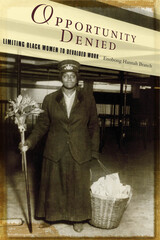 Opportunity Denied: Limiting Black Women to Devalued Work
Branch, Enobong
Rutgers University Press, 2011 Blacks and Whites. Men and Women. Historically, each group has held very different types of jobs. The divide between these jobs was stark—clean or dirty, steady or inconsistent, skilled or unskilled. In such a rigidly segregated occupational landscape, race and gender radically limited labor opportunities, relegating Black women to the least desirable jobs. Opportunity Denied is the first comprehensive look at changes in race, gender, and women’s work across time, comparing the labor force experiences of Black women to White women, Black men and White men. Enobong Hannah Branch merges empirical data with rich historical detail, offering an original overview of the evolution of Black women’s work. From free Black women in 1860 to Black women in 2008, the experience of discrimination in seeking and keeping a job has been determinedly constant. Branch focuses on occupational segregation before 1970 and situates the findings of contemporary studies in a broad historical context, illustrating how inequality can grow and become entrenched over time through the institution of work.
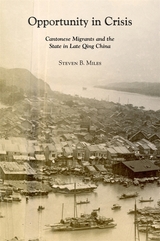 Opportunity in Crisis: Cantonese Migrants and the State in Late Qing China
Steven B. Miles
Harvard University Press Opportunity in Crisis explores the history of late Qing Cantonese migration along the West River basin during war and reconstruction and the impact of those developments on the relationship between state and local elites on the Guangxi frontier. By situating Cantonese upriver and overseas migration within the same framework, Steven Miles reconceives the late Qing as an age of Cantonese diasporic expansion rather than one of state decline.
The book opens with crisis: rising levels of violence targeting Cantonese riverine commerce, much of it fomented by a geographically mobile Cantonese underclass. Miles then narrates the ensuing history of a Cantonese rebel regime established in Guangxi in the wake of the Taiping uprising. Subsequent chapters discuss opportunities created by this crisis and its aftermath and demonstrate important continuities and changes across the mid-century divide. With the reassertion of Qing control, Cantonese commercial networks in Guangxi expanded dramatically and became an increasingly important source of state revenue. Through its reliance on Hunanese and Cantonese to reconquer Guangxi, the Qing state allowed these diasporic cohorts more flexibility in colonizing the provincial administration and examination apparatus, helping to recreate a single polity on the eve of China’s transition from empire to nation-state.
|
|
